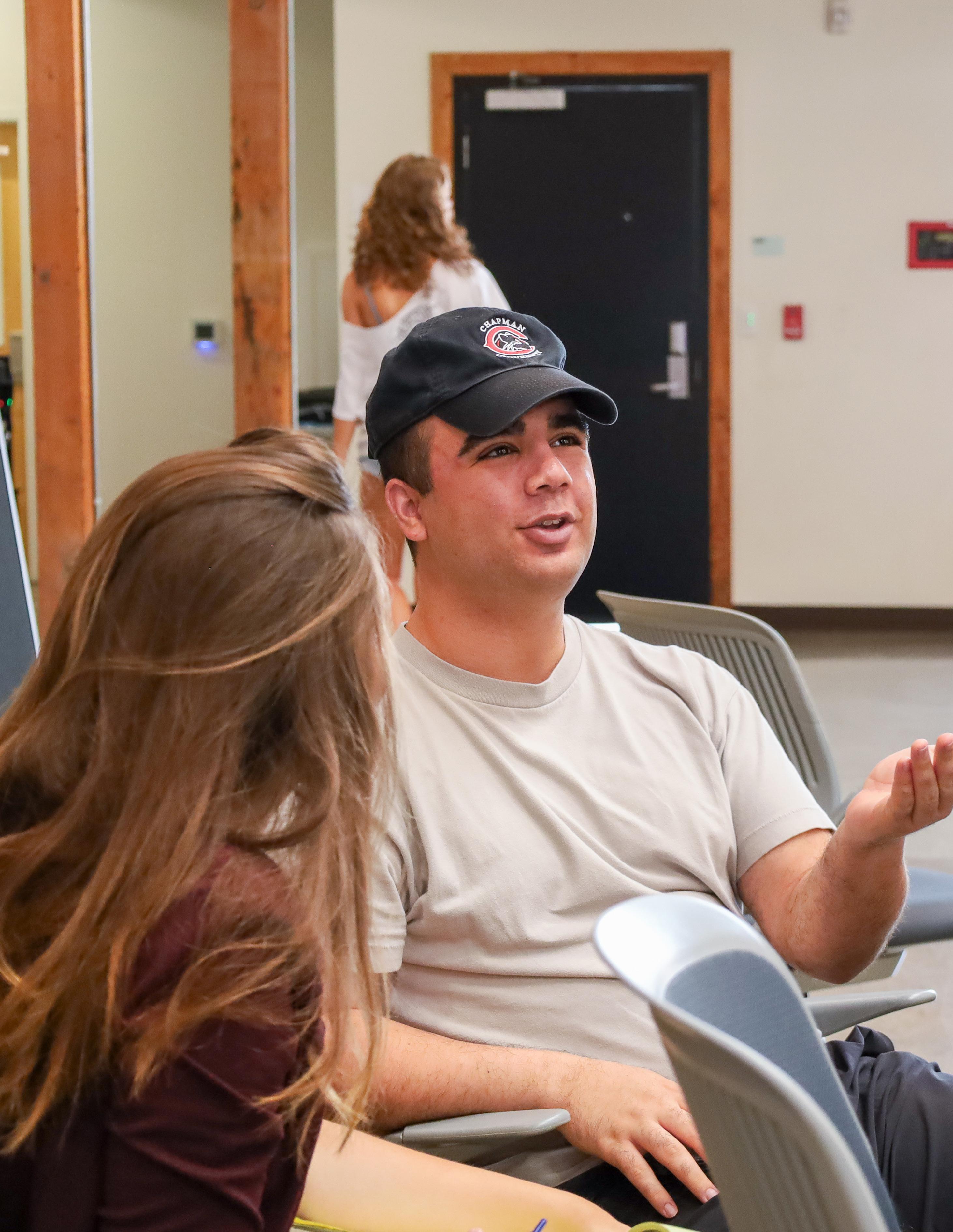

From Dorm rooms to Boardrooms






From Dorm rooms to Boardrooms



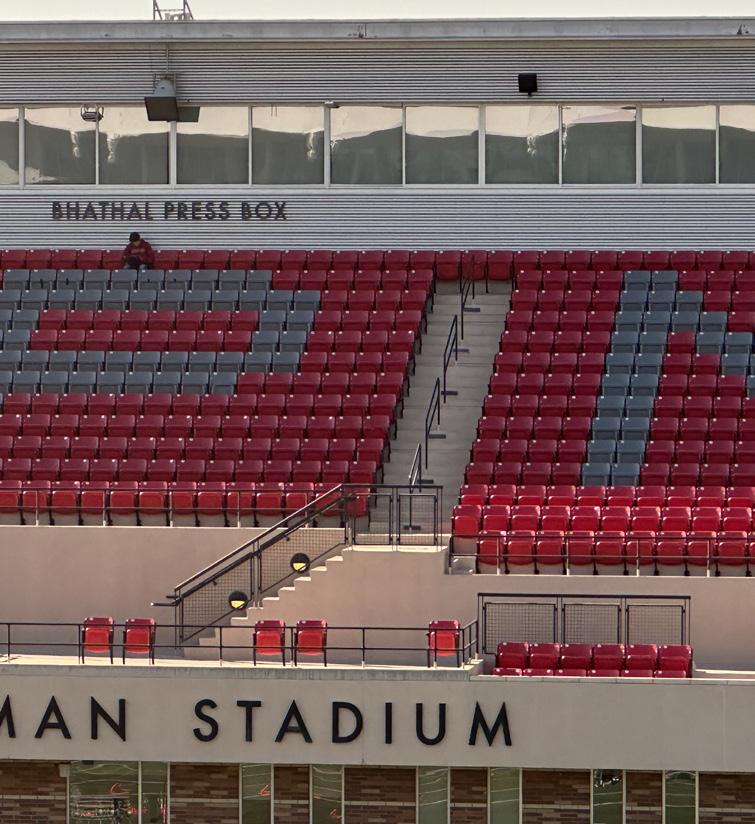


By Ellie Bickelhaupt
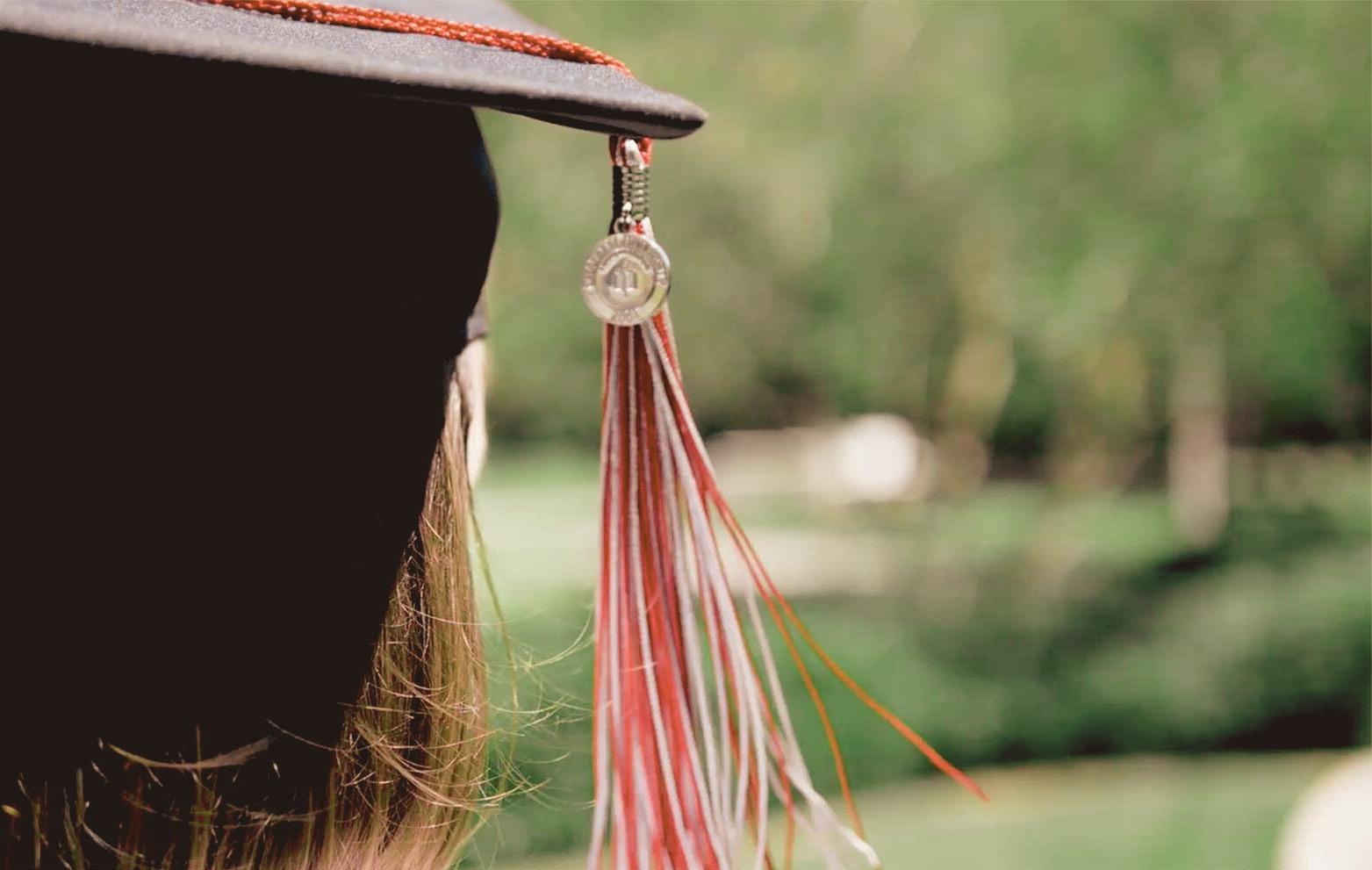

Editors
Gwen Buchanan
Brian Guevara
Writers
Ellie Bickelhaupt
Gwen Buchanan
Lauren Cavalieri
Brian Guevara
Lindsey Heinecken
Nicole Kavros
Jackson Kelm
Caroline Linton
Designers
Chief Designer
Cameron Scherer
Jackson Kelm
Holland Hatch
MaKenna Kunimura
Social Media Manager
Kade McKenna
Kajal Reddy
Cameron Scherer
Sofia Silva
Camille Simmons
Isabel Torres
Ashlyn Woo
Kajal Reddy
Allie Leichter
Riley Scanlan
Lindsey Heinecken
Lauren Contreras
Nicole Kavros
By Kajal Reddy, Lauren Cavalieri, and Kade McKenna
Classes aren’t cutting it anymore. Some students are not just preparing for their careers; they’re already living them.
Peter Cline was one of those students. Like many entrepreneurs, he was ambitious from the start.
“I didn’t wait for the perfect moment, I just started,” the class of 2023 alum said.
Cline founded Boots to Books, a nonprofit that helps veterans transition to civilian careers by offering job training and mentorship.
For many students, the journey to entrepreneurship begins with a spark of inspiration and a passion to build something new.
While Chapman provides a wealth of resources, connections make a real impact. It’s not just about what students know—it’s about who they know.
Eli Schechter, class of 2023, found that Chapman’s tight-knit community of students, alumni and mentors is one of its greatest strengths.
“What I’ve learned is that you can’t do it alone,” said Schechter, founder of SafeTitle, a startup that simplifies the title and escrow process for home buyers.


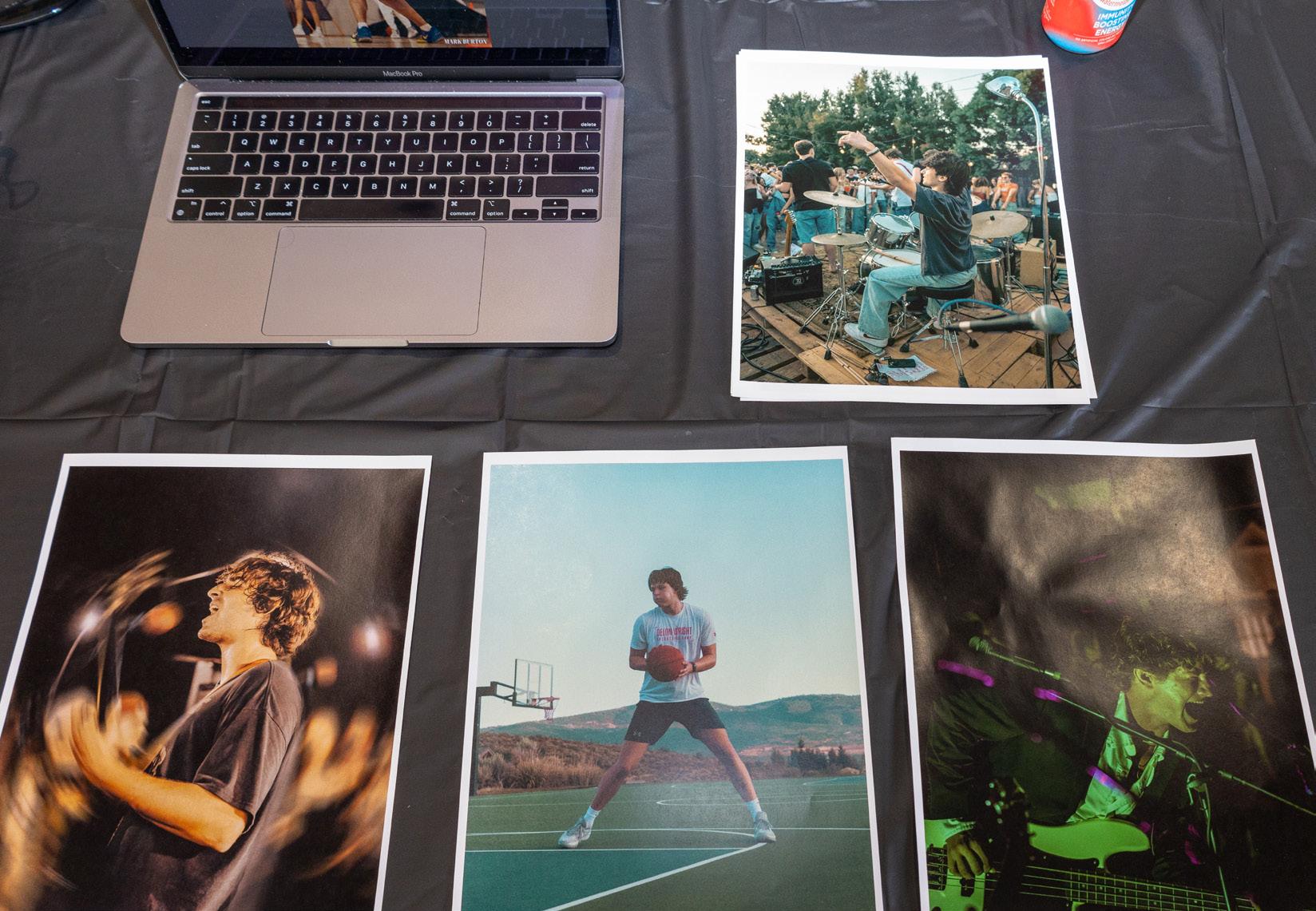
NoLmtVisuals tabling at the CEO Mixer.
Director of the Leatherby Center for Entrepreneurship, Cynthia West.
Photo courtesy of Nia McDuffie

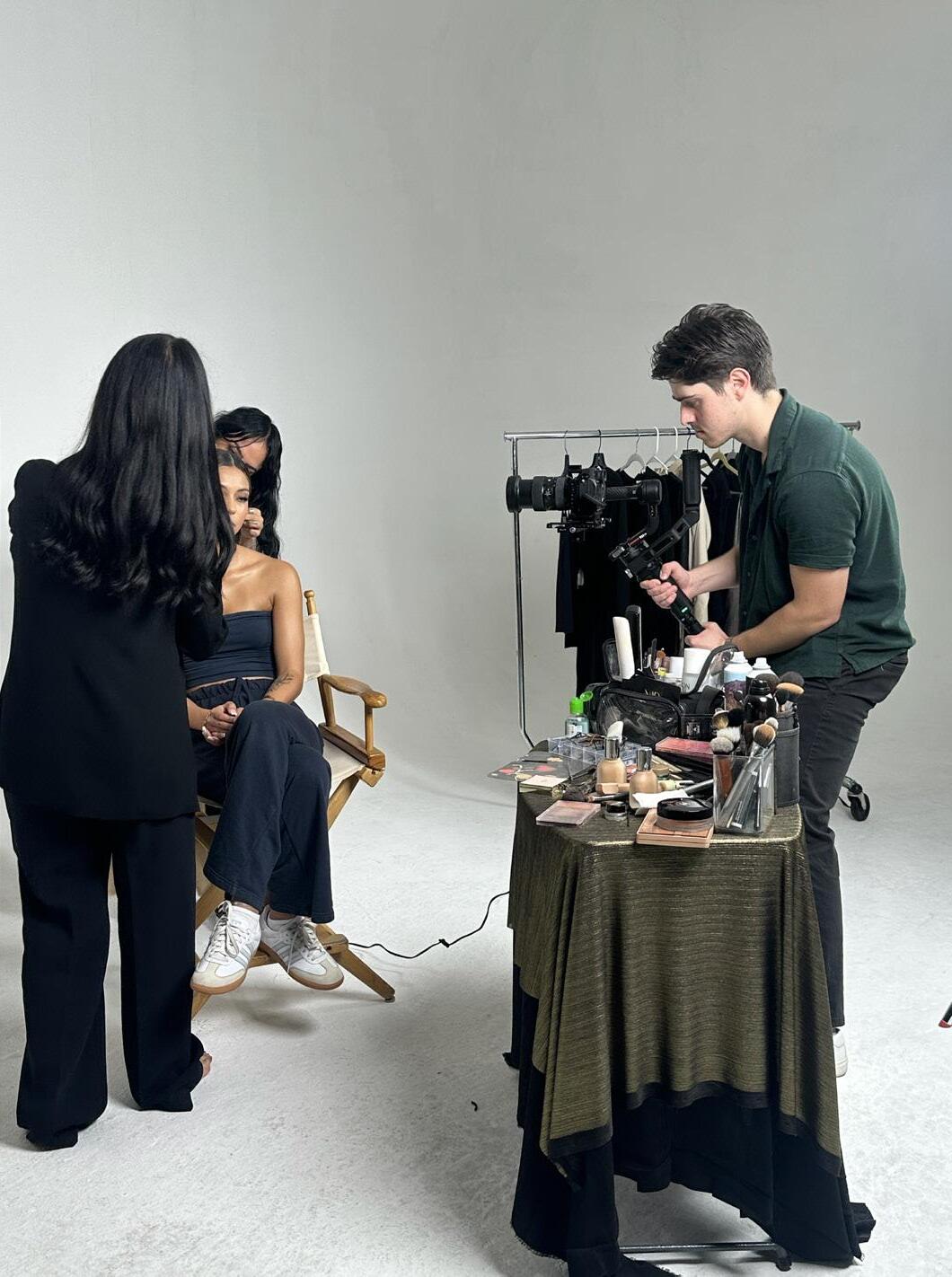
“There’s always someone who can help, whether it’s advice or just knowing the right people.”
He credits his success to the many mentors who have supported him along the way and emphasizes the importance of collaboration in the startup world.
“Mentorship has been invaluable in helping me navigate challenges, and I think that’s something Chapman really fosters in its community,” he said.
Wyatt Lister, a junior majoring in finance
at Chapman, turned his hobby into a selffunded business: freelance photography service NoLmtVisuals.
“I started NoLmtVisuals to expand my creativity to a new level,” said Lister. “I was inspired to pursue something new and create visuals that tell powerful stories.”
He said his biggest achievements have been working with NBA players like Scottie Barnes and Rayjon Tucker, as well as collaborating with numerous professional and overseas athletes.
While Lister’s creative journey is focused on visuals and athletes, another Chapman student, Chiron Martini, has been channeling his skills into expanding his creative agency.
His business, Martini Visuals, is a fullservice content agency that helps brands grow by producing high-quality video content.
“I had been a freelance videographer and editor for years before starting Martini Visuals,” said Martini, a senior business major. “I wanted to build a business around providing that service to clients, helping them scale with high-quality content.”
Chiron attributes much of his success to his professors at Chapman, who have offered him advice and guidance. He has also collaborated with Chapman’s Master of Science in Real Estate program, adding to his client list.
Kaleb Triber Cohen, a sophomore majoring in film production, has channeled his passion into two distinct ventures. He runs KTapes, a sports mixtape business, while also building his music career under his own name.
He founded KTapes to offer a comprehensive range of services, including filming, directing, editing, graphic design and photography for

clients across the country, such as trainers, athletes, schools and businesses.
“I started making sports mixtapes during Covid because I wanted to bring athletes together when we couldn’t play,” Cohen recalls. “That turned into a full-blown business that expanded to other industries, including music.”
At Dodge College, one of the main student businesses that can be found are rental houses. Rental houses supply film sets with the necessary gear for their shoots.
Rental company Bluff Lighting got its start at Dodge College Back in 2007. CEO and Lead Rental Agent Drew Galibrath, a 2009 Chapman graduate, began Bluff as a small operation before the Marion Knotts Studios were built.
“We had our back porch and our front porch full of lights and gear, and we started using it on our student projects, and they’re renting into other productions that were shooting,” Said Galibrath.
Today, Bluff Lighting has expanded significantly, prompting a move to a larger warehouse earlier this year to keep up with its growing inventory.

Galibrath credits much of the company’s success to the strong foundation he built during his time at Chapman.
“You have that network when you get out because of the fact that you’re going to a school that has an established name,” said Galibrath.
Many current students follow Bluff’s lead, creating rental houses of their own. Drake Arthur, a junior economics major, does this with his rental company: Eclipse Studio Rentals.
What began in October of 2022 as a couple of stands sitting in his closet, quickly became a full-time job. Arthur became a part-time student to keep up with the demand for his entire truck of gear.
“Because it’s taking so much of my time, and paying me more than my econ major will, it’s what I’m going to keep pursuing,” said Arthur.
In the past year, a creative agency founded by three Dodge seniors has taken off as well.
Film production majors Dani Bancroft and Jake diTargiani,
and creative producing major Zoey Hughes, all seniors, run the video production nonprofit The Portal. The company produces video and other digital media for students and businesses, which range from medical equipment manufacturers to investment firms.
The Portal got its start thanks to a professor - their current advisor Ray Chan. He created the Portal as an agency for computer engineering students at UC Irvine. Bancroft and diTargiani took Chan’s entrepreneurial finance class together last semester, and had the idea to take the business to Chapman and transform it.
“You know, Chapman’s a great film school. We thought, why not bring it to film students,” diTargiani said.
The two brought on Hughes along with Chan as an advisor, and later took on their first project with angel investor company TCA Venture.
Across their ongoing campaign, The Portal has produced short videos for the company highlighting outstanding entrepreneurs and managed their social media.
the Leatherby Center, she’s been on a mission to make entrepreneurship more accessible and exciting for students.
She not only helped launch the CEO Club, a student-driven entrepreneurship club but also the InterPhase Incubator and Instantaneous Pre-Accelerator Program— designed to help early-stage founders get their ideas off the ground.
She also built a network of Entrepreneurs in Residence (EIRs)—over 100 successful entrepreneurs volunteering their time to help guide students and alumni.
“My best advice for a rising entrepreneur would be to be very willing to learn and seek every opportunity to do so. I don’t think there is a fundamental skill set that you can learn that will make you good.”
They point out that as much as they’ve expanded, Chapman is at the core of the business. After they graduate, they hope to create a legacy.
Peter Cline
“We want to stay on to oversee, but we definitely do hope to give our roles to incoming students,” said Hughes.
DiTargiani also said The Portal wouldn’t be possible without the Leatherby Center for Entrepreneurship and its director Cynthia West.
“We got our start there and Cynthia West is very supportive and actually helped us get a couple of clients,” he said.
The Leatherby Center for Entrepreneurship and Business Ethics launched in 1995 with a gift from Insurance Entrepreneur Ralph W. Leatherby, West explained.
In the year since West took on her position as overseeing
“The Leatherby Center hosts mentors who are available to consult with most every day of the week,” West said. “We also have many programs for community entrepreneurs like La Asociación de Emprendedor@s, an entrepreneurship course in Spanish. In short, Chapman offers a rich tapestry of programs and events that support student an community entrepreneurs.”
West brought in Kevin Meredith, founder of 4th Sector Innovations, to lead the charge with the InterPhase Incubator and Instantaneous Pre-Accelerator Program.
“No idea is too big or too small,” said Meredith. “The approach we use in the programs to explore and develop the value of your ideas is transferable well beyond owning your own business and can be applied for the rest of your life.”
For any student diving into the world of startups, there’s no one-size-fits-all playbook. There’s no single formula for success—what worked for one founder may completely backfire for another.
“My best advice for a rising entrepreneur would be to be very willing to learn and seek every opportunity to do so,” said Cline.
“I don’t think there is a fundamental skill set that you can learn that will make you good. It’s a mix of building your skills enough and identifying the right opportunity.”
By Sofia Silva
With 60 seconds left before midnight, Ava Saglimbeni crouched under the table with 12 grapes in her left hand.
Looking for a redemption to love and good fortune, Saglimbeni was determined to devour the grapes before the New Year rings in.
“Every New Year’s Eve, I eat twelve grapes under the table at midnight,” Saglimbeni said. “I only managed to finish all twelve grapes before midnight once because I usually end up laughing hysterically.”
Many students may find such superstitions as peculiar or amusing, but to sophomore business major Saglimbeni, she sees superstitions as traditions that tie her to cultural and familial roots.
Sociologists and anthropologists suggest that people believe superstitions because they offer comfort and a sense of control in uncertain situations. They offer a sense of cultural continuity and belonging, according to Anthropologist and Assistant Professor at Widener University Susan Schwartz..

Uvas de la Suerte, meaning “lucky grapes,” is a custom popular in Spain that promises good luck and romance for the year ahead. The ritual, which dates back generations, has been passed down to Saglimbeni through her family, keeping her connected to her heritage.
From midnight grape-eating rituals to carrying the Turkish evil eye, superstitions weave through the student body, showing how superstitions offer comfort in a rational world.
“Superstitions aren’t just random beliefs; they’re part of cultural narratives and family histories that create a comforting framework, even for those who prioritize logic,” Schwartz said.
Junior psychology major Ela Ince, who grew up with Turkish traditions, holds a protective superstition close to her heart— the evil eye. The recognizable blue charm is believed to absorb any bad energy and is a symbol of protection and luck.
“It is tradition and customary that this evil eye is gifted to you by a loved one,” Ince said. “My first evil eye was gifted to me by my grandmother at birth, and I still wear the bracelet every day.”
Many Turks hold onto their evil eyes as a token of gratitude for their culture. Dating back thousands of years, this tradition signifies protection against evil attributes. According to the belief, the eye will absorb the impact of negative energy, thus protecting the holder.

Junior applied human physiology major Aditi Anand relies on a comparative emblem to absorb evil spirits. Lemons and chillies are commonly found in some Indian households hanging above the doorway, along with a mirror in the walkway; these are all used to absorb and bounce off negative energies.
Anand also measures her guests spiritual energy while visiting her Chapman Grand apartment.
“One thing I did last year in Grand is I always had a lemon in a glass of water. If it’s floating it means positive energy, if it sinks it’s negative energy,” Anand said.
She explained that the lemon usually shifts when certain people have come into or left her apartment and indicates the energy they are projecting around her.
With students coming from around the world, superstitions are seen as a hail to their country’s culture. Preserving their beliefs deriving from countries like Spain, Turkey and India reveals how universal superstitions are, and how much more they are than a myth.
At Chapman University, students have created their
own superstitions that have become lasting traditions. Some Freshmen engage in a ritual known as “fountain hopping” the night before their first day of classes. On Sunday night, groups of eager students splash into the iconic fountains scattered across campus, believing that this act will ensure success for the next four years. This custom not only serves as a rite of passage, but also fosters a sense of community among Freshman.
Likewise, during orientation week, the University organizes an official event in which students partake in a ribbon tying ceremony. Students are urged to tie a red ribbon onto their class’ window of opportunity with the belief that this will manifest their individual hopes and dreams for college and beyond.
Between the culmination of cultural superstitions here at Chapman and the traditions that students have inaugurated, these beliefs have formed a sense of belonging into everyday lives.
“Starting the school year by splashing in our campus’ fountains and ending it with my special tradition of eating grapes before midnight is something truly special to me,” Saglimbeni said.

All photos are from the Chapman University’s Guggenheim Gallery exhibition, “Energy Fields: Vibrations of The Pacific”.

By Sofia Silva and Ellie Bickelhaupt

Tucked away on Chapman’s Campus are two artistic spaces that many students will visit only as part of a class assignment. This was the case for Junior computer science major Keira Ryan.
A survey of 50 Chapman students shows that 90% have not been to the Guggenheim Museum, and 70% have yet to go to the Hilbert Museum.
“The only time I went to the Guggenheim Museum was when we were putting on an exhibit for one of my honors classes,” Ryan said. “It was an opportunity I was very grateful to have and something I hope other students would be able to experience should they wish.”
The Guggenheim Gallery, established in the early 2000s, is a hub for contemporary art and unique exhibitions. A current exhibit at the gallery, Energy Fields: Vibration of the Pacific, invites viewers to delve into electromagnetic forces and how they influence perception and experience.
A short walk from the main campus, The Hilbert Museum, established in 2016, has gained popularity amongst Orange County locals especially.
While both museums can be strong focal points for the arts on campus, lack of student attention and advertising raised concerns about the amount of funding from Chapman.
Abbey Cohen, a junior communications study major, is a new student employee who has noticed a decline in visits to the Guggenheim Gallery.
“With the opening in early September, we had a lot of visitors in the beginning, but in the last couple of months, the visitors have died down a lot except for weekend tours,” Cohen said. “The opening reception had 150 people, but now there are around five to 15 people per day during the school week.”
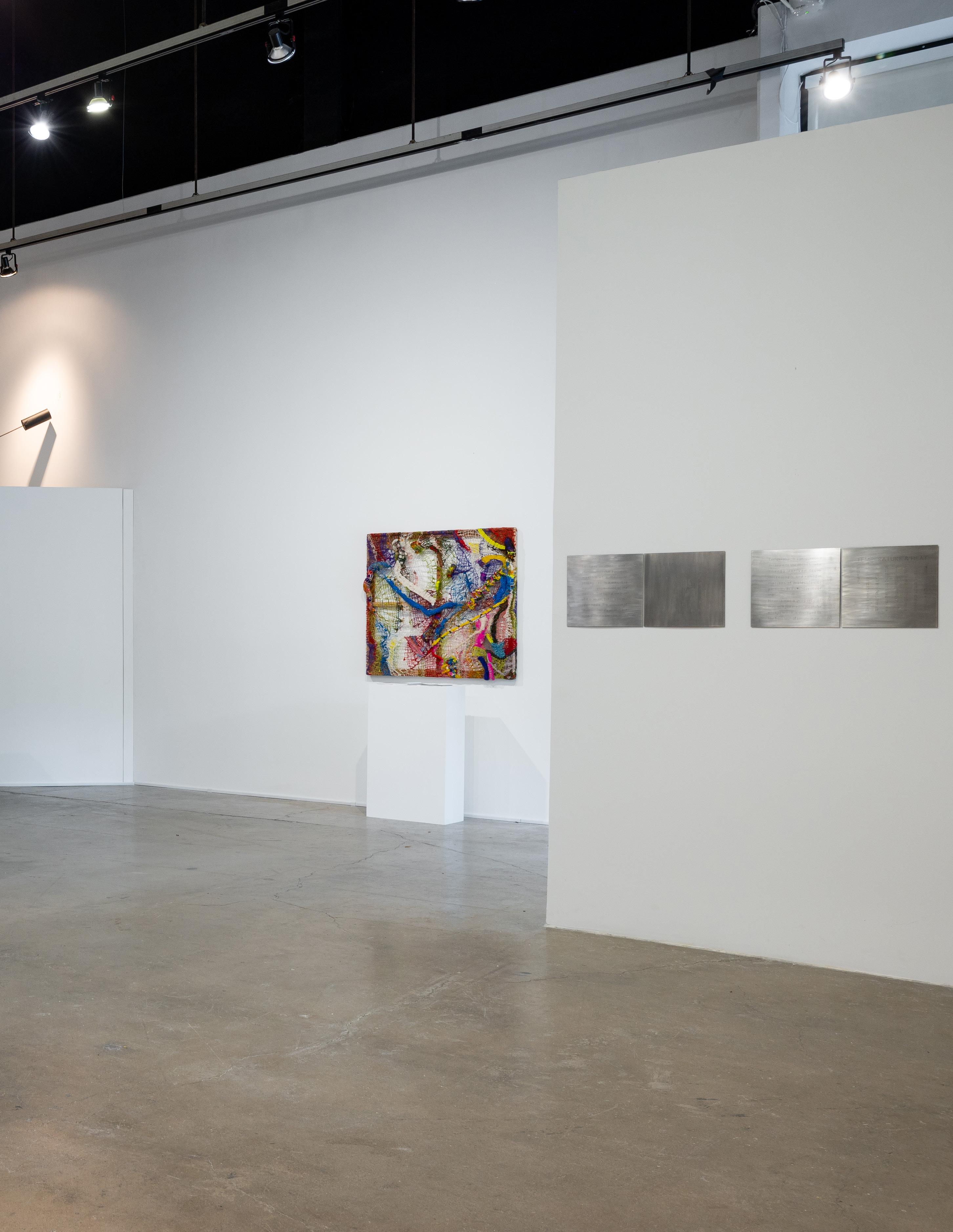
Millions of dollars of art at Chapman has no audience
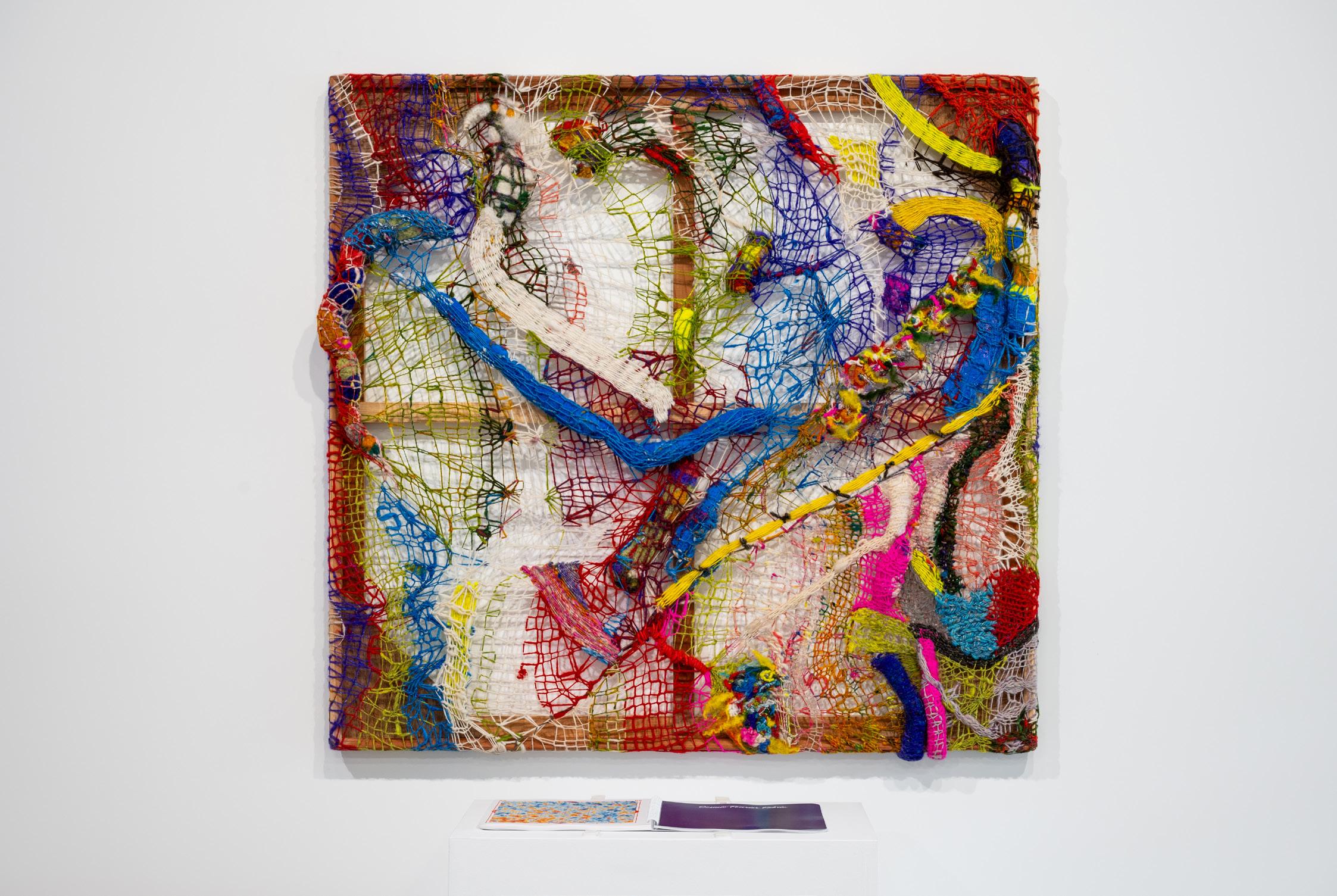
Many students however, will not visit the museums unless required to do so for a class.
Jessica Brocinski, the collections manager for the Escalette art collection, said spaces for art are important for students to experience.
The Energy Fields exhibit “is one of the most recognized exhibitions we’ve done because to be part of Getty Pacific Standard Time is a big deal,” Brocinski said.
Many of the students who know about these hidden features throughout campus have positive words about the museums.
Lindsey Nikolai, a senior strategic and corporate communications major, enjoyed the Guggenheim museum.
“I like how they changed the exhibits,” Nikolai said.
“If more press existed around it or teachers made it an extra credit for a class, more people would know about it and be more inclined to go.”
Ayaz Keyana, a sophomore broadcast journalism and documentary major, believes that while these museums are enjoyable, they have little purpose.
“Even though it’s cool, it’s not necessary, but I know that some classes take trips to the museums for projects and things like that, so it is useful to some,” Keyana said.
The Hilbert, which reopened this February, bustles with Orange County locals but remains a ghost town for Chapman students.
A staff member at The Hilbert, believes that students don’t visit the museum due to ineffective communication. He explains that after talking to
students, he discovered that most are first-timers and had never heard of it before seeing it on Instagram.
Chapman University currently owns The Hilbert Museum after Mark Hilbert donated $20 million to open this location. Despite the $5 million worth of art pieces and the expensive construction, Chapman has yet to advertise the museum effectively to students.
The museum features a collection of original Disney storyboard art, spotlighting The Lady and the Tramp, Mary Poppins, The Jungle Book, and many more.
with small stand-up printouts of the gallery’s current exhibition. Regardless of this, The Hilbert has minimal advertising.
A Hilbert volunteer said the museum sees a significant number of visitors. Averaging 150 visitors a day during the week and 300 a day during the weekend, the museum is much more popular than the Guggenheim.
"There are around 5-15 people per day during the school week."
Abbey Cohen
Despite the financial value of The Hilbert, Chapman is not advertising to students, especially the ones who may want to utilize it the most.
The Guggenheim Gallery is advertised on campus
These museums act as ghost towns, only revived briefly while exhibits are new and buzzing.
Despite this, Ryan said she’d like to revisit the Guggenheim.
“It was such an interesting experience, and knowing they have all of this rotating art is truly exciting,” Ryan said. “I probably would not know about these museums if it was not for my class, and I am grateful for it.”
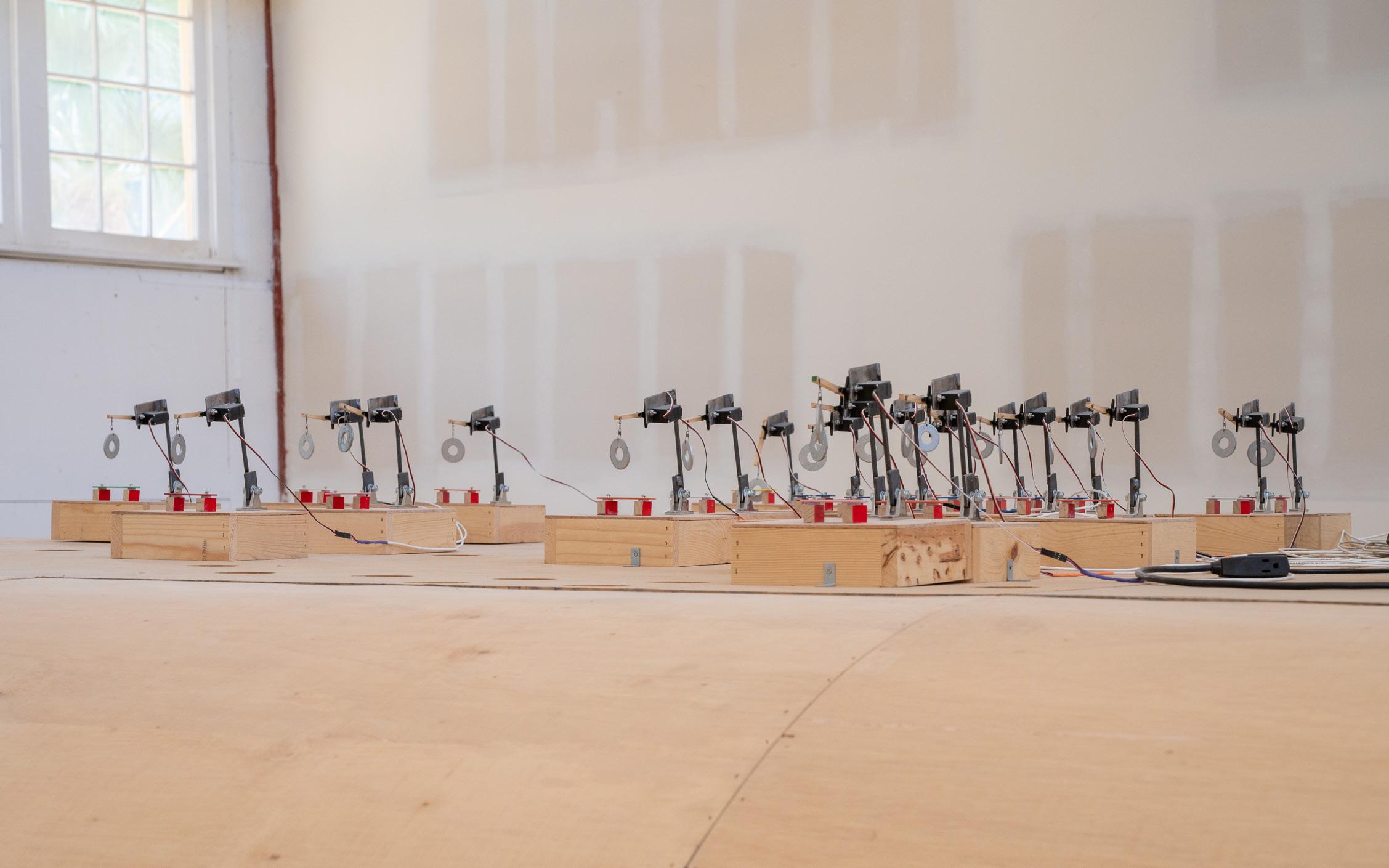
By Nicole Kavros
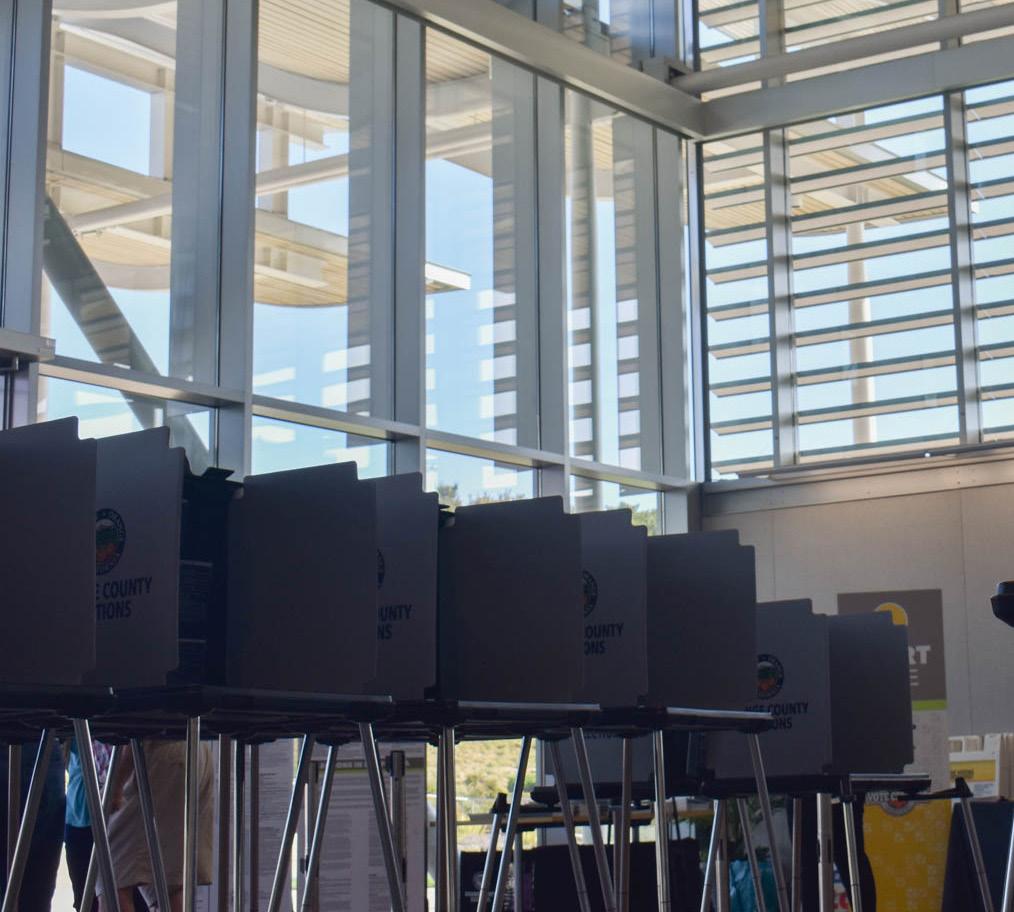
This presidential election cycle was the first time many students could truly feel their voice being heard.
But the aftermath has been shocking for some first-time voters, who thought they
would be making history by electing the first woman president.
“I was up with my mom until 3 a.m., then once we saw Pennsylvania get called, I just had to go to sleep,” said Madeline Southern, a junior political science and peace studies double major. “I couldn’t handle it anymore. I’m
really disappointed.”
This year’s presidential election was unique in almost every way. One of the candidates was the current vice president, the first woman in her position ever. The other candidate was a former president who
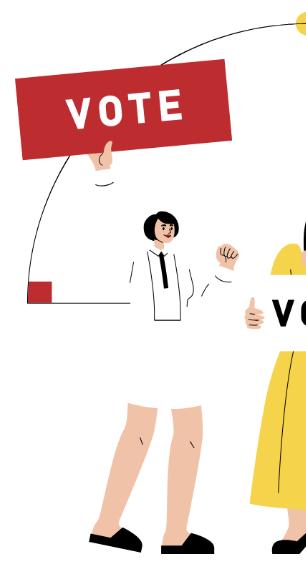
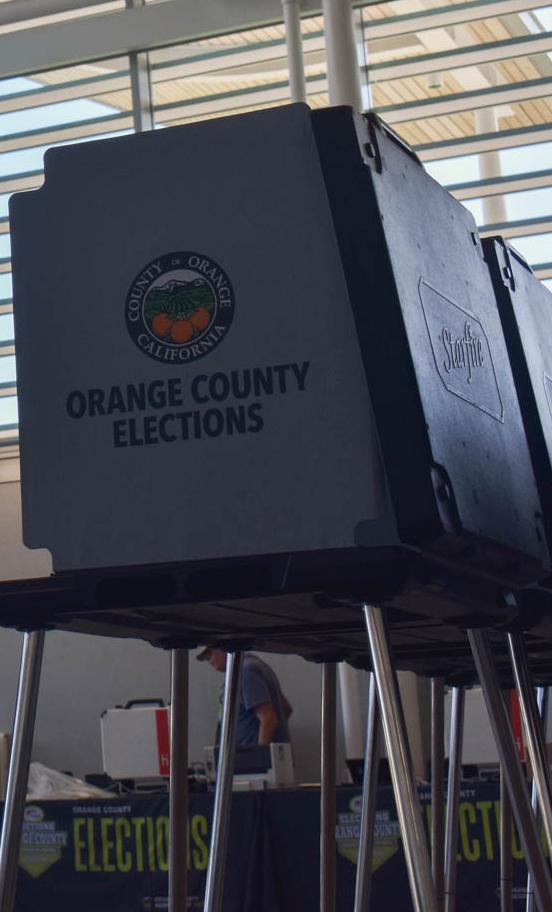
has been under legal investigation for the past few years and who narrowly escaped an assassination attempt at a rally this summer.
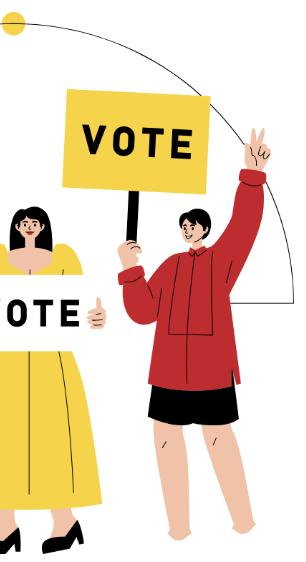
Donald Trump, the Republican party nominee, won the election with 312 electoral votes to
Democrat nominee and current Vice President Kamala Harris’ 226 votes. He was able to secure all seven battleground states: Arizona, Georgia, Michigan, Nevada, North Carolina, Pennsylvania and Wisconsin.
The nation saw itself in unfamiliar and unprecedented territory with
each new day leading up to this election. TikTokers and influencers were being invited to the Democratic National Convention, Trump was appearing on multiple podcasts popular with male audiences and the nation debated the impact of democracy, ethics and criminality.
James Moore, a senior political science major and senior advisor of the Chapman Democrats club, said that a lot of his peers are shocked by Trump’s landslide victory.
“Kamala losing to Trump was very surprising to a lot of people,” said Moore. “I’ve gotten the impression that this is something that, I wouldn’t say feels impossible, but felt pretty unlikely and understandably, very disappointing.”
Moore is not an American citizen and therefore was unable to vote in this election. However, as a political science major and member of a political club on campus, he has been keeping tabs on the candidates and their campaigns.
“One of the big surprises for the Republican party was how many first-time voters actually came out for them,” said Moore. “I don’t think the polls could’ve captured that.”
CNN’s exit poll analysis shows that Trump was able to win more votes among demographics that typically lean left. These included the firsttime voters that Moore mentioned, younger voters and Latino


men.
Polling in the months leading up to the election showed Harris and Trump at close odds of winning. Their campaign cycle was a strange one; Harris surprisingly entered the race late after President Joe Biden dropped out amidst bipartisan doubts of his capability to serve another term. She only had 107 days on the campaign trail.
“Where [the Harris-Walz campaign] maybe could’ve improved a bit is that they didn’t talk a lot about policy,” said Amarillas. “Something that maybe

matter what Harris did, nothing could have swayed the nation enough to grant her victory.
I was adamant about wanting to vote for the first time. I felt like there was a lot on the line
-Sarina Sukhraj
“What we’ve learned, and relearned, is that economy matters more than anything else,” said Amarillas. “More than identity politics, more than the border, more than gender ideology, more than any other issue that either Republicans or Democrats bring up.”
Junior political science major Richie Amarillas said that with such a short time frame to campaign, Harris ran “an incredible campaign.”
wouldn’t have won them the election but could’ve helped, was I don’t think she differentiated herself very much policy-wise from Biden. I think a lot of people associated them with each other.” Amarillas said that he thinks no
One of the main criticisms of Biden’s term has been the nation’s economic status, which is what the Associated Press cited as drawing in many voters for Trump.
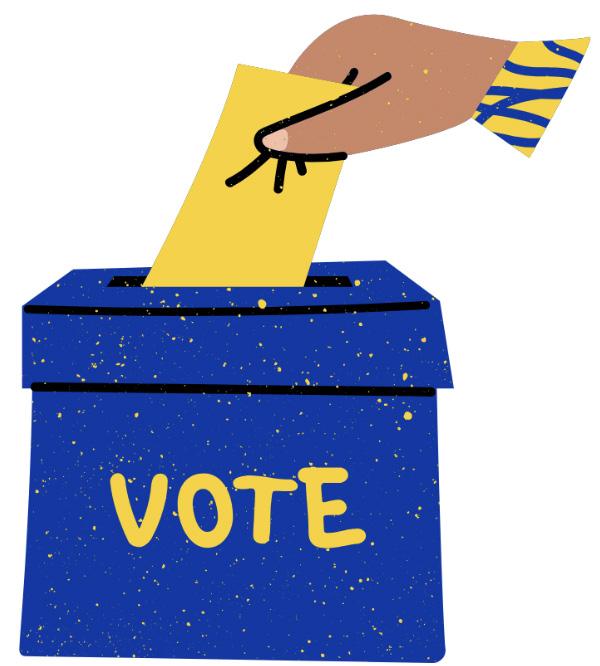
“That’s not even saying that I believe Trump will be better for the economy — I don’t. But people believe that Trump is better for the economy, so they’ll vote that, because it’s something new,” said Amarillas.
Chapman Republicans secretary Kaden Jurjis, a junior business
administration major, also believes that the Trump win came down to economic concerns.
Jurjis commented about how the election results might have been surprising in consideration of polling leading up to Election Day.
“The GOP beat the main predictions for the election because you had credible pollsters like Allan Lichtman and Nate Silver all predicting a Harris victory,” said Jurjis. “Despite that, it turns out that Trump won.”
Jace Nagamine, a junior business administration major and treasurer of Chapman Republicans, spoke
about what he thinks helped Trump win.
“Harris made this a very singular topic focused election, which kind of blew up in the Democrats’ face a lot,” said Nagamine. “Trump just ran a good campaign, (he) tried to talk to many members of the community. It definitely showed that in the results.”
When asked how they believe students feel about the outcome, both Jurjis and Nagamine agreed that they don’t think the news has been received well on Chapman’s campus.
“I think Chapman students
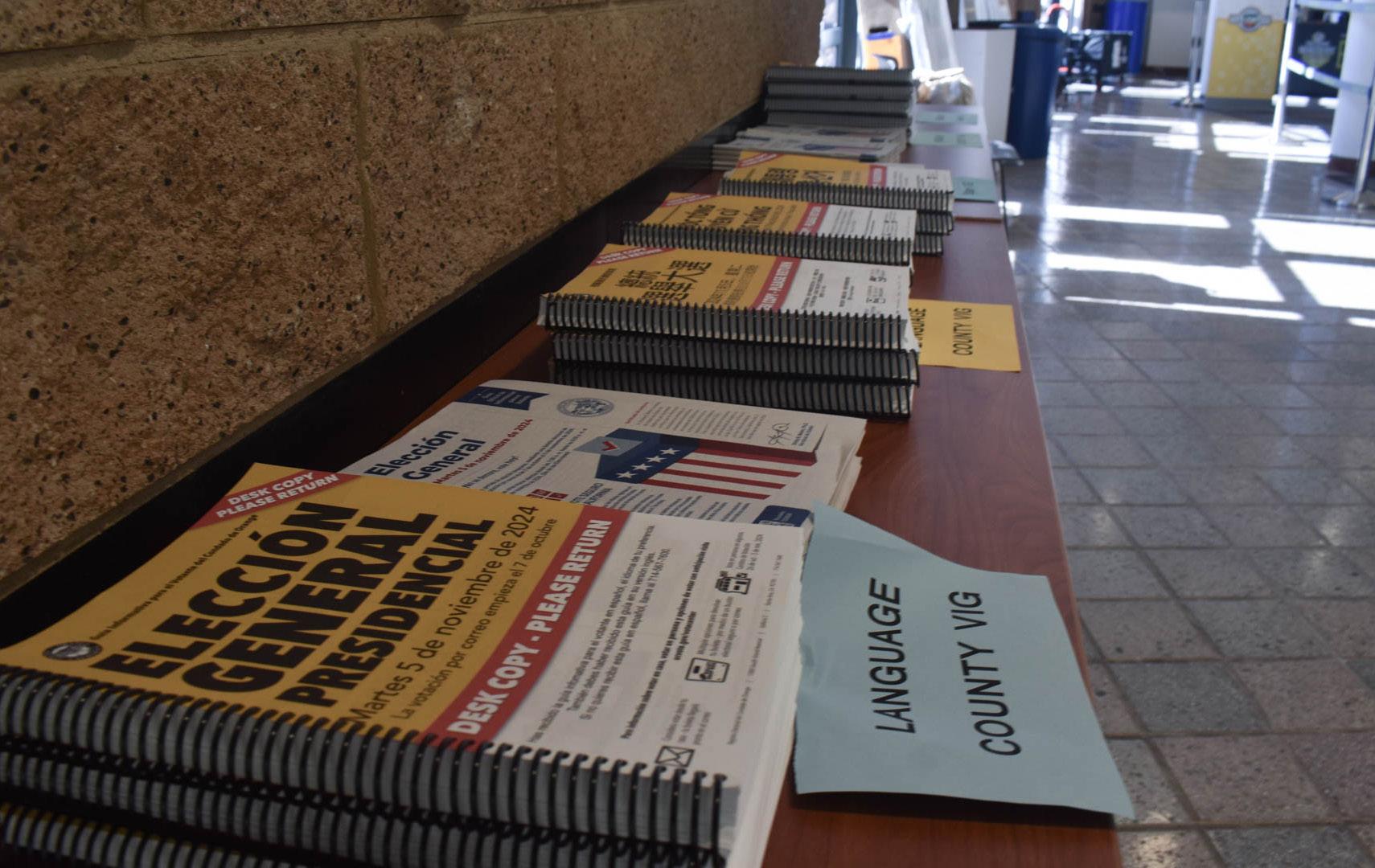
themselves are not really for the Trump election,” said Jurjis. “I think many are not as into his hard-line stance against immigration.”
Nagamine echoed this sentiment.
“We have a very left-leaning campus,” said Nagamine. “It’s interesting, I feel like this election was very much more divisive.”
One of Trump’s promises has been to eradicate the federal Board of Education, a move that could impact funding for K-12 schools as well as student loans — which directly affects college students, including many Chapman students who need the extra help to afford a pricey tuition.
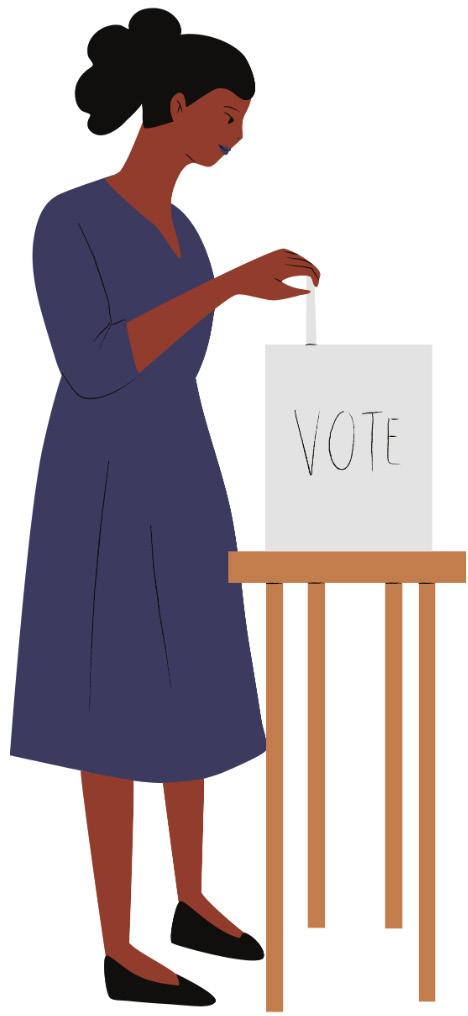
Senior psychology major Sarina Sukhraj, who is from Florida originally but currently has permanent residency in Utah, was disappointed in the results. She was even more upset due to the fact that she was unable to vote because of complications with her ballot shipping.
“I was adamant about wanting to vote for the first time. I felt like there was a lot on the line, because (Trump) has very polarizing opinions,” said Sukhraj. “I wanted to be a part of this and have a say in who would be the next president.”
According to Sukhraj, her ballot was sent back to her house in Utah after her mom tried to ship it to Sukhraj’s California address.


“I wasn’t able to vote because of this,” said Sukhraj. “I wanted the chance to put a little more voice in for Utah for the people who believe the things I believe in.”
Ellie Bickelhaupt, a junior studying political science and creative writing, noticed that students were distraught the day after Election Day, when the results came out about Trump’s win.
“Everyone on campus was so silent, so shocked, so confused,” said Bickelhaupt. “There was a lot of anger throughout campus too. It was like, ‘what do you mean?’”
In her opinion, Chapman’s student population is mostly left-leaning, which is typical for a college
campus in California, and this is part of what made them upset.
“It was kind of a wake-up call for a lot of people at Chapman,” said Bickelhaupt. “It’s like, ‘wow, we really are in this Democratic bubble.’ We’re very much surrounded by a very Democratic community. So it was very shocking to see so many people think differently.”
According to Mac Bunyanunda, a political science professor at Chapman, most faculty were not shocked — even the more leftleaning ones.
“I don’t think any faculty seemed that surprised,” he said. “Especially after 2016, it happened once and
could happen again, and it did.”
Bunyanunda says that this generation of college students seems to be hopeful, which he argues is better than being cynical. However, he does acknowledge that this election had unusual circumstances, which caused Gen Z to be more certain that Harris would come out victorious.
“Given the handicaps that Trump has that traditionally would sink a normal presidential campaign — 34 felony convictions, the implications of sexism, racism, an adjudicated sexual offender,” said Bunyanunda. “How could that person come back and be president?”

headache?
By Lauren Cavalieri
It’s not every day a professor tells the class to propose a law.
But that’s exactly what happened to Madeline Southern. The junior political science and peace studies major said the extra credit assignment, which was part of her Lobbying and Political Advocacy class, was to go onto a local representatives’ website and write a law she thought should exist in Orange County.
“It was really fun,” she said. “I think extra credit is a chance to prove you care about the class, even if you’re not necessarily performing super well.”
While extra credit can offer a chance to raise one’s grade, some question if the assignments are worth the effort.
In some cases, extra credit can involve going out or spending money, activities that may be difficult for busy, cash-strapped college students.
Raquel Head, a senior creative writing major, said most extra credit assignments she’s been assigned are too overwhelming, especially if they involve going to an event outside of class.

extra credit experiences looking very similar.
“I think extra credit is a chance to prove you care about the class, even if you’re not necessarily performing super well.”
-Madeline Southern
“For most of my classes, the extra credit is to attend events held by the school, (and) I’m always busy when said event is happening,” she said. “Mostly because I have classes during that time.”
Sofia del Rey, a senior accounting major, recalls her
On top of her classes and job as a supplemental instructor on campus and role as a Unit Production Manager for several student films, her schedule’s too jammed to squeeze in a panel or presentation outside of class.
“They’ve all been about going to a specific experience; a talk of a professional in the accounting industry,” she said. “I haven’t really gotten to go to those, though.”
Grace Norgini, a junior political science and education major, has also taken the Political Advocacy class that asked her to write a law, which she thought was a nice
change of pace from her former extra credit assignments.
“A lot of education classes don’t believe in extra credit, so they don’t really provide it much,” Norgini said.
However, she said this doesn’t bother her because extra credit can create a dilemma from a professor’s point of view.
“Extra credit makes (students) put more effort into the extra credit assignment instead of putting the effort into the course itself,” she said. “The teacher should see the effort you’re putting in regardless.”
Caroline Murray, a sophomore film and television production major, said extra credit in itself is fine so long as teachers offer it to the entire class.
“I think there’s a lot of value to it, as long as it’s offered to everyone. If only a couple students are offered extra credit, I don’t think that’s fair,” she said.
However, there are students who appreciate extra credit for the grade boost and opportunity to go above and beyond the curriculum.
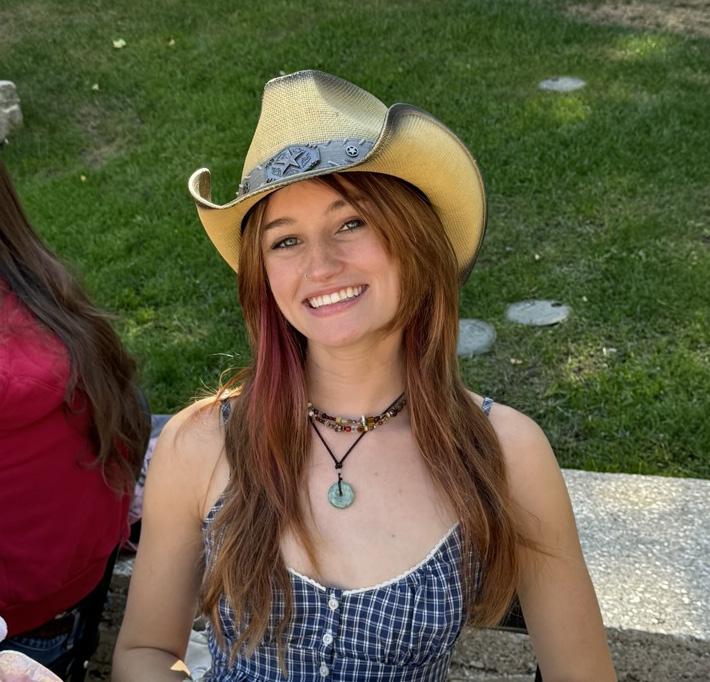
Caroline Murray said extra credit is a positive thing so long as the professor assigns it to everybody. Photo by Lauren Cavalieri
Jackson Feldman, a sophomore software engineering major, said extra credit is a lifesaver for someone with ADHD.
“I think there’s a lot of value to it, as long as it’s offered to everyone. If only a couple students are offered extra credit, I don’t think that’s fair”
To Head, extra credit assignments can be beneficial if they enhance the class experience. For example, she watched a movie about philosopher Frantz Fanon for her theory class.
“It was about someone we were discussing, so it seems worth it,” she said.
“I definitely slip sometimes grade-wise; maybe just forget something. I’m always interested in creative ways to show I’m committed to learning,” he said.
Feldman said an extra credit assignment saved him in a high school AP US History class, where he got to dress up and behave as a historical figure.
“We had to dress up all day, talk in that way, with the accent and do a little monologue and everything,” he said. “Everyone (in the class) did it.”
Wally Zermeno, a Chapman anthropology professor who teaches visual culture, offers several extra credit opportunities. These assignments include attending on-campus events like the Native American Heritage Celebration and presentations at the Fish Interfaith Center.
Through these assignments, Zermeno said he aims “to inspire students as well as expose them to diversity of media and culture.”
Zermeno highlighted how these events can double as networking opportunities.
“It’s vital for students to visit these campus events and establish connections that contribute to social capital and possible career opportunities,” Zermeno said.

One of Zermeno’s former students, sophomore business major Scott Switzer, went to the Interfaith Center for the class. It involved watching a presentation there and completing a write-up about it, and he ended up doing it twice.
“I think it was helpful,” Switzer said. “I learned from the sessions, and got some extra points in the class. It was interesting.”
Southern said that while extra credit assignments do require extra work, they pay off in her hard classes.
“Depending on what the extra credit assignment is, it can be a stressful thing. But a lot of classes are difficult and it’s hard to perform super well,” said Southern. “Extra credit is an opportunity to show you care about the class.”
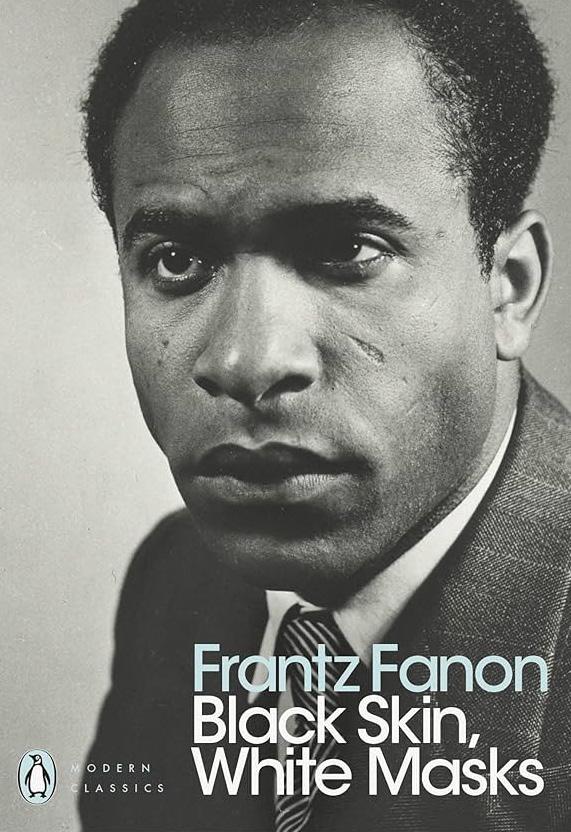
By Kajal Reddy Padi
As the graduate class of 2025 approaches their final stretch at Chapman, the campus landmarks— the iconic piazza, campus hub Argyros Forum, and the peaceful bleachers on Wilson Field—take on a deeper meaning.
Alumni like Laura Cobas, who graduated last May, said she fondly remembers squeezing in early morning coffee shop study sessions with friends.
“We’d get there before anyone else, taking in the calm before the storm of finals,” she said.
One of her most memorable senior experiences at Chapman was attending the Dodge senior thesis screenings, a tradition where students showcase their capstone projects, followed by a shot at the local college bar, The District Lounge.
Her advice to current seniors? “Work hard, but definitely play hard, too.”
Emotions run high for soon-to-be graduates. It can be a whirlwind of excitement, nostalgia, and a few teary-eyed moments as students get ready to toss their caps and count down to graduation.
But before they walk across the stage, they have a variety of traditions to make those last days on campus truly unforgettable.
For many seniors, the journey toward graduation wouldn’t be complete without grabbing a drink with their dads — or really any father figure who’s down for some fun.
The “Dads and Grads” tradition has become a fan favorite, where seniors take a moment to hit up the local bar, Paul’s Cocktails, with their fathers (or honorary dads) to share a drink, laugh about old memories, and toast to new beginnings.
“I can’t imagine taking a shot at 7 a.m. before having to walk across the stage... that won’t stop me from participating, though.”
-
Alex Der Boghosian
Ahead of graduation, proud dads can be seen soaking in the nostalgia of their own glory days while also trying to keep pace with their soonto-be-grad kids.
“I’m definitely doing ‘Dads and Grads’ and fountain hopping,” said senior Noah Monnich, a business administration major.
“My father has pushed me for the past four years, always supporting me through the highs and lows. I think getting a drink with him to celebrate would be the perfect ending to this great chapter of my life.”

And, of course, he plans to participate in the Undie Run, calling it a “unique Chapman experience.”
As finals week hits and stress levels are off the charts, Chapman seniors often find the best way to blow off steam is to throw off their clothes and sprint through Old Towne Orange in nothing but their underwear.
Jesse Tango, a senior business major at Chapman, finds the Undie Run to be a “bittersweet” experience, a tradition she might do just once more to close out her time here.
“It’s lowkey fun but kind of weird when you think about it,” Tango said.
With graduation fast approaching, the seniors of Chapman are savoring every last bit of their college experience, leaving no tradition or milestone unchecked.
Senior Alexandra Der Boghosian, a political science
major, is planning to sneak onto campus for a very slippery and very cold experience—fountainhopping.
It’s a popular tradition at Chapman where students take a playful leap into the various fountains scattered around campus.
“I definitely want to fountain hop before I graduate,” said Der Boghosian. “It would be hilarious to look back on years from now. I mean…only a handful of people can say they’ve done that.”
Fountain Hopping and the Undie Run seem to be at the top of the list for many, with senior screenwriting major Caroline Alley describing them as “happy traditions.”
The Midnight Breakfast, another campus favorite, is also on her to-do list, bringing back memories of late-night cramming and laughs with friends over pancakes.
Midnight Breakfast is a finals week tradition where students gather to enjoy breakfast for dinner, served with dance performances by Floor 13 and the voices of Chapman’s acapella group Soundcheck.
“I went three years in a row. It only makes sense for me to do it one last time,” said Alley. “Finals week is always so stressful. I think it’s nice to have a few hours of pure fun and sugar with your favorite people.”
For students like Nika Utrobina, a senior Screenwriting major, her own tradition is more about reflection.
“I try to enjoy the experiences I didn’t have time for in previous years,” she said, soaking in the last
“I don’t have any personal traditions. I’m just trying to graduate with good grades and to leave with better connections from my professors,” Matias said. “But I would love to take a walk around campus one last time.”
Some traditions are more subtle than others. It’s said that students should dodge the Chapman Crest that is outside of the Library, believing stepping on it brings bad luck. However, everything changes come graduation day. Once students wear the cap and gown, they can finally step on it.
“I’m pretty sure I’ve walked across it a couple of hundred times,” said Monnich. “But hey, at the end of the day, I’m still graduating.”
While Alley agrees that she too has done the same on
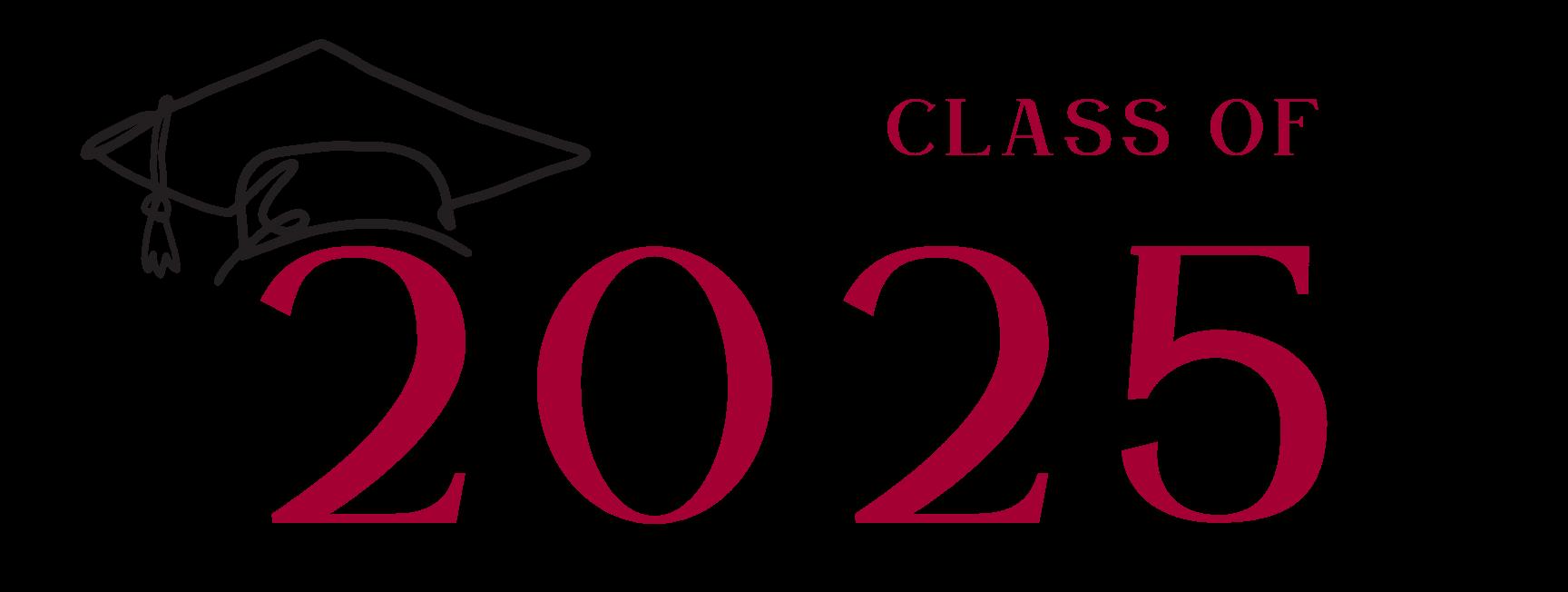
Chapman Halloween, piano recitals, and late-night hangout with friends.
While some seniors follow long-standing Chapman traditions, others create their own rituals. Olga Penkovskaia, a 2024 alum, and her friends shared Thursday night dinners as a weekly way to unwind.
Nella Khachian, another recent graduate, set aside time for campus walks every week at sunset, using these moments to reflect on the highs and lows of her Chapman experience.
For Neveah Matias, nostalgia and senioritis take up most of her time now.
various occasions, she still believes finally stepping on the crest post-graduation will be a teary-eyed moment.
“I think it will be empowering to stand on it and know that the moment we’ve been waiting for the past four years is finally here,” she said.
Another beloved tradition for Chapman seniors is to stop by the local bar for a celebratory shot right before heading to commencement as a way to shake off any pre-graduation nerves and toast the journey that brought them there.
“I can’t imagine taking a shot at 7 a.m. before having
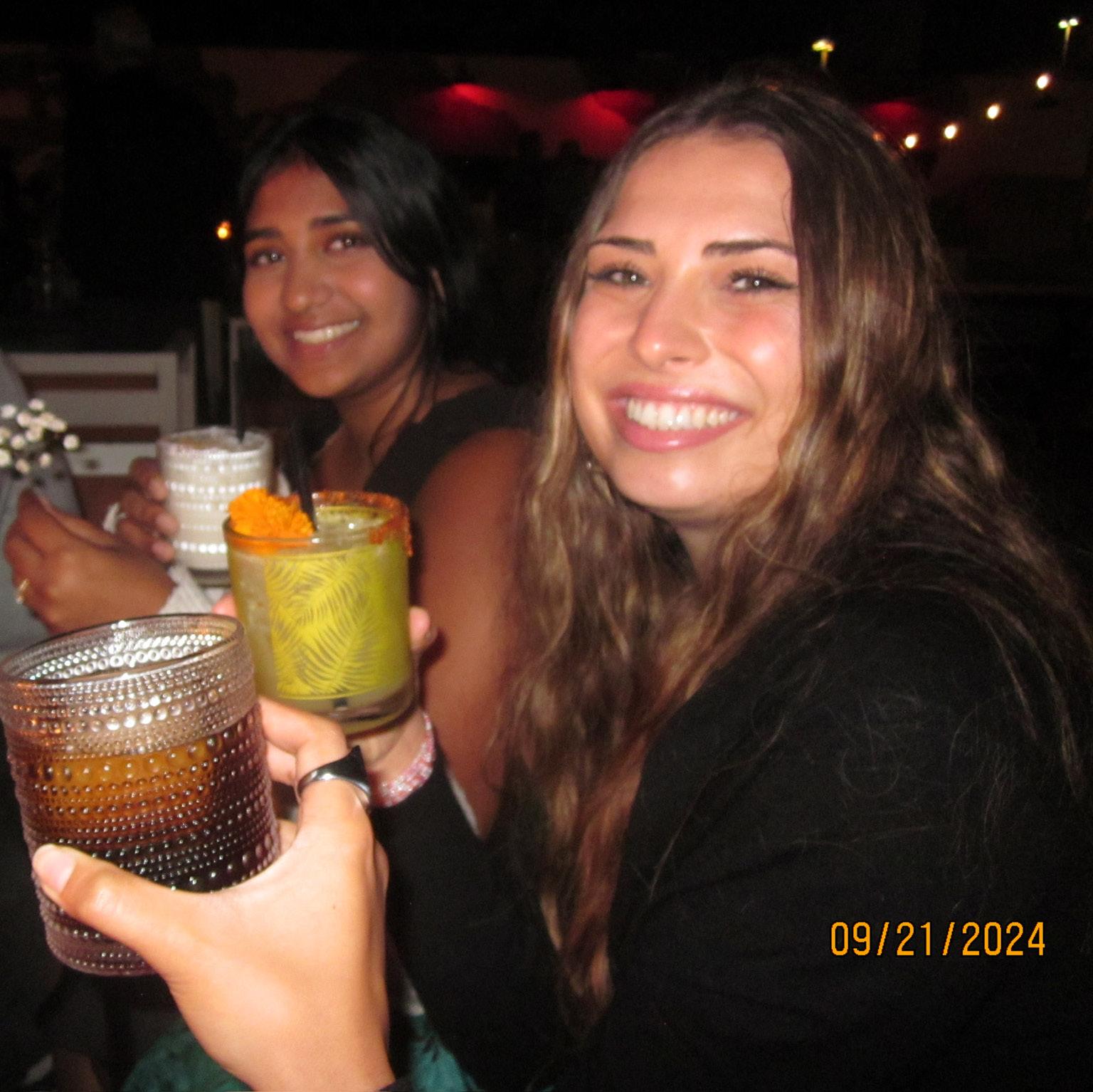

to walk across the stage,” Der Boghosian said. “That won’t stop me from participating, though.”
For alumni Evan Fenley, having his parents around during graduation meant the most to him. He first heard about the drinking tradition from friends and said the experience felt surreal.
“It was packed like a Thursday night, but it was 7 a.m., and everyone was already drunk,” he said.
The tradition felt unique, something that couldn’t have happened at a high school graduation.
Beyond personal traditions, the university has curated a series of celebrations and activities, giving seniors a chance to connect, reflect, and make the most of their final Chapman moments.
In addition to the Commencement Weekend in late May, seniors can participate in Cultural Graduation Ceremonies, optional celebrations that honor the dedication and resilience of students from underrepresented communities.
“Commencement planning is already in full swing, and we are excited to celebrate the Class of 2025,” said Kelsey Alcantra, director of special events at Chapman.
The Graduation Fair, held in late February on the Orange campus and early April at the Rinker campus, offers students a chance to prepare for the big day and get their cap or gown, taking one step closer to walking across the stage.


“
I don’t know what lies ahead, but what I do know is that in the weeks leading up to graduation, I’m going to cry, have an existential crisis and hold onto my friends all at once.
Caroline Alley


The Interfaith Baccalaureate Week of Events also provides a unique opportunity for graduates to engage in meaningful reflection.
This service at Chapman is not a traditional baccalaureate; instead, it features an inspirational message for all graduates, whether secular, spiritual or religious, honoring each graduate’s individual journey.
“There is nothing like the energy felt at Commencement. Family, friends, classmates, professors—all gathered together to honor the hard
work that led to this moment and look forward to the great things to come,” said Alcantra.
From last-minute grad photos to spending time with family and friends, Chapman seniors are making the most of every moment.
“I don’t know what lies ahead, but what I do know is that in the weeks leading up to graduation, I’m going to cry, have an existential crisis and hold onto my friends all at once,” said Alley.

By Caroline Linton
In 31 days, Steven Hogencamp will never have to open Canvas ever again. In 191 days, he will walk in his graduation ceremony.
Hogencamp, a senior broadcast journalism and documentary major, is officially graduating at the end of this semester, but he will wait another five months before he walks in graduation.
Like many other students who are fall grads, the end is bittersweet.
“I may not feel that gratification of finally walking and feeling like ‘oh my god, now I’m done,’ like I’ll already have been done,” Hogencamp said. “I could’ve walked last semester but didn’t. I wouldn’t feel that same sort of satisfaction when I finish that walk, but I do feel like graduating, I do think it’s special.”
The excitement of graduating is somewhat muddled as the school is not celebrating with them or hosting senior-themed activities. For everyone else, it’s just winter break or a little time off before interterm.
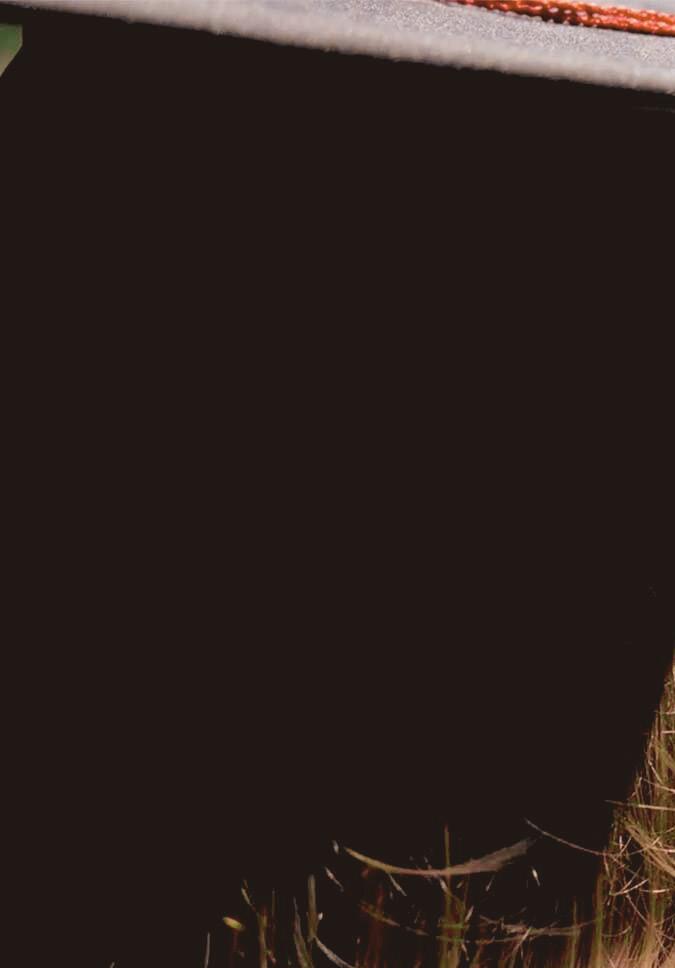

When asked what Chapman University was doing to commemorate those closing out their Panther experience, Kelsey Alcantra from Chapman’s Office of Special Events said it’s up to each school to hold their own celebrations.
“The Commencement Office does not host a Commencement or any Commencement related activities in the fall semester. Individual schools/colleges may host their own activities, but that would differ for each,” Alcantra said.
As for resources provided to fall graduates, the response was also underwhelming. Alcantra stated, “Fall graduates are included in Commencement communications which begin in December.”
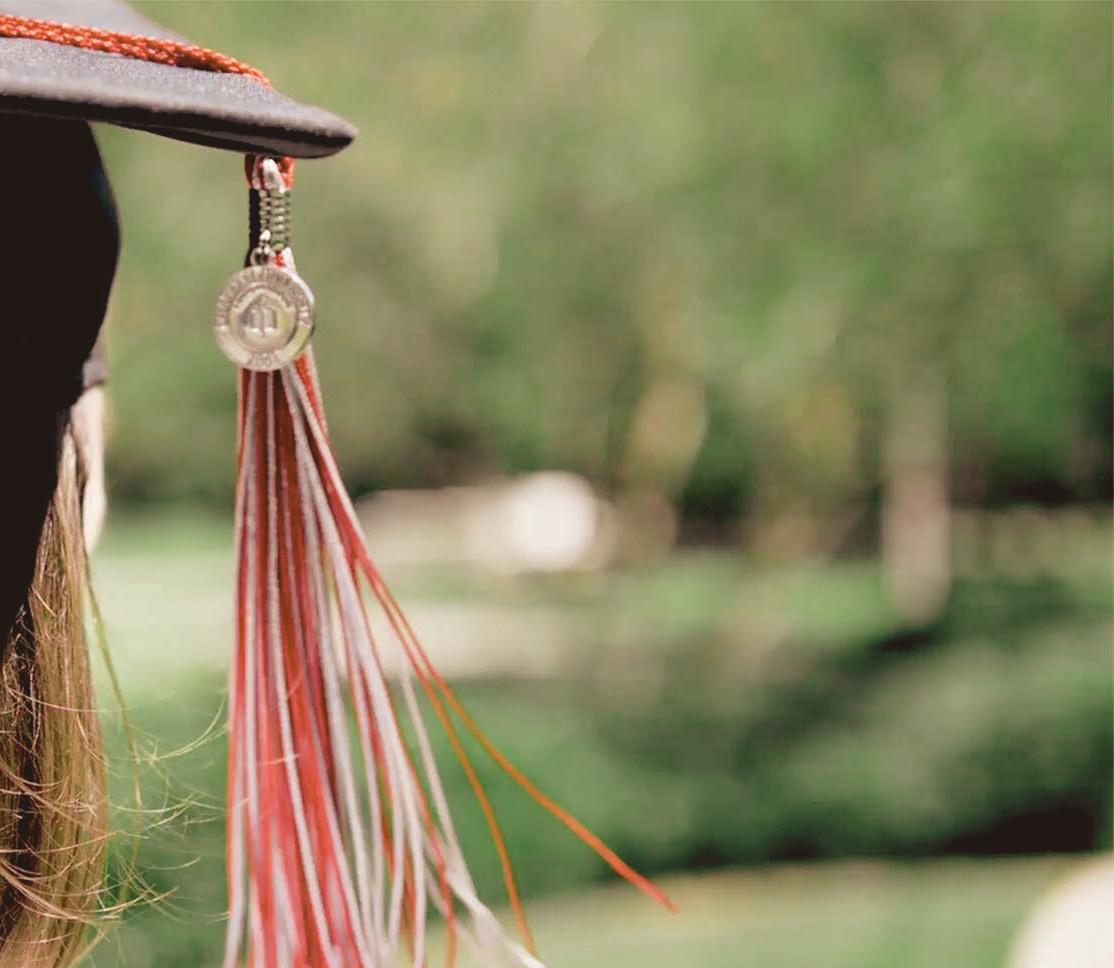
One Fall ‘24 graduate was struck by the lack of aid and resources after reaching out to the Conferral office. University.
Hello,
My name is and I am all prepped to graduate at the end of this semester! I applied a while ago, but it is still not approved and wanted to make sure there is nothing else I needed to do for that. I also wanted to reach out to see if there is any celebration/degree conferral for fall graduates. Additonally, I want to make sure I will be able to walk in the spring. I have lots of questions and being a fall grad, I do not know where to find these resources and am lost. Please let me know or direct me to someone who can help me with all necessary steps.
Your records indicate that you have applied for Fall 2024 degree conferral. Your status is “Needs to Finish Pending Work”. The Office of the Registrar will contact you through your Chapman email account only, please check it frequently for degree conferral updates. Degrees will be conferred beginning January 2, 2025. We will send you an email when your degree has been awarded. Your complimentary diploma will be mailed to you four to six weeks after your degree has been awarded. Please make sure your diploma name and address are correct in your Student Center.
We have one Commencement Ceremony each year which is held in May. You are eligible to participate in the Spring 2025 Ceremony and you will receive information about the ceremony in early 2025. Please see the Graduation webpage for more information. https://graduation. chapman.edu/
Warm Regards,

It is not only a lack of acknowledgement that many fall grads are feeling.
Little communication has come from Chapman about reminders or information for fall grads. The preferred deadline to apply for degree conferral for Fall ‘24 was Aug. 15th, 11 days before the start of the semester. No information was sent out.
In contrast, on Jan. 30, 2024, an email with the subject line: “Reminder: Apply for Degree Conferral” arrived in the inboxes of all those graduating in the Spring of 2024.
“It’s been a lot of work on my own,” said Bri Hester, a business administration and psychology double major who will be finishing her time at Chapman at the end of interterm.
Hester had to quickly switch her graduation plans from December to January as she was only told this semester that she was missing a necessary class, despite that not being the case on her program evaluation. The reason she
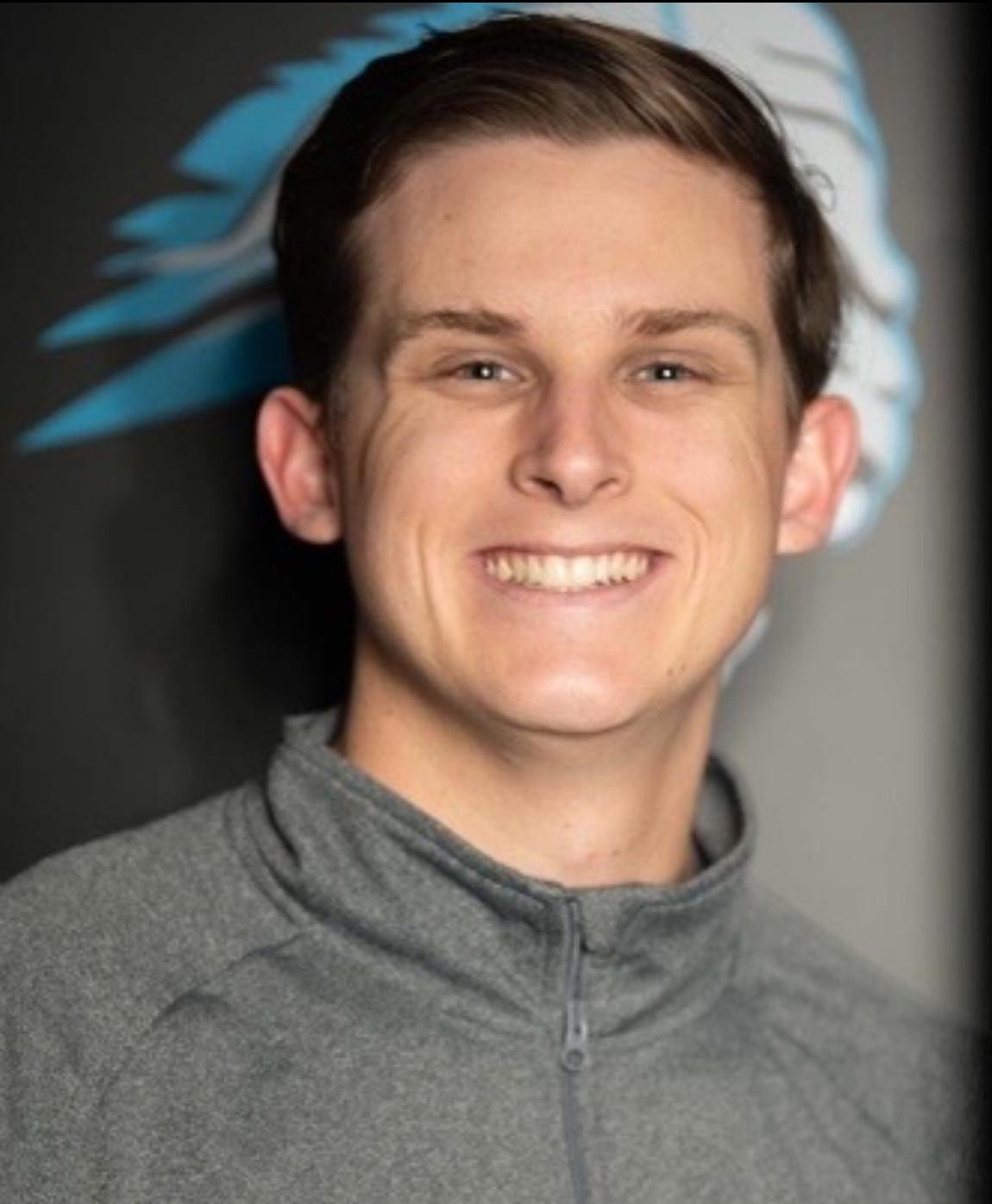

found out late was due to difficulty scheduling an advising appointment through the business school.
“The lead times to get a counselor are extremely hard in the business school. I wish there was more support, especially for a fall or interterm grad. I feel like this all could have been mitigated and I would’ve been on track if I was able to meet with them sooner,” said Hester.
Despite this hiccup in her timeline, Hester is still amped to graduate and feels ready to step out into the professional world.
Sydney Evans, a psychology major and health humanities and disability studies double minor, felt this sense of apathy from the university in an indirect way. She received the email along with the rest of the student population that Spring ‘25 classes were open to add in your shopping cart.
“I know it sounds dumb and it is not directed at me in any way, but it was just a reminder that no one thinks about fall graduates,” said Evans.
Evans believes Chapman’s lack of enthusiasm and recognition makes fall grads’ journey feel incomplete and underwhelming.
“It feels like I’m dropping out of college or something, instead of fully completing everything I needed to a semester early,” Evans said. “I just think I’m gonna walk out of my last final and think ‘well, I guess that’s it.”
Graduating college is a major life event that should not be made to feel unimportant or disregarded. It’s always accompanied with some pomp and circumstance, so where is it for Chapman University’s fall graduates?
Students like Hogencamp, Hester, and Evans may be waiting until May to receive any cap, cord, gown, or recognition from the school. However, they acknowledge the weight of their accomplishments and are taking the time to celebrate themselves.
“I’m really proud of myself for finishing a semester early,” said Evans, “and I know I’ll still be hyped when it’s my time to walk across that stage.”
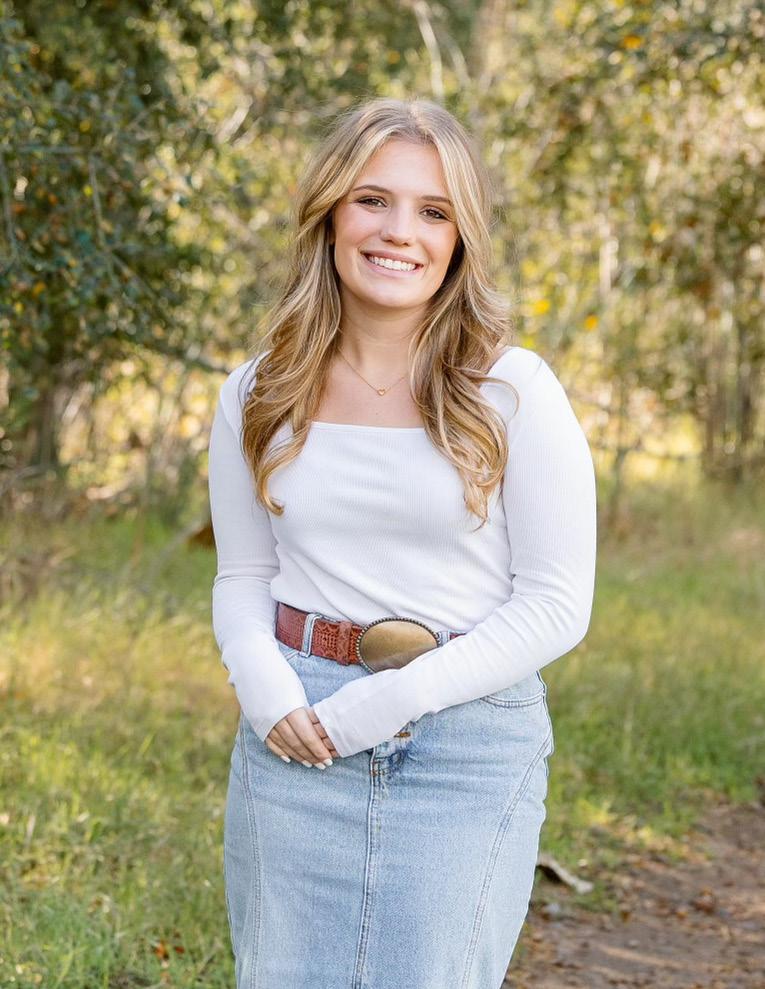

*The % Daily Value tells you how much a nutrient in a serving of food contributes to a daily diet. 2000 calories a day is used for general nutirion advice.
Senior art history major Hayden Yoss is a typical student, starting most days with a cup of coffee to get the day going.
“I started drinking caffeine during quarantine because I needed something to look forward to. Now, it’s just routine,” Yoss said.

And Yoss is not alone. Many students report relying on caffeine as part of their daily routine.
Caffeine is the number one most used drug in the world. A drug that 92% of college students partake in according to the National Institutes of Health (NIH). But what makes these chemicals so appealing to students in particular?
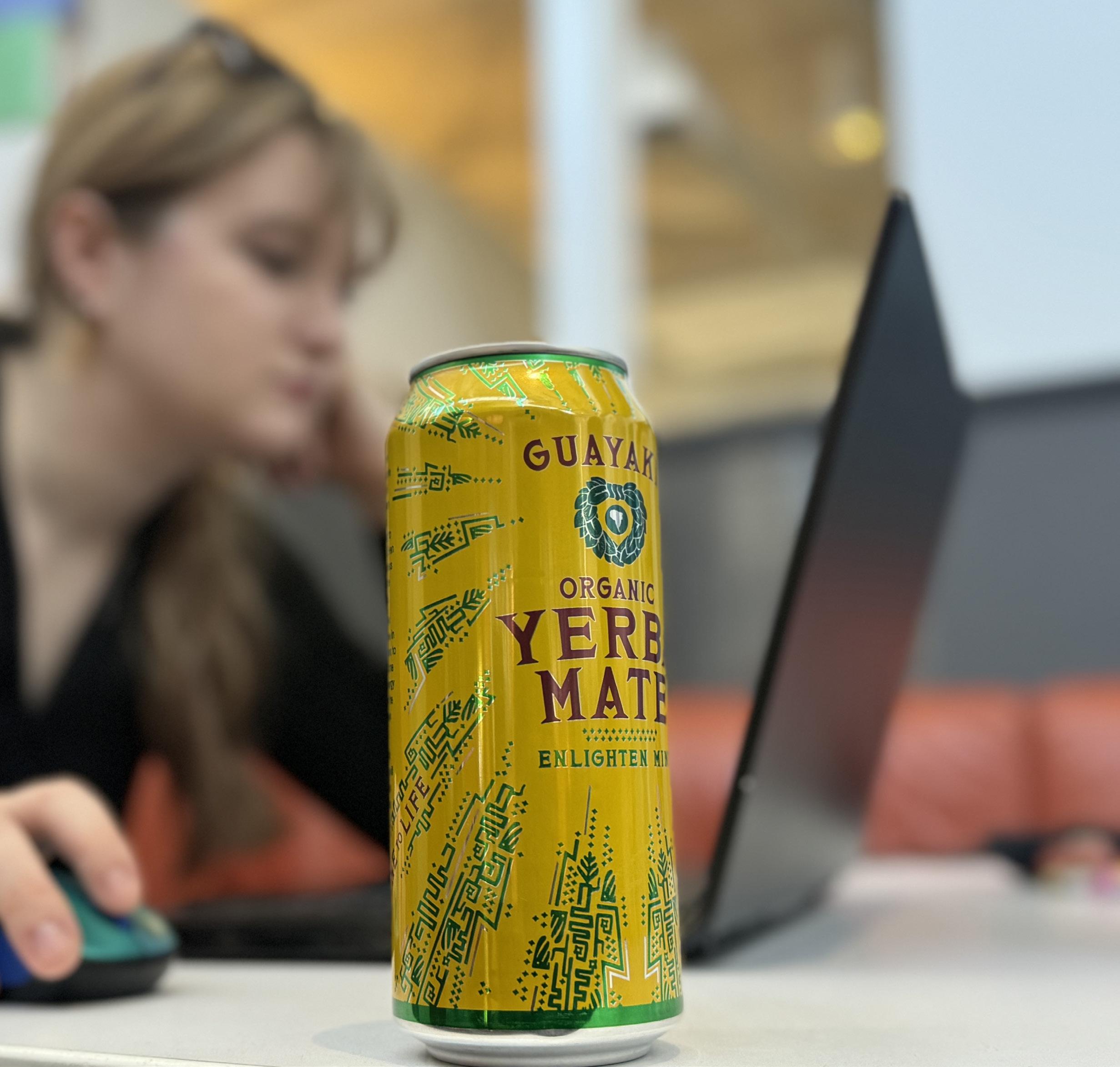
What started as a nice wakeup to jumpstart the day, quickly became something she felt dependent on.
“Now, if I don’t have a cup of coffee, I get a crazy headache in the middle of the day,” Yoss said.
Most Chapman students can be seen around campus with a cup of their preferred beverage. For many students like
junior English major Kai Nyugen, the side effects don’t just stop at headaches.
Nyugen said, “I definitely get heart palpitations. It almost has an inverse effect, where it is supposed to give me energy, but then sometimes just makes me feel more disoriented.”
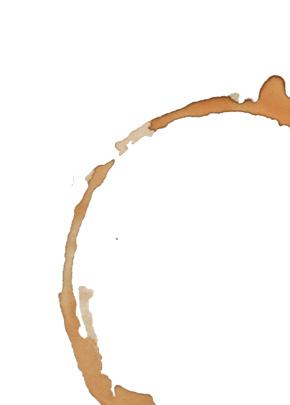
Even though Nyugen is experiencing negative side effects, he still finds caffeine to be a necessity.
“I usually drink it kind of late, like five or six. I have to do it before work so I can get through the day,” he said.
Now, caffeine companies are coming up with even more ways to sell to consumers. Senior computer engineering major Nico Sabinin explains his new method of getting a fix.
“I am definitely a bit of a caffeine fiend, I have recently been using these new things from the gas station. They are pretty much Zyns, but for caffeine. They are just about as good as coffee” he said.
Sabinin explained that a pack of what is equivalent to 15 cups of coffee, cost about the same price as one Tall Starbucks drink.
Chapman University Professor of Chemistry Michael Griffin was able to provide some insight into the effects of caffeine in students.
“Caffeine increases cortisol secretions in people at rest or undergoing mental stress,” said Griffin. “Cortisol mainly helps regulate your body’s response to stress. Too much cortisol can exacerbate anxiety and produce a variety of health conditions such as inflammation, increased heart rate, blood pressure and muscle tension.”
However, for some students, drinking coffee is more than a wake up— it’s an opportunity to socialize.
Even Griffin finds there can be benefits to moderate caffeine consumption.
“I think taking caffeine when you are falling asleep at the wheel can save your life, trained athletes may get a 5% boost in endurance performance, may help studying for an all-nighter but only if the exam is easy,” Griffin said.


“I don’t live on campus but if I want to do an activity with my friends or roommates we will go out to a coffee place, usually we like to try new places. It’s a good bonding experience,” said Yoss.
Chapman Junior and Water Polo Player Annie Lewis explains that she recently began cutting back on caffeine and only using it for athletic purposes now.

help Professor Greenberg keep their energy up during class
“I was constantly in a state of, like, hyperactivity…Then I stopped drinking a ton, and now I only drink it before practice or before a game, and if I’m doing a really long assignment, I need to stay up a little bit longer,” said Lewis.
In using caffeine for both an academic and athletic stance, Lewis has found it to be a good solution, only for the time being.
“I don’t know exactly how many milligrams are in a cup of tea, but I probably will be shifting towards that after college, because I won’t be training as much, and hopefully I won’t be pulling all nighters post college,” said Lewis. “I don’t think I’ll be drinking energy drinks after that, I think it is a short term aid.”

Caffeine has become, for many students, highly integrated into their academic, athletic, and social lives. It’s more than a drink; it’s a ritual, a motivator, and, sometimes, a crutch.
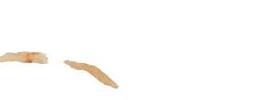
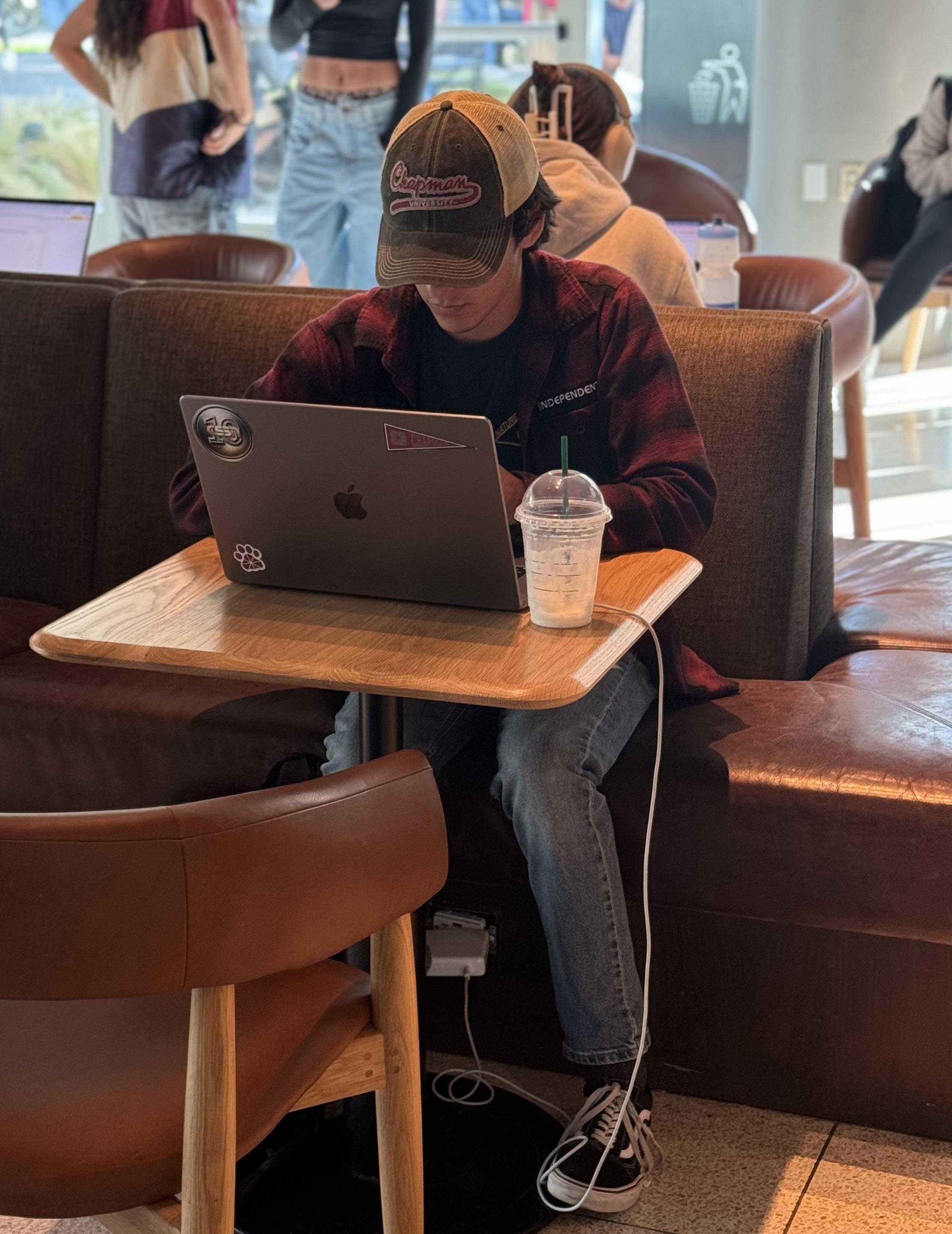

By: Jackson Kelm By Jackson Kelm
The night before his first engineering math final Senior engineering major Tony Polanco was feeling stressed. Drowning in hundreds of slides of content, he couldn’t seem to get any studying done in his dorm room.
That’s when he realized Keck, the engineering building, is open 24 hours during finals week.
After rushing over there and finding a quiet spot to sit on the 4th floor, he got to work.
“I honestly didn’t realize Keck was open all night during finals.” Polanco said. “I wouldn’t have passed that class if I would’ve kept studying in my dorm.”
As finals draw near, students often complain about the lack of space in Chapman’s most popular study spots.
Chapman’s most popular study space, Leatherby libraries, is notorious for filling up. With study rooms being booked well in advance, students are having a hard time finding an open space to study in the nights leading up to these important tests.
“It’s kind of hard to get a booking

sometimes,” said junior business major Jack Finley. “We try and go to the basement [of the library] but it’s hard sometimes if there’s classes in there.”
Elaine Young, the science librarian at Leatherby responded to students’ complaints about not being able to find space.
“Well, we try to make the spaces available for everyone,” Young said. “We have an open reservation system so students can preserve a study room ahead of time. We do have a lot of public open spaces, a lot of study desks throughout the first, second, third floor. We also have an outdoor study patio.”
Leatherby libraries has 21 rooms that can be reserved up to seven days in advance, but often get
filled up during midterms and finals, along with classrooms during weekends and late night hours.
When asked about her favorite spot to study, Young said “It’s a patio area [on the third floor of the library]. There’s some tables outside, it’s nice in the sun.”
During finals week, Chapman’s Argyros Forum (AF) stays open for students until 1 a.m., with Leatherby Libraries rotunda, being open 24-hours for students to use to study.
If students are looking for a busy place to study with friends, some of the most popular spots on campus are the Starbucks seating area outside Beckman hall, or inside the student forum by the

restaurants.
These are ideal spots for those who prefer to study in noisy environments.
Junior communication major Camille DeWilde added “I don’t really like studying in silence, and so the library kind of stresses me out.”
“I’m in the AF a lot of the time.” said DeWilde
In the all-too-often case that campus study rooms are full, many students say they walk to the Orange Circle.
“Sometimes it’s nice to find a table
on the street and bring my laptop,” said senior engineering major David Giani.
“Lots of restaurants don’t mind if you occupy a table for a couple hours, especially if it’s not super busy,” said Giani.
Some students’ favorite places to study outside in the sunshine are on the steps on the southside of the Piazza, or the roof on top of the AF. On top of that, it is common to find students sitting in the bleachers by the field sprawled out across multiple seats.
The most beautiful places to study on campus are hidden, and are only ever occupied by a few
students at a time.
Freshman business administration major Noah Carson said he enjoys studying in the sun on top of Argyros Forum.
“I like the other outdoor areas, like at the library on the third floor,” Carson said. “There’s usually not that many people here. I like these spaces when they’re open, normally they’re not.”
In a study done in the Picower Institute at MIT, research has shown that working in a new environment engages the brain’s place cells, which links memories to a location and helps with recall. Studying in a new spot helps the brain connect memories
of that environment to learned information, enhancing recall and boosting brain function.
In line with the study, it can be extremely beneficial for students to explore campus and find new spots to study each time they have a tough assignment.
Still, some students aren’t as picky when it comes to finding a spot to study.
“I kind of wander around campus until I find an open bench usually,” DeWilde said.
Senior business major Lauren Roman said “It’s usually too busy in the library, we like to study right here [in the piazza]”
If students are looking for a nearby, convenient place to study, they might not have to look far as many on-campus student housing has built in study rooms open 24-hours for students to use.
For example, Pralle-Sodaro and Henley Hall have a study room in the middle of each floor and the Davis Apartments have study rooms on the first floor by the street.
“Those [study rooms] have saved me a couple of times,” said senior engineering major Michael Smith. “One time I was in there until 4am, the morning before one of my midterms.”
Unlike Polanco, Carson said that when looking for study spaces, he can “usually go somewhere new each time.”

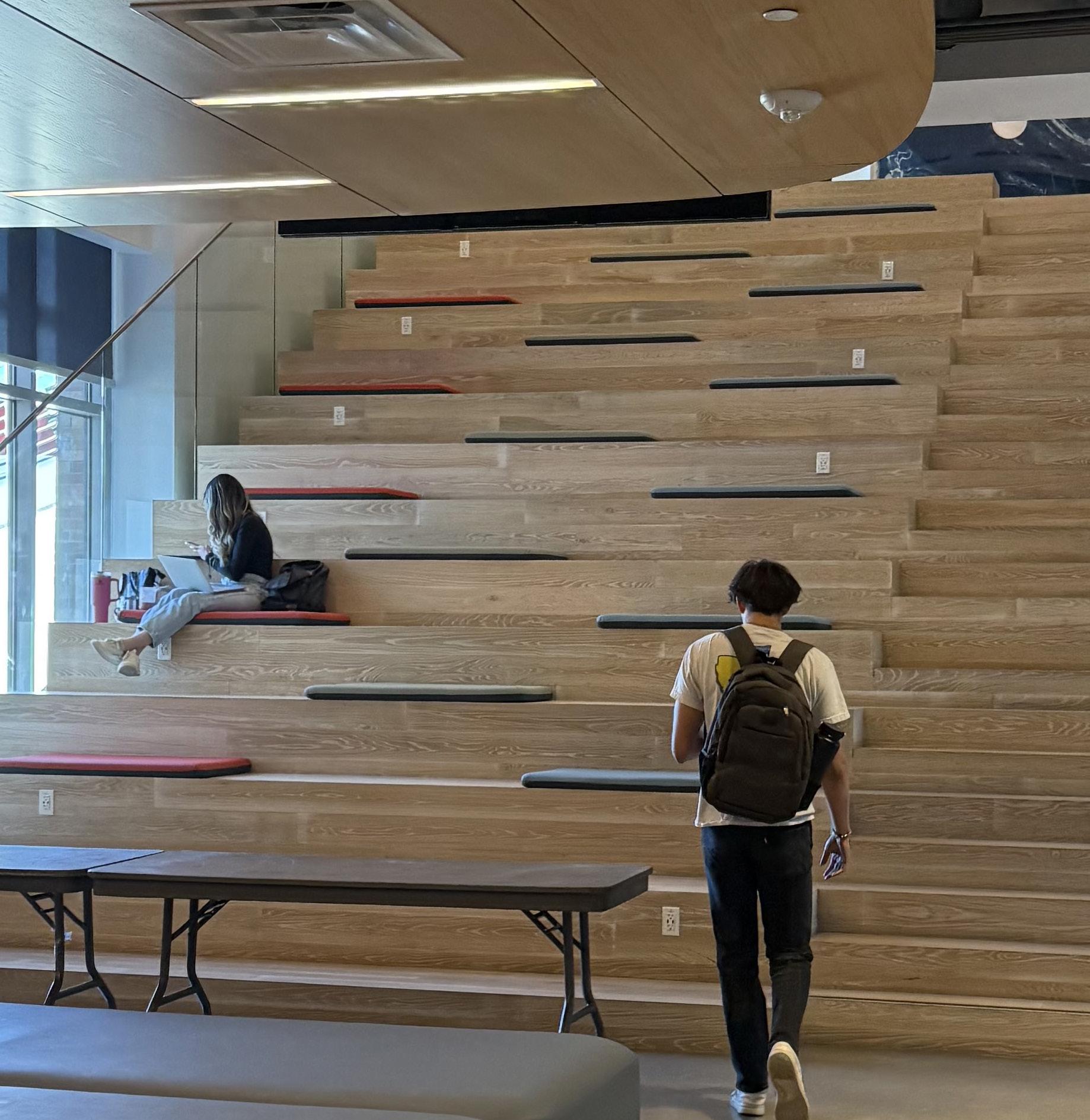
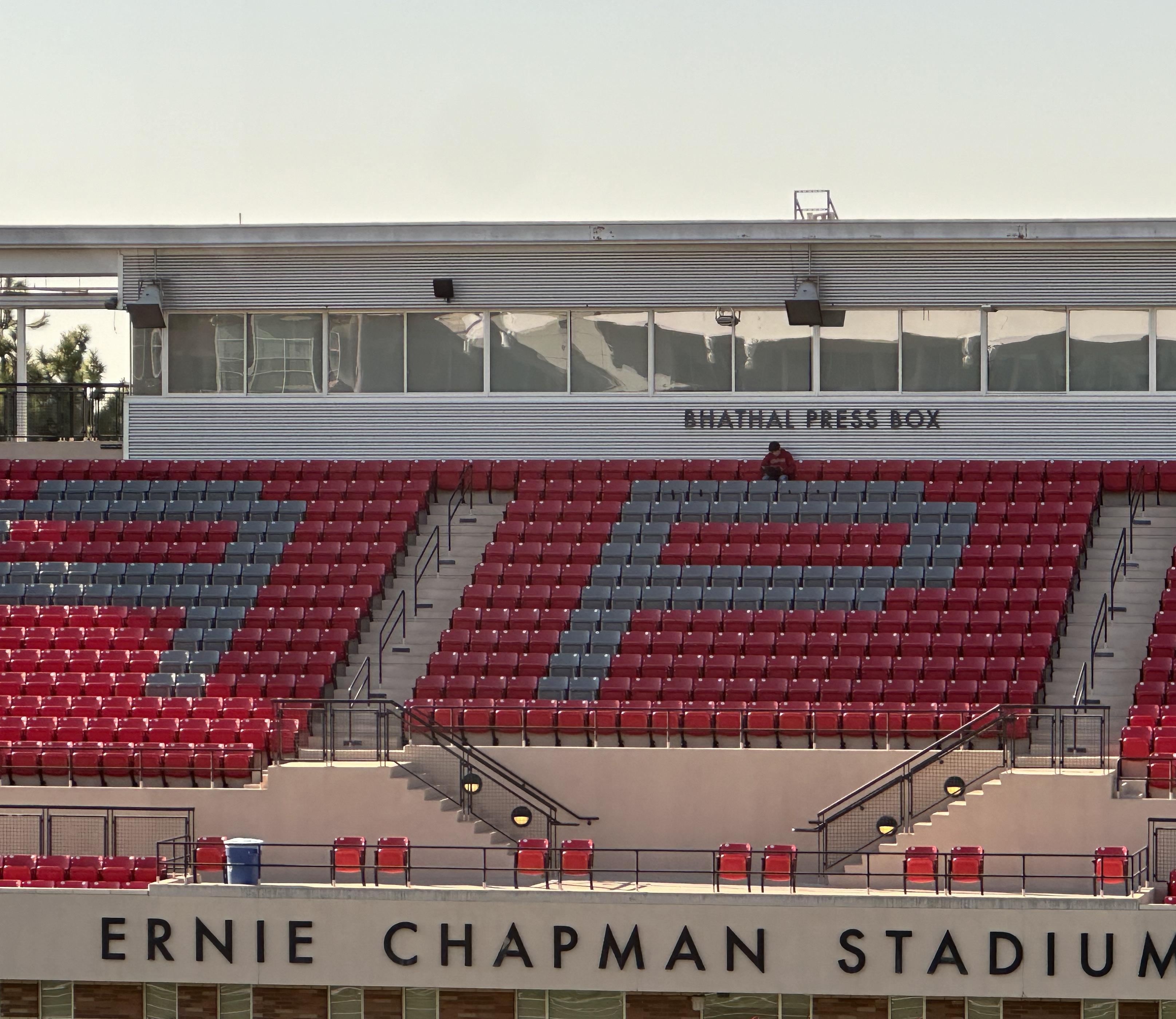
How big of a role does Chapman University’s Division III Athletics play in students’ experience?

Ten seconds on the clock. Jonah Friang dribbles down the field, defenders charging at him. One fakes to the right, and he breaks away. He shoots… And scores.
He looks to the stands to a wildly disappointing crowd before his teammates rush to celebrate with him.
“If I am completely honest, I think school spirit is Chapman`s biggest flaw,” said Friang, a center forward on Chapman’s soccer team.
Friang said the lack of excitement around games can be attributed to the school being in Division III.
“This is definitely a product of being a Division III school. It is hard for students to truly embrace their athletic programs and support them,” he said.
Terry Boesel, director of athletics, said that there are challenges with student spirit at Division III schools.
“It’s not the things you see on TV, the tailgate football game, 80,000 people in the stands, you know we don’t have that,” he said.
Game nights often compete with Greek life parties or students might visit other
California schools with Division I sports like USC or UCLA, Boesel said.
Despite the challenges and lack of attendance, he noted that Chapman has a strong turnout compared to other Division III schools of similar size.
“Within our conference, we have one of the higher attended,” Boesel said.
Miles Gaskin, a journalism major and offensive lineman for Chapman’s football team, said that compared to his previous college, Chapman is not all that bad when it comes to attendance.
“Sometimes a good bit of the stands are empty, but that doesn’t bother me much,” he said. “For one, we have one of the nicest football stadiums in Division III, and also, compared to Macalester, we have way more support.”
Gaskin also recognized that most students who attend Chapman are not here for the sports games.
“It would be cool if more of the campus cared, but I also recognize that the reality of Division III sports is that most people aren’t really going to care,” he said.
college
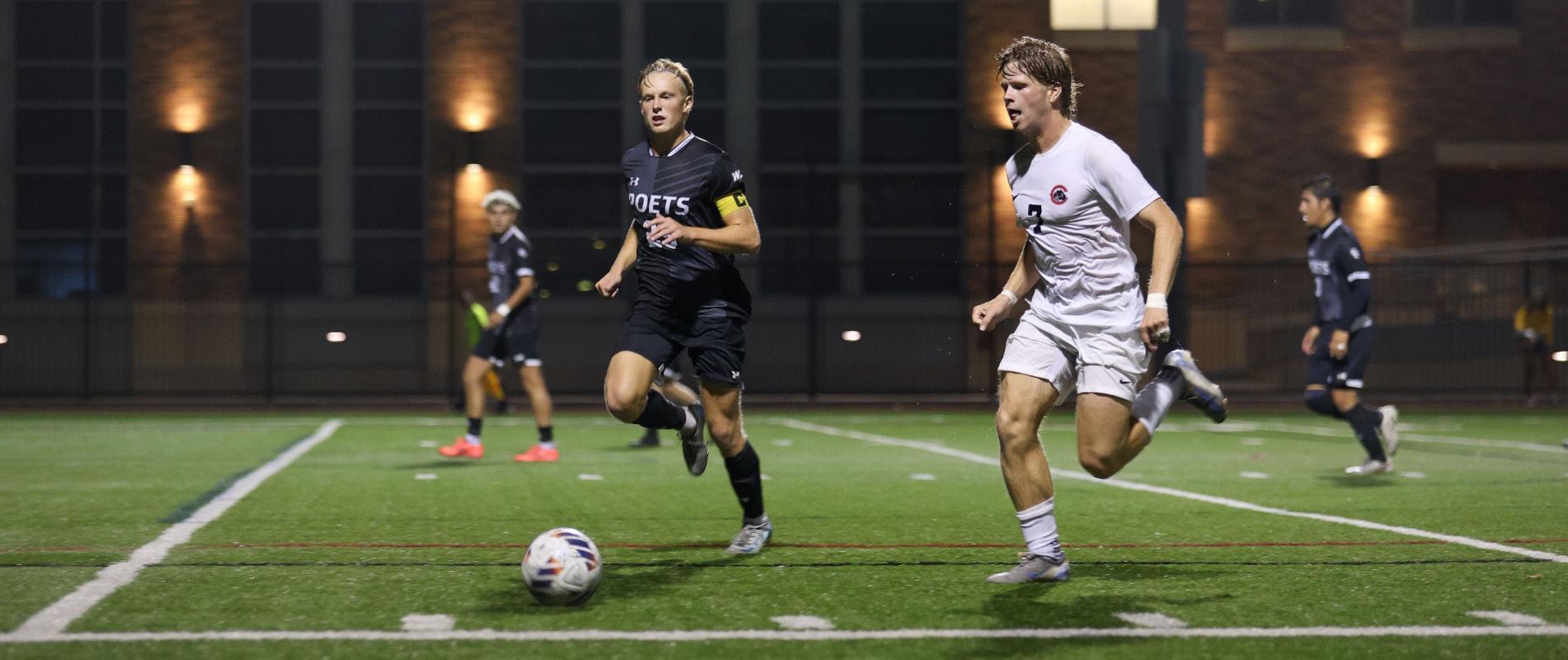


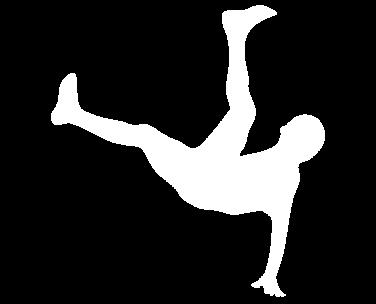


Chapman was once a Division II university, but in an effort to put academics at the forefront, it transitioned to a Division III University in the early 1990s, according to former President Jim Doti.
For some athletes, the appeal of a Division III school like Chapman is the flexibility and prioritizing of academics.
For Gaskin, Chapman was the balance he was looking for.
“My hope was just to find somewhere I could play football and enjoy my college experience, and I don’t think you can get that at every Division III,” he said. “But Chapman is special because you can have that here.”
Friang, however, said it took more work to manage academics and athletics at a Division III school.
“We recruit, just like everybody else; we just don’t, at the end of the day, say, ‘here’s an athletic scholarship, go and sign, and you’re good to go,’” Boesel said. “Chapman’s got a great reputation. So get a great education and continue playing the sport you love.”
The advantages of Division III is that it allows for a broader range of sports, Boesel said.
“
My hope was just to find somewhere I could play football and enjoy my college experience, and I don’t think you can get that at every Division III.
-Miles Gaskin, journalism major and offensive lineman for Chapman’s football team
“The student-athlete experience has been a roller coaster of a time,” he said. “Especially being a Division III athlete, everything is on you to determine your athletic and academic success.”
The most significant difference between a Division III and a Division II university is that no athletic scholarships are awarded. Students-athletes can only receive aid through academic scholarships, need-based scholarships or grants, according to Boesel.
Chapman still has the ability to recruit athletes, although their recruitment process might look a little different.
“The majority of Division III schools are our size or smaller,” he said. “We offer more sports than some of the Division I schools because we do not award athletic scholarships, so it does not cost us anything.”
Another important distinction of Division III universities is that each school creates its eligibility requirements, unlike Division I and II schools, which rely on the NCAA for eligibility requirements. Chapman decides its transfer student policie, time limits, enrollment status and minimum GPA required for students to participate in athletics.
After freshman year, all student-athletes must maintain a 2.0 GPA and pass at least 24 credits toward graduation, according to Boesel.
“We have very few people that drop out because of that,” he said. “But there are not really hindrances to any of the eligibility stuff required for people here.”
The sentiment of many non-athlete Chapman students is shared by Becca Wilkinson, a senior strategic corporate communications major and music business minor.
“Chapman athletics have had no impact on my Chapman experience,” Wilkinson said.
Growing up as a three-season athlete all the way through high school, Wilkinson had no desire to be a collegiate athlete, regardless of the division.
However, she still hoped to keep up her skills in lacrosse, field hockey and skiing. Wilkinson sought out clubs to participate in, but none were available for her preferred sports.
Kylie Seppala, a junior psychology major, just finished her second season as a Chapman University cheerleader and sees the school spirit for some football games but not for other sports.
“I think there’s a big stigma around the label DIII. It just means we don’t offer athletic scholarships. It doesn’t mean the athletes are any less talented or hard-working,” Seppala said. “It’s not like watching them is like watching mediocre or average sports players.”
She was encouraged to join the team and continue her dance and cheer experience specifically because the program was more relaxed than other colleges with high-stakes athletics.
Other students, like junior Katie Thomas, may not want to be directly involved with the university’s sports but still feel they miss out on experiences that an emphasis on athletics creates in college.
“I would’ve loved to go to a school that had a lot of spirit and traditions regarding sports, but it wasn’t a huge factor in my college decision,” said Thomas, a public relations, advertising and entertainment marketing major.
The lack of spirit for athletics makes the university a very different experience from what is typically viewed as college life. The rush of game days, tail-gates and rowdy student sections is non-existent at Chapman.
“I think it would be so fun to go all out for Chapman and get the experience of rooting for a team in college, even once,” Thomas said.
Offering a suggestion to boost school spirit, Max Shauer, a sophomore public relations and advertising major, said Chapman should create a tailgating culture and incentives for students to go to games.
Shauer suggested the university get “groups like fraternities and sororities involved with it and having game days for that.”
While student athletes’ lives are greatly influenced by Chapman sports, everyone else may not feel an impact. The Division III rank and lack of student spirit leave some students feeling uninspired to care for Chapman sports.
For student athletes like Geslin, school spirit makes all the difference.
“It’s always nice to feel like people on campus care a little bit about what goes on with us,” he said.
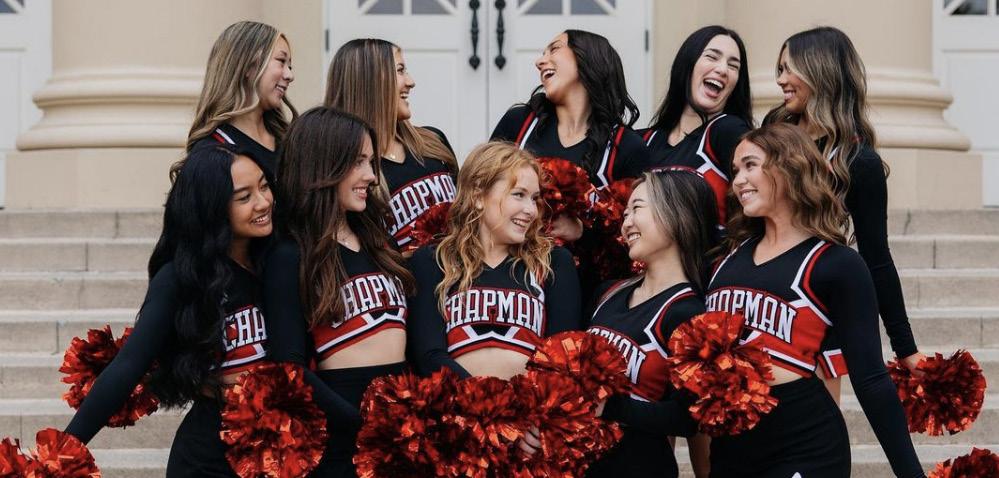

By Isabel Torres
“Clear and substantial restriction on speech” is how the Foundation of Individual Rights and Expression (FIRE) views Chapman’s free speech policy.
FIRE is a non-profit organization dedicated to defending the right to free speech on college campuses. They survey and analyze the policies of universities and colleges. Out of 252 universities surveyed in 2024, Chapman was ranked 181 for its free speech policies.
Free speech protects the expression of opinions and ideas, even unpopular and offensive, from government interference. However, as a private institution, Chapman and its administrators have the discretion to create their own policies regarding free speech on campus.
Carson Rudy, a senior political science major, reiterated Chapman’s right to have discretion over what is permitted as free speech.
“Chapman itself is a private school. They can do what they want. If some kid says whatever they want, professors have the right to throw them out,” he said.
However, Chapman’s current policy underlines that academic freedom and freedom of speech are unconstrained meaning all forms of speech are protected, including the “offensive, unwise, immoral, or wrong-headed.”
Academic freedom entitles professors to free speech related to the subject in classrooms, as well as full freedom in research and publishing the results.
Dr. John Compton, the political science department chair, emphasized the vital role that academic freedom plays in safeguarding professors.
“Academic freedom of faculty members exists for a reason, we don’t want faculty to be afraid they’re going to be punished or fired because they say something that offends the board or an administrator at the university,” he said.
While academic freedom is essential to the dynamic of higher education, Compton explained that it can be a double-edged sword.
“Academic freedom is sort of the right of freedom of speech for the professor to say what they want in the classroom or in their publications,” he said. “And there are times when that freedom comes into conflict with the students’ freedom of expression.”
Compton said professors who impose their own personal beliefs in the classroom can create unwanted outcomes.
“Sometimes there are cases where students will say, we feel like this professor’s biased,” he said. “They’re not allowing all things to be expressed. And I think those cases are really regrettable.”
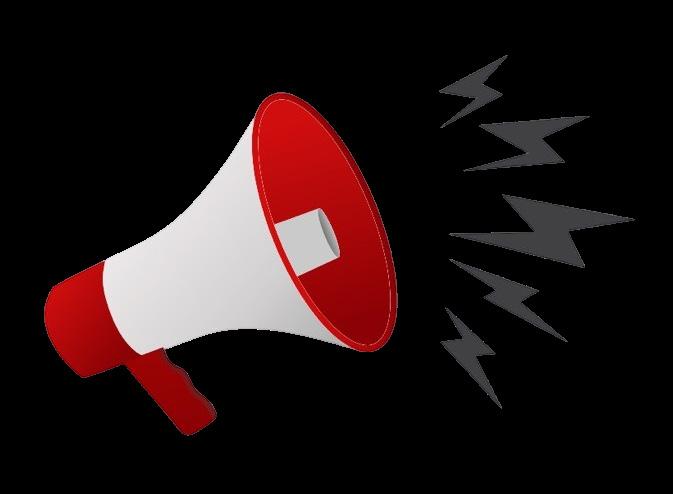
Some Chapman students like Charlie Sisk said they feel pressured to conform and adjust their opinions to align with professors’ political beliefs.

“I definitely have multiple times written essays, answered tests and all the above on stuff that I don’t really feel, just because I know a professor is leaning one way,” said Sisk, a junior political science major and president of the Chapman Republicans Club.
Sisk argued it wasn’t entirely negative, though, and pointed out there are benefits to having to write about beliefs that are not your own.
“It teaches you how to argue both sides, which can be positive at times,” he said. “I have also written some other essays on Republicans, so I guess it’s a good balance.”
Yness Riedel, a communication major and the president of Chapman Democrats, also spoke on students censoring their own opinions to appeal to professors.
“If you have an assignment coming up, like an opinion assignment, you’re probably going to want to write something that more aligns with the professor’s opinion to play it safe,” she said. “I know that those are very real concerns for people.”
Compton said that the role of administrators is facilitating open classroom environments, but they are not in a position to control and regulate professors.

“I’m a department chair, and all we can do as administrators is just really try to promote a culture of open discussion, where professors are not letting their biases into the classroom,” he said. “But at the end of the day, we can’t really force people to do anything.” Rudy said a homogeneity of ideas and high tensions comes with small classroom sizes.
“In smaller classrooms, a lot of people seem to have the same opinion, and sometimes it’s harder to speak out,” he said.
While Rudy has felt pressure to conform, he has never experienced a teacher grading with bias.
“I’ve never had a teacher mark me down or give me a worse grade for giving my opinion,” he said. “So I’ve been really happy with that.”
Rudy said that it is important to protect all forms of speech, as outlined in Chapman’s policy.
“I feel like there’s a new wave of people, and there’s a new thing called hate speech,” he said. “I’m a believer that hate speech shouldn’t be outlawed.”
Compton said that there was a shift in the 2010s for regulating speech on campuses.
“There was more of a shift to sort of police offensive speech, you know, particularly offensive speech that was thought to be directed at marginalized groups, things like that,” said Compton.
Compton further elaborated on the history of “hate speech.” While many European countries have enacted laws that restrict speech that is considered offensive or that targets minority groups, the U.S. holds a different position.
“What’s different about this country is that our courts
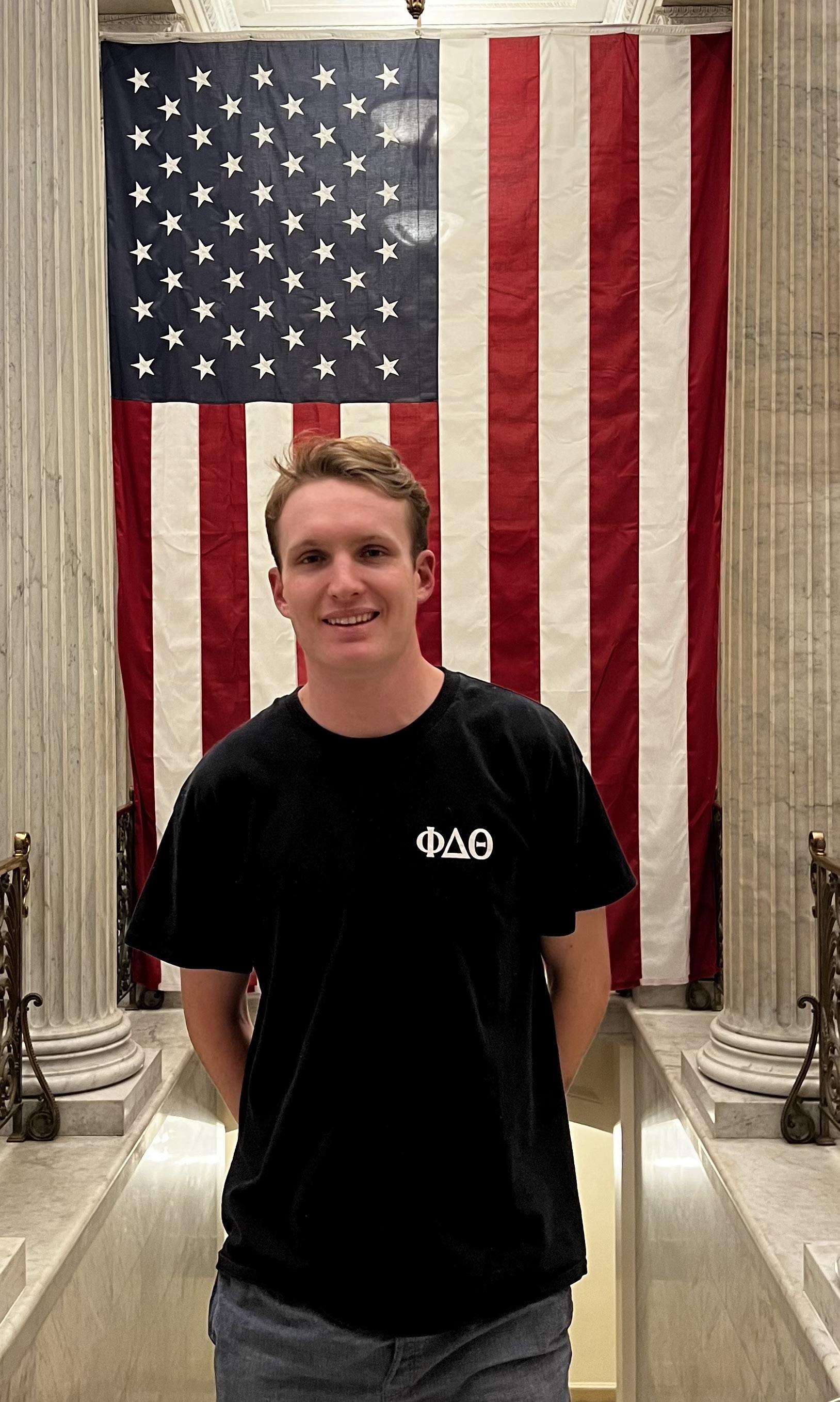

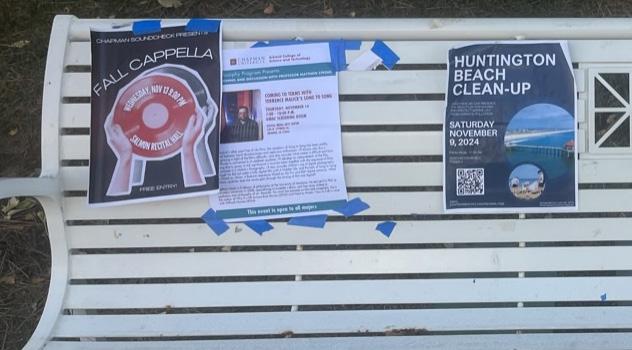

“If you have an assignment coming up, like an opinion assignment, you’re probably going to want to write something that more aligns with the professor’s opinion to play it safe”
-- Junior Yness Riedel
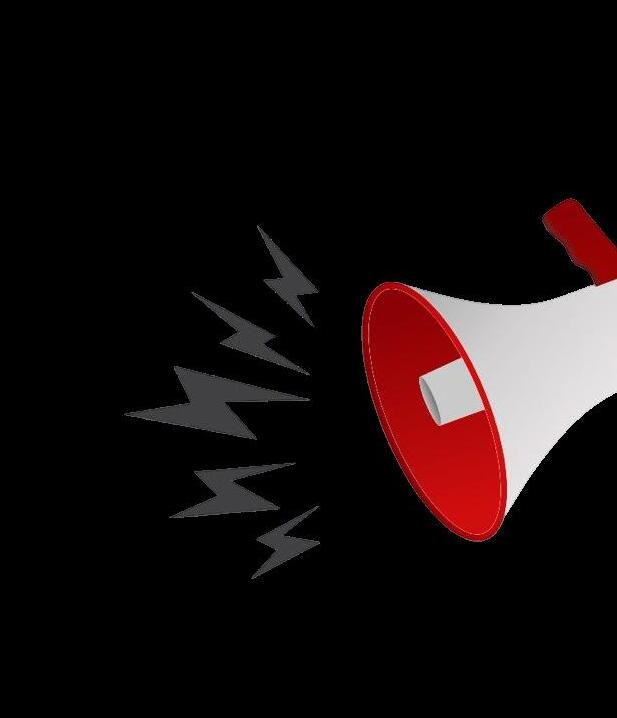
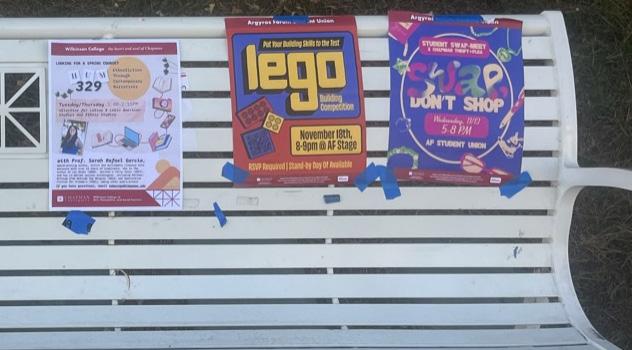

have generally held that even hate speech is protected by the First Amendment, as long as you’re not calling for imminent violence against some other group,” he
Now, there is a stronger push to return to the model used 20 years ago.
“You can’t just police certain opinions,” said Compton.
Administrators at Chapman manage guest speakers and have the authority to restrict anyone from speaking on campus, and Sisk said he found these policies frustrating when bringing in a guest speaker for Chapman Republicans.
“There was one instance we tried to bring someone and got several approvals,” he said. “But apparently, at the higher level, the board level, they denied him.”
The right to protest is also protected from governmental restriction under the First Amendment; however,
Chapman has been slowly cracking down on students assembling to protest.
Reidel spoke to the frustration of Students for Justice in Palestine (SJP) with the increase of protest regulations.
“When it comes to on-the-ground protesting, they have been so restrictive,” she said. “It’s gotten to the point where it feels like it’s not for the betterment of other students, but it’s more to silence us.”
While the focus on free speech on college campuses comes at a time of heightened political tensions, many continue to advocate for minimal restrictions.
“Universities are realizing that once they step in and start policing speech, you’ve got to police it all the time everywhere,” said Compton.
By Gwen Buchanan

Courtney Hoile has been taking the birth control pill since she was 12 years old to control her cramps and acne. During her sophomore year of college, she ran out.
In the midst of her dad switching jobs, Hoile, a 2024 screen acting graduate, was left without insurance to cover the cost of her pill, let alone a way to get it.

“I was kind of in this gray space of having
to access to contraceptives.
“What I loved about Chapman is that they can accommodate different types of birth control to what you need or what you prefer.”
At least, this used to be the case.
For decades, the Health Center provided prescription birth control pills and safe antibiotics to students. Now, the center just prescribes them.
“We had a change of leadership at the Center, and then there became some questions regarding what
one packet left and not having the resources to get another one through a primary doctor,” said Hoile. “I was really stressing out about it.”
Like many, Hoile was unaware that the Chapman Health Center provided birth control pills and free condoms to students, until a friend referred her.
“With the society that we live in today, weight gain and body image is a super sensitive topic, and a lot of apprehension with a lot of women is finding a birth control that doesn’t do that,” said Hoile.
we were licensed to dispense, and what we’re not for medications,” said Jerry Price, Dean of Students.
But students won’t have to wait long, according to Price, who said the University is already working to understand the requirements to resume access to the contraceptive pill.

Hoile said that the Health Center provided her with the best experience she had ever gotten when it came
“Now we’re just prescribing it as we get clarity on what we can and can’t dispense, and I suspect we’ll be resuming that come spring,” said Price. “We are just trying to be at an abundance of caution.”
Back when the Health Center did provide medication, the staff gave Hoile pills with the same hormone levels

Gwen Buchanan
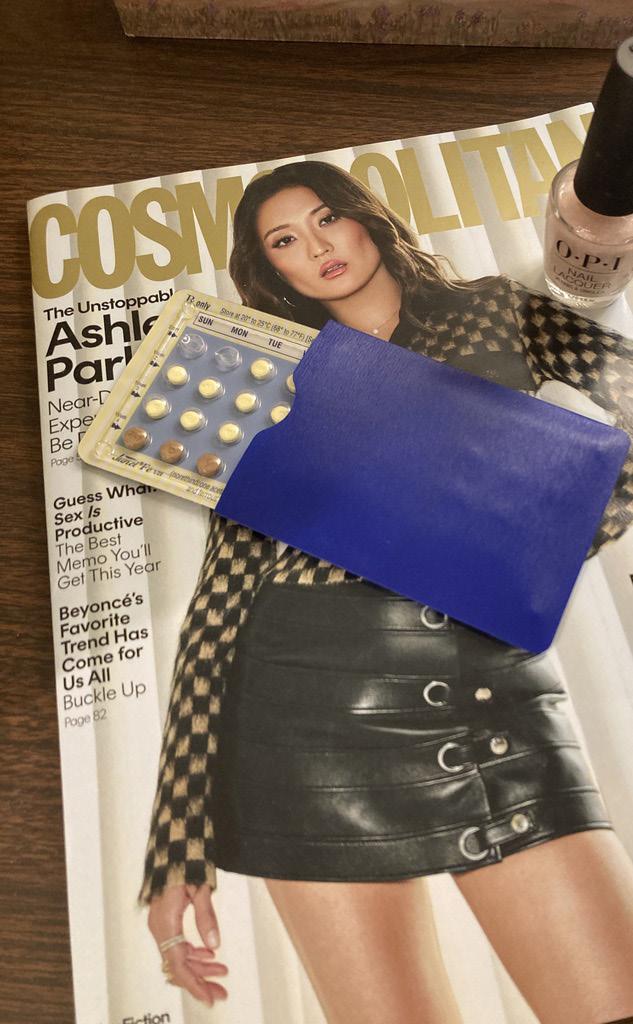
14 percent of women between ages 15-49 use the pill form of birth control, according to the CDC; yet some still struggle to find affordable and accessible contraception pills.
Photo by Gwen Buchanan
as her previous prescription. According to Hoile, these pills were at a low cost, and with better service than a primary care doctor.
“They kept the level of privacy and professionalism at the same time,” said Hoile.
To Hoile, Chapman was a safe space to get the medication she needed, free of judgment, which is what the university is striving to return to come spring semester.
“When you walk into the health center, there’s a huge
canister of free condoms, and it’s like, go for it,” said Hoile. “That’s what I love about the university. There’s a no shame policy, and they just provide what you need.”
Nicole Kavros, a junior journalism major, has tried three different forms of birth control, but has never been to the Student Health Center.
“I don’t know anyone who’s gone to the Student Health Center, I don’t think anybody knows about it,” said Kavros. “It’s not advertised at all. Maybe it’s just because they don’t want to encourage people being on birth control, because then it leads to them having sex.”
Kavros has been on the contraceptive pill, had the Nexplanon (a divide implant placed underneath the skin of the arm) and the intrauterine device (IUD) all over the past five years. Yet, she feels like she can’t talk about her experience.
“People just don’t talk about how much birth control affects women and emotionally and physically, it just changes your entire system, which is crazy,” Kavros said.
Kavros also said the Health Center should advertise the options they offer to students, as she wasn’t even aware that access to the pill had been temporarily suspended.
“I definitely think they should advertise it more because birth control shouldn’t be a controversial topic. Ever,” said Kavros.
Annika Lindberg, an integrated educational studies and political science double major sophomore, is considering taking the contraceptive pill, but is hesitant.
“I’m really concerned with how many chemicals are in birth control

that are banned in other countries, or that the FDA just passed that just because we needed birth control.”
She has only recently felt the need for the pill as a way to minimize pain.

“As I’ve gotten older, I have started to experience more painful cramps where I literally cannot move, and I’m in so much pain, so I would like to get rid of that problem,” Lindberg said.
When it comes to the FDA approving birth control, Lindberg said that the legal system should be better.
“These are our bodies. I think that [the FDA] should be taking care of them, and they should regulate that,” Lindberg said.
Although she said she will go through insurance, Lindberg would refer a friend to the birth control services offered at the Chapman Health center.
While female birth control is more common among college students, different forms of male birth control are in the early testing stages, according to the Washington Post. Lindberg said that these forms of male birth control should also be offered to students, once they become available to the public.
“[Male forms of birth control] have seemed to be safer, yet we kind of are in this thought process that it can only be for women,” said Lindberg. “So I just think that’s a misogynist viewpoint that we need to get past.”
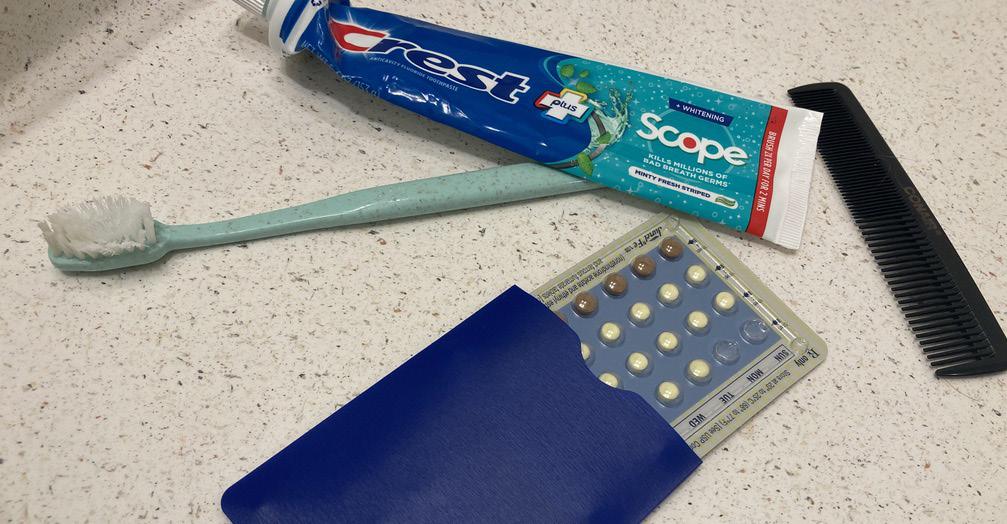
Some students feel abandoned by university support
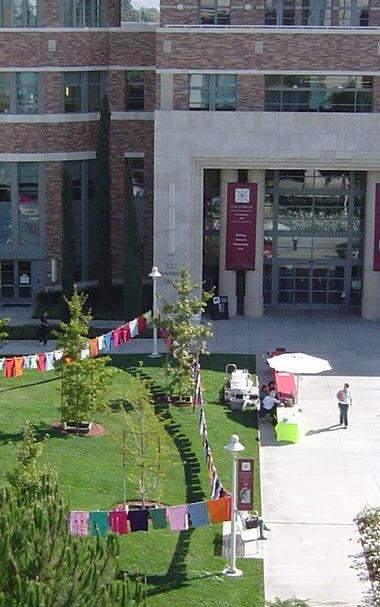
By: Camille Simmons and Ashlyn W By Camille Simmons and Ashlyn Woo oo

*Disclaimer* There are some sources in this story that would like to remain anonymous due to the sensitive nature of the topic.
Despite being sexually assaulted by another student
her sophomore year, an unnamed senior health science major did not feel as though there was a need to report it to the institution.
“I kept making excuses, telling myself that all he did was kiss me, grab my ankle and pin me to a wall. At least I wasn’t raped,” she said.
on resources for students who may have experienced assault. Throughout the year, the school

At the time, she thought of her experience as simply “no big deal.”
“I was ashamed that I couldn’t say anything, and that I put myself in that situation even though it was evidently clear that it was not my fault,” she said.
While attending college, one in 16 men, and one in five women are sexually assaulted, according to the National Sexual Violence Resource Center. Across university spaces nationwide, sexual violence runs rampant with 90% of assaults going unreported.
On Chapman’s own grounds, evidence of this fact does not go unnoticed.
Nearly every bathroom stall door has a flier providing information
faced with such acts of harm?
According to the California Department of Education, Title IX is a federal law passed in 1972 to ensure that students and employees in educational settings are treated equally and fairly, and protects against discrimination based on sex, including harassment, violence and abuse.
On May 6th 2020, the US Department of Education finalized new Title IX regulations requiring campuses to designate a “Title IX Coordinator.”
As of August 14, 2020, these regulations aim to protect students from all forms of sexual harassment under state and federal law.
Colleen Wood is Chapman’s assistant vice president, associate dean of students and Title IX coordinator. Wood works with students in investigations of reported incidents of sexual misconduct.
“I think students use the phrase Title IX to cover a broad spectrum of things, when Title IX itself refers to a very specific federal law,” Wood said. “So that gets confusing.”
Although Title IX covers all forms of sex and gender based harassment such as rape, fondling, stalking, dating/domestic violence
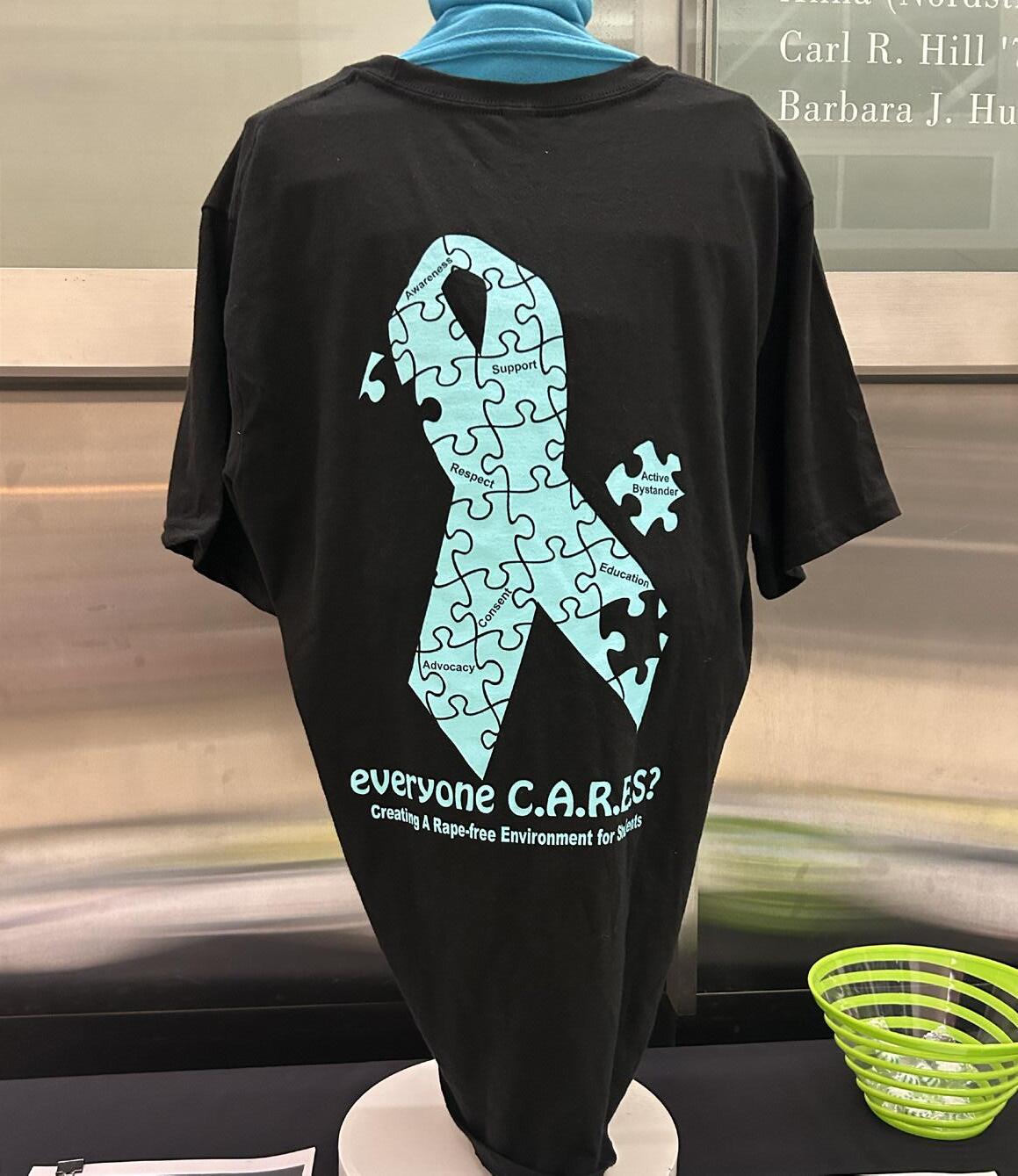
and more, there are parameters limiting its reach strictly to oncampus incidents.
Students seeking out Title IX services have the option to go through a formal investigative process in which both the complainant – the individual alleging misconduct – and the respondent would be notified.
According to Wood, under 2020 regulations, the Title IX policy requires a detailed written complaint explaining what happened and has to be signed by a coordinator or a complainant themself.
“Give me the who, what, where, when,” Wood said.
From this description, Wood
would then determine whether the detailed behavior would constitute a policy violation, and issue a notice of investigation as well as provide the stated details to the respondent.
Within the investigative process, security camera footage, text messages, social media posts and keycard entry can be used as forms of evidence to build a sufficient timeline.
“If it’s a case where someone says, ‘I didn’t have the capacity to give consent,’ security camera footage can be helpful to see how people are moving,” Wood said. “Like if they’re not walking and someone’s carrying them because they were too intoxicated.”
Due to the coordinator’s
impartiality, Wood explained that supportive measures are provided to both parties, the one voicing the complaint and the one facing it.
“We’re not just here for the complainant, we’re also here for the respondent and we’re providing these supportive measures for them as well,” she said. “Sometimes that seems really unfair to the complainant, so we don’t guarantee outcomes.”
While coordinators cannot force participation in hearings, efforts are made to include all relevant voices in hearings. Then the board then makes a decision and both parties have the right to appeal.
According to Wood, Department of Education regulations dictate the process and timelines. The 2020
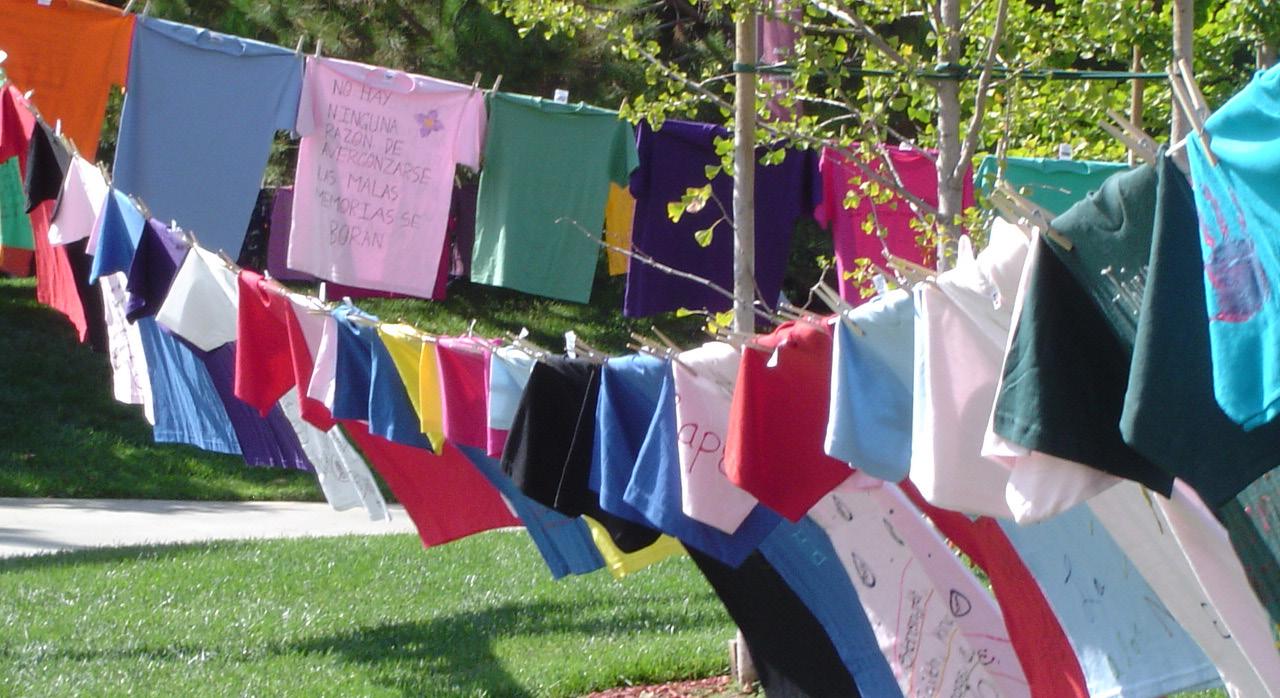
regulations also mandate direct cross-examination, sometimes conducted by attorneys, which has contributed to a decline in hearings.
“You always retain that right to an investigation, however, it is a really difficult process and I try to be upfront with people about that,” Wood said.
There are alternative solutions offered to students who do not wish to undergo this formal investigation.
“We have something called an alternative resolution, which is an agreement between the complainant, the respondent and the university,” Wood said. “These are flexible agreements that all parties have to agree to.”
Some of these alternatives consist of ensuring students are not placed into the same classes, assigned to the same residence halls, or even extended to study spaces or abroad programs.
An unnamed junior political science student said that her first meetings with Wood during her alternative resolution process were extremely daunting and nothing was resolved in the end.

the informal process, the respondent would still be in my organization and that I have to see him every single day in classes that we have together,” she said. “I was
true according to statistics.
When going to attend these meetings, those like the unnamed political science students feel that it’s “the most intimidating environment to walk into.”

order put into place.”
“I didn’t know that by choosing
Wood knows that students may often feel “invincible, like ‘it’s not going to happen to me or my friends,’” but knows that it isn’t
“You’re sitting here, trying to get help for the most vulnerable thing that’s happened to you in this stale room with someone who when you’re talking to her, it kind of felt like it was going in one ear out the other,” she said. “It’s kind of a lot to take in, especially when you’re feeling so poorly.”
At first, she said she felt validated by Wood at the meetings and

listened to but then she said that she felt let down when she explained she did not want to go through a formal investigation.
“I knew that if I went into that, it wouldn’t go my way,” she said.
Although she was repeatedly told how severe her case was in terms of legal offense, the student said that it was not handled with the intensity promised.
would often bring friends to her meetings with Wood for emotional support, which felt more like finalizing a contract than advocating for her experience.
“A part of the reason
develop programs and resources to guide and support trauma survivors. With over 20 years of psychotherapy experience, her presence on campus is integral to the Title IX process.

“They were telling me what I wanted to hear,” the student said. “I wish that there was a way I could have been communicated to where I felt like they were truly on my side and truly going to do something.”
The student explained that she
to date, like I have so much imposter syndrome is because of the way that it was handled,” she said. “Don’t start a process and leave me in a place of defeat and sadness, or in a place of, like, ‘maybe I am crazy’”
Dr. Dani Smith, Chapman’s sexual assault counselor, has worked closely with students to
“Unless you experience severe trauma, you can’t really understand the profound effect it has on people when their bodies are violated in any way or their safety is impinged upon in a violent way,” Smith said. “And violence isn’t only physical, you know.”
Smith added that the school offers several different programs aimed at “raising awareness and educating about consent,” including P.E.E.R. and Creating A Rape Free Environment for Students (C.A.R.E.S), a student-led program under Smith.
Proactive Education Encouraging Responsibility (P.E.E.R.) aims to equip students with the information and skills needed to navigate college and life challenges,
according to Smith. Healthy Panther falls under P.E.E.R., however, it covers a vast array of information beyond sexual misconduct within a fixed time limitation.
The school also holds on-campus events to raise awareness for sexual violence such as the Clothesline Project, Take Back the Night and the Active Bystander Intervention Award.
Wood said that Title IX always offers to connect students with on-campus advocates, including Smith.
“I felt like I was trapped,” the unnamed political science student said. “I would have definitely wanted to utilize some people if they were offered to me, but they were not. The only person I talked to throughout the Title IX process, who I felt I was assigned to speak to was Wood.”
Her case went unresolved. Despite attending meetings with Wood for nearly a semester, the respondent refused to agree with the alternative resolution. Since then, no one from Title IX has remained in contact with her to offer other solutions.
“The experience didn’t go away when he just decided to disagree,” she said. “This is a lot deeper than Title IX. It’s
deep rooted within the system of women, and that’s deep rooted within the person that wronged me.”
Chapman still has work to do to ensure the physical and emotional safety of its students within the realm of sexual violence. Smith believes that college campuses are vulnerable to sexual violence because the population is vulnerable.
“Students who aren’t experienced when it comes to intimacy and relationships, they’re at the age where they’re looking for connections. That’s normal, but it also sets them up to be targets,” she said.
Smith said she is dedicated to not only understanding students who have experienced trauma, but hearing, believing, supporting and providing a safe space for them in
her office.
“Just taking advantage of my experience and my role here would be what I ask the university to do,” said Smith. “Also, helping to nurture and support the programs that I think really help students.”
The political science student still feels this unresolved emotion towards her experience throughout the resolution process.
“I still hold a bit of a grudge, not just for what happened to me, but for the way that it was handled entirely around me,” she said.
If you have experienced trauma, or are in need of support, the following resources are available:
Sexual Violence, Rape, Harrassment Support
P.E.E.R. Health and Education
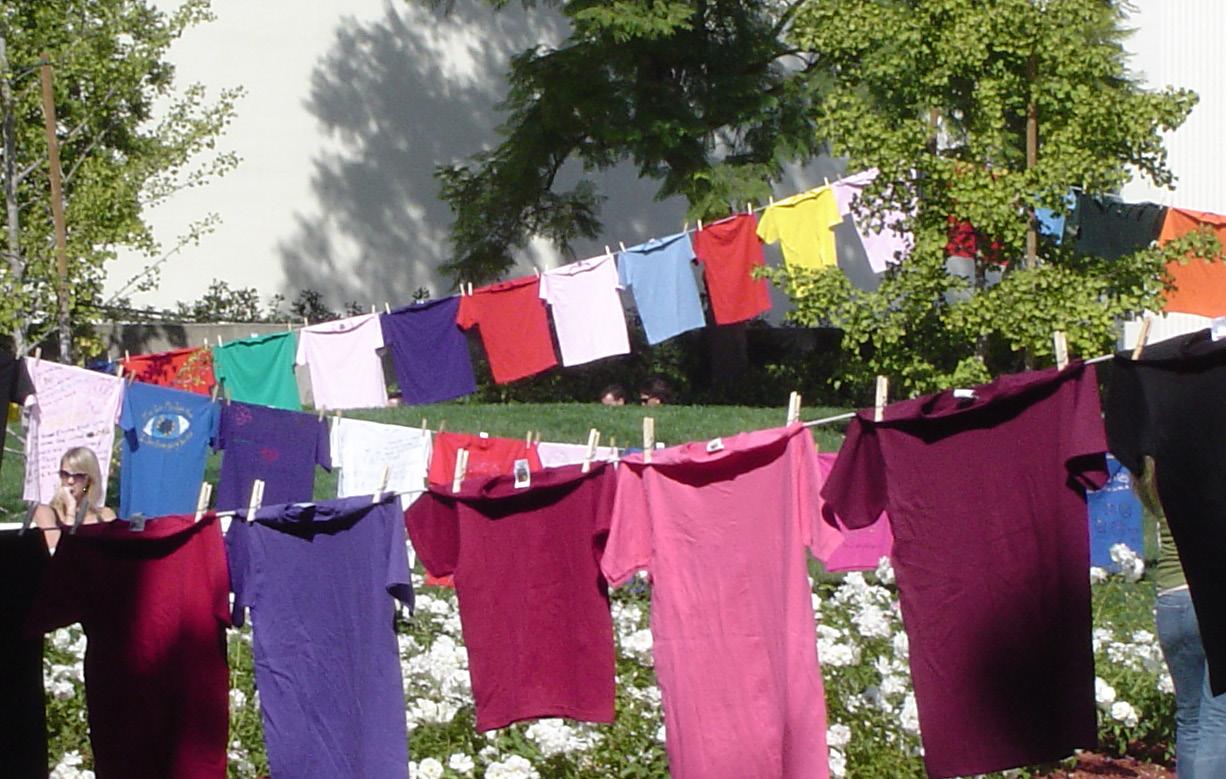
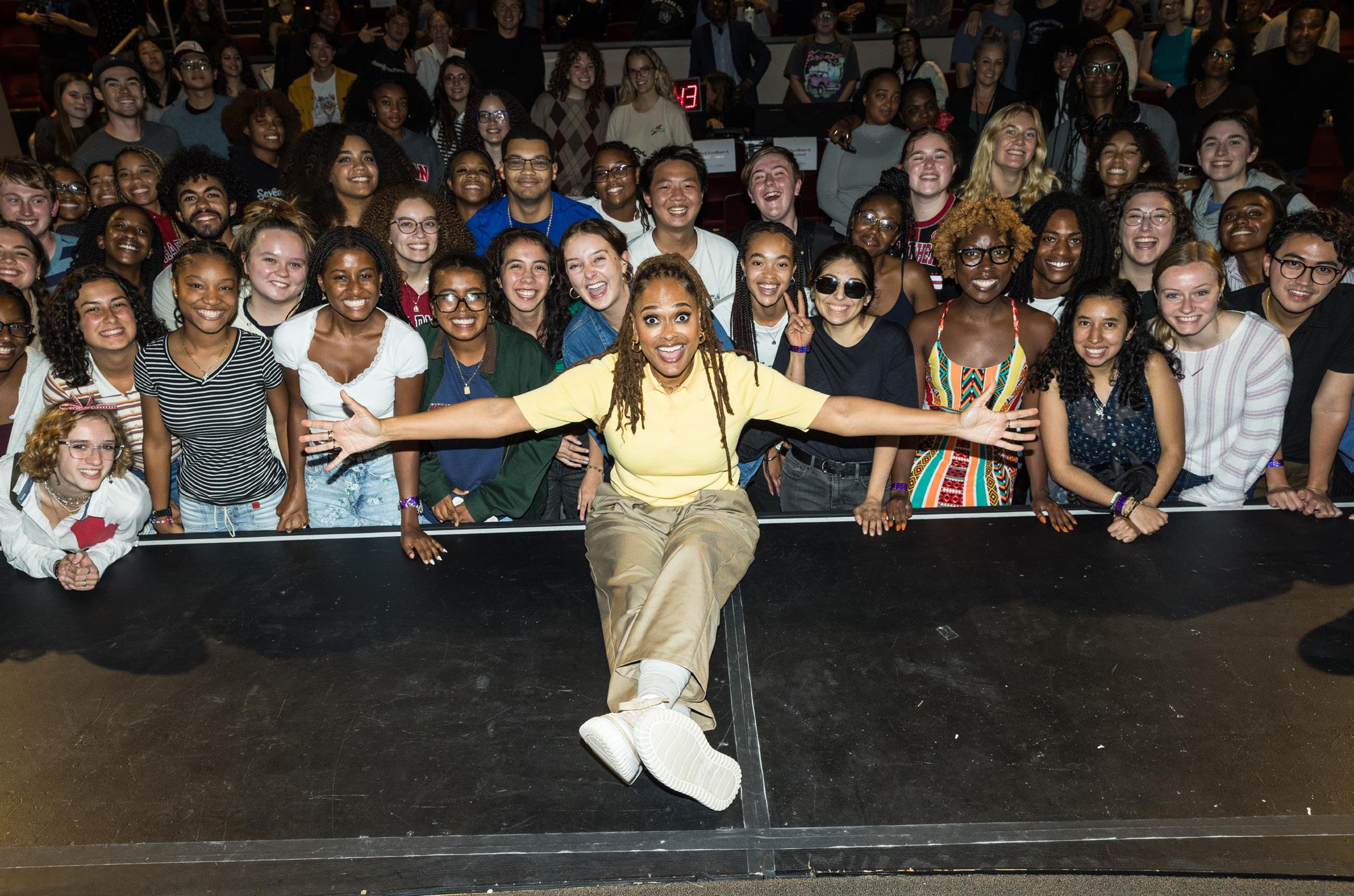
(of the celebrity kind)
By Camille Simmons
The Folino theater has been visited by a great number of stars, from global pop sensation
Billie Eilish to three-time VFX Oscar winner Rob Legato, Hollywood’s best always seem to be Chapman bound, and Chapman bound students seem to agree.
Even as a business major, sophomore Diya Kulkarni felt this unique proximity to celebrities was a major draw in her college decision.
“I do think it is something that is definitely an attraction about Chapman,” said Kulkarni.
Every semester (and periodically throughout), Dodge College releases a list of some of the biggest names in the film industry set to come speak in interview-style events called Master Classes.
Some of these names even stay for a number of days as “Visiting Artists,” to instill wisdom in the university’s aspiring filmmakers.
According to Dean of Dodge College Stephen Galloway these master classes serve three primary purposes: education, reputation and employment.
“You are really going to learn from them about the nuts and bolts of the industry you want to go into. So the first goal is to keep our students informed at the highest level and the most contemporary aspect of the business,” said Galloway.
Surprisingly, these high-profile speakers are booked without any cost. The price of visits from those big names could run anywhere from $100,000-200,000, which is not within the university’s ability to provide, according to Galloway.
“Also, when you pay one, you have to pay everyone. So we have a very firm principle. We will not pay.” said Galloway.
Apart, of course, from a simple Uber and a batch of cookies custom decorated with a movie poster from the speaker’s repertoire. Galloway said minimal gestures like these act as phenomenal advertising.
Senior creative producing major Jackson Jennings said that master classes offer knowledge from highly awarded and experienced professionals apart from university professors.
“They’re just incredibly insightful for people in Dodge who are trying to go into the industry who want to know more of what it’s about hearing from authorities,” said Jennings. “I’d say probably one of the best benefits of attending the university.”
As for Chapman’s presence as a direct pipeline to Hollywood, Galloway said that as these visiting speakers return back to the industry, they do so with glowing reviews of their panther experience.
“The reputation we have in Hollywood is absolutely stellar at the moment. And then when people employ the students, I always hear great feedback,” said Galloway. “So all of this is about sending all those people home where they go, ‘Do you know Chapman?’ ‘Oh yeah, I went and had a wonderful experience.’”
Although this creates a sense of ease for students looking to network within the industry, Galloway explained that the process of securing such monumental figures in the industry is not an easy task.
Months, or even years, of effort go by before having guest speakers officially scheduled as a part of the
highly anticipated lineup. An operation of weekly staff meetings, vigorous updating of spreadsheets and rearranging dates make these events possible, said Galloway.
“We have connections in the industry and we have to use them,” Galloway said.
Galloway said he believes that these events serve all Chapman students, both within and apart from Dodge College.
“We have connections in the industry and we have to use them.”
Stephen Galloway, Dean of Dodge College
“I hope that by interacting with us, our students - the non-Dodge students and the Dodge students - will learn from each other and integrate because I actually think what you learn in history or philosophy or physics is just as important,” says Galloway. “Our job is to teach all of you to think deeper, and there are many ways to do that.”
Sophomore public relations and advertising major Lily Jones said that the film screenings that go along with Master Classes are also a great opportunity for interacting with movies she may not have gravitated towards in her free time.
“I try to go to most every one of them. I think it’s applicable to all majors, like even if it’s a director who is doing the master class, I find as a PR and Ad student there is something I can get out of it,” said Jones.
Despite this sentiment, not all Chapman students feel compelled to, or are even able to attend these Master Classes.

Students taking advantage of

“I wanted to go to so many, and I was really upset that I couldn’t,” Kulkarni recalled. “In comparison to a Dodge student, I guess I wouldn’t be getting as much as a career benefit or academic benefit. But, if I’m paying money to go to Chapman, I feel like I should be getting at least some of the experiences that they are getting.”
Isaac Persky, a junior public relations and advertising major, suggested holding these events in larger spaces like the Musco Center for the Arts or Memorial Hall would accommodate the demand for higher occupancy.
“They should honestly have a lottery open for nonDodge people as well, or a certain amount of seats for them.” Persky said. “They should totally livestream them too. That way anyone who can’t get in can watch it.”
“There’s just not enough space in that theater for all the people who want to see the events.”
Jackson Jennings, Senior Creative Producing Major
Other students are in agreement with the potential for opening up capacity of these events to expand their potential for benefit to all Chapman students.
“There’s just not enough space in that theater for all the people who want to see the events,” said Jennings.
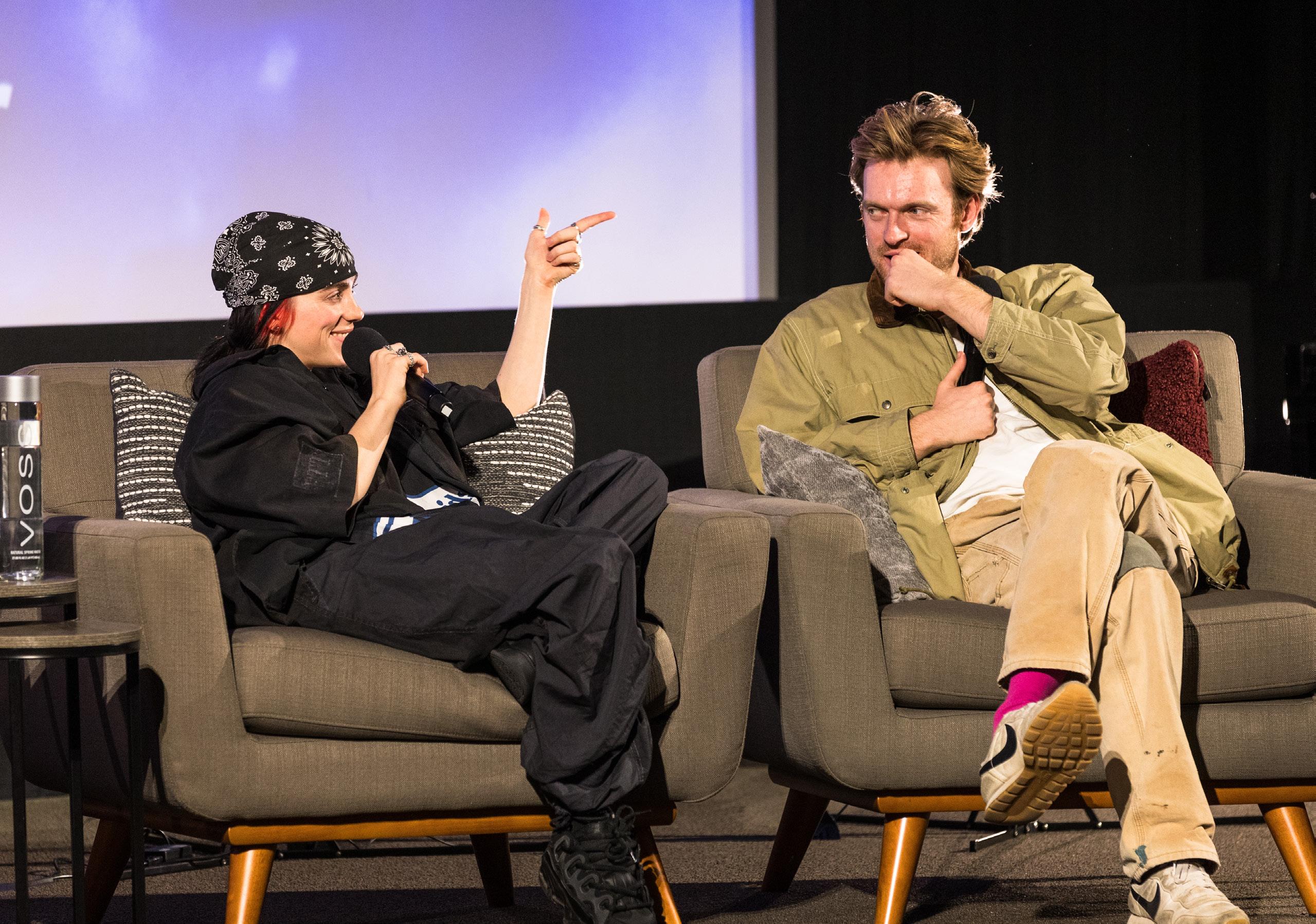
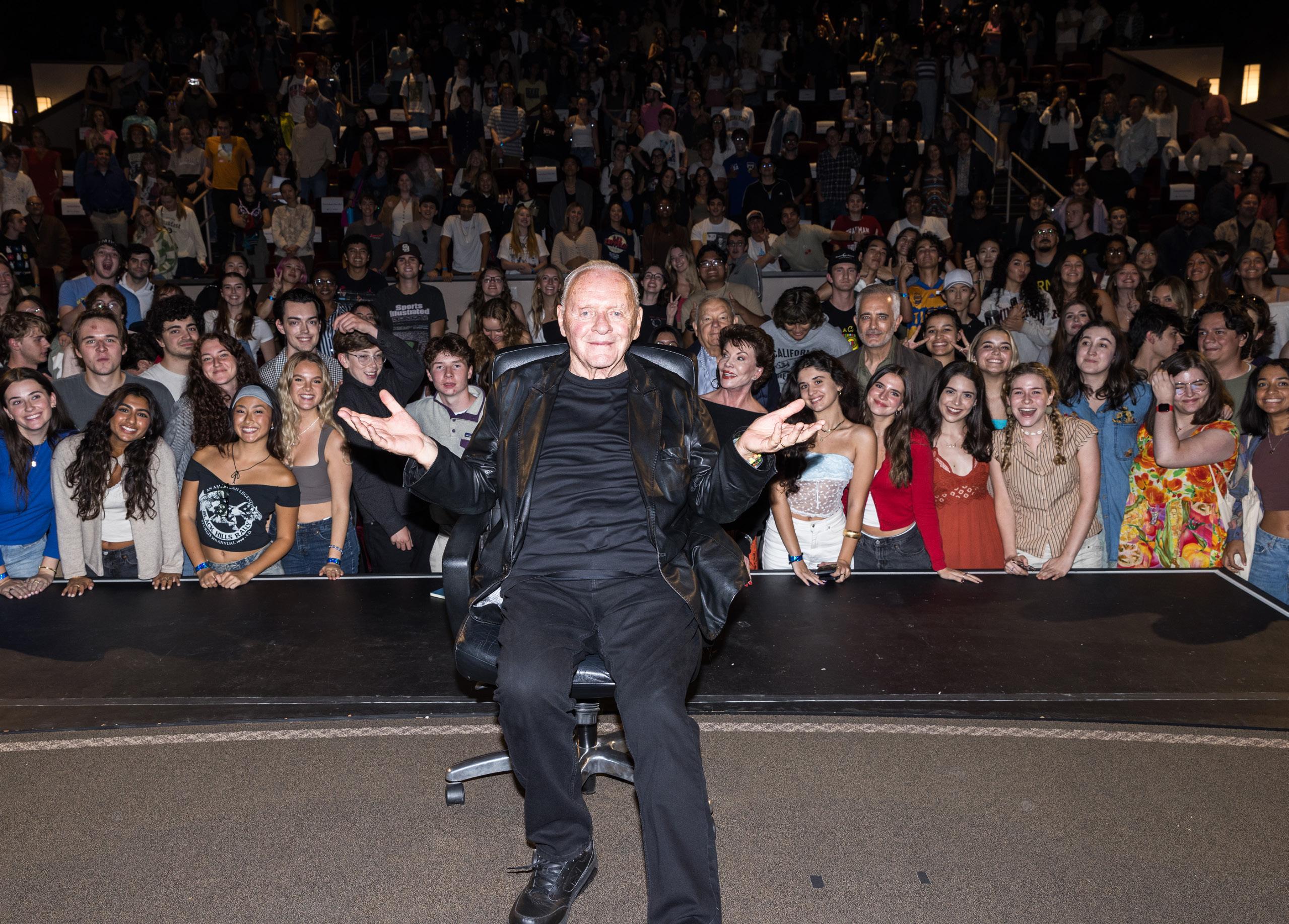
Although these are high profile guests, Jennings said it may be an improvement to have two nights of the event with either a standby or lottery style entry to allow for more students to benefit from their attendance.
Galloway said, with the exception of Squid Game, every student waiting in the standby line for admission to these master classes were able to obtain a seat.
“Actually, with Billie Eilish, we had ten places because people thought ‘I’m never going to get in.’ And they did,” Galloway said.
One look from inside the Folino Theater on the night of a master class makes Chapman’s eagerness overwhelmingly evident.
“A lot of people say that the industry is kind of in a decline and I think that these master classes prove that wrong,” said Jennings.
“I think that there’s a ton of work out there for people our age entering the industry, and it just gives me hope.”
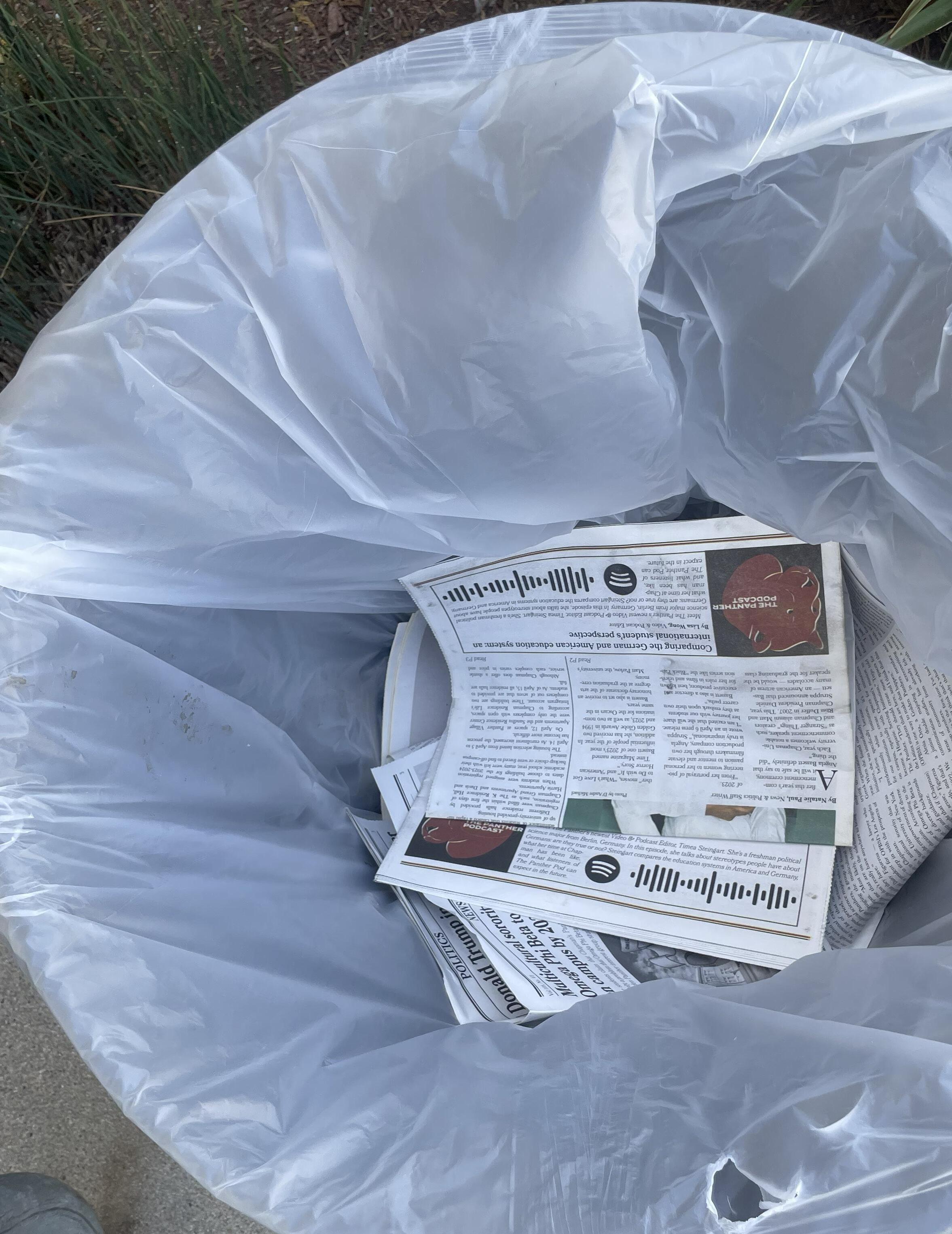

Read on to hear thoughts towards the decline of print news
BY CAMERON SCHERER
After working on one of her high school’s magazines, Sukhman Sahota wanted to pursue the journalism industry.
The senior communications major’s desire came from working on print journalism. Now, she works as the creative director for Chapman’s student paper: The Panther Newspaper.
“I’m a really big believer in the fact that you need to be holding news to read it,” Sahota said. “You just can’t really get a story as well when you’re not feeling that paper. I really love magazine, and when you’re feeling that glossy paper, when you’re looking at that design in actual time, it just makes a story way more alive.”
When she worked within her high school, a piece Sahota wrote about the experience of being Indian and not conforming to Indian stereotypes elicited messages of praise from people she didn’t really know.
With a digital medium, that experience, according to Sahota, may be less available.
“I think that comes with the fact that there is such an experience when you’re holding, you’re touching, you’re reading with your eyes on paper rather than your phone,” Sahota said, “and that sort of interaction is just completely different than reading something online.”
While she does feel that reading digital journalism can eventually provide that same experience, she struggles to see it occurring currently.
But in the current digital age, is that type of engagement with print still possible?
At Chapman, with developments regarding Student Government Association (SGA) funding, it may not be.
Print copies of the New York Times, the Orange County Register, USA Today and The Panther used to be available at newsstands across campus.
However, according to Nik Janke, the director of finance within the SGA, funding for print news is not the same as it once was.
“We had a USA Today subscription for campus use that SGA was funding,” Janke, a senior business and political science double major, said. “We got rid of it because it was just really expensive and no one really used the print paper.”
Last year, the subscription cost the SGA approximately $28,000, with almost the entirety of that cost going towards print copies of the paper. Students still have access to digital news from the outlet, but SGA has a cost that’s $23,000 cheaper.
SGA has also removed print copies of the Register and the Times.
Chapman’s own trends may be part of an industry-wide shift.
A 2023 report from Northwestern University’s Medill School of Journalism showed about 3,000 local newspapers nationwide have ceased operations in the past 20 years.
In the past century? Newspapers have declined by about 18,000.
To Ashley Kuckler, who serves as the editor-in-chief of The Panther, digital journalism is the “new age,” but there’s still a place for print.
“If you’re going to have something be a print version, it needs to serve a purpose,” Kuckler, a senior broadcast journalism and documentary major, said. “It needs to have an intention, as opposed to in the past when everyone would receive their daily news via mail, now it’s transitioned into digital. So I think print editions can still have the impact on a community, (but) there needs to be an intention behind it.”
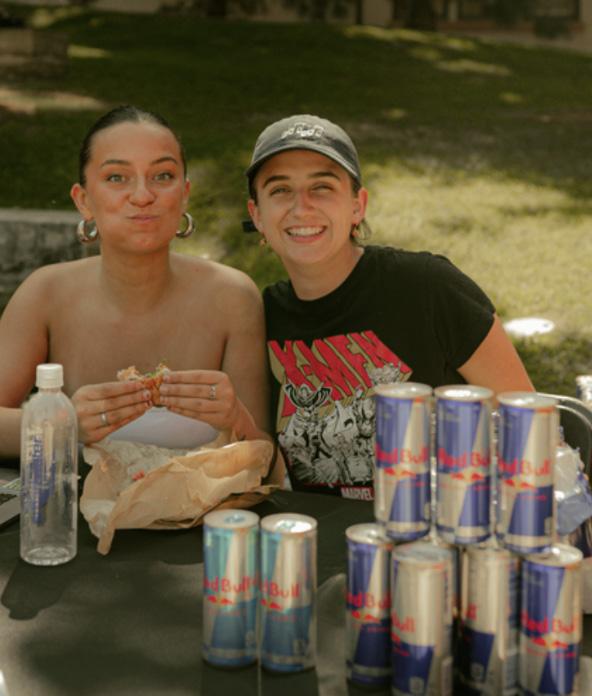
The Panther releases two print editions each semester. The editions focus on big news stories and conflicting opinion pieces, among stories that best serve the Chapman community. Print copies of the paper showcase the best of what the outlet has to offer.
To senior communications major Jule Donovan, The Panther’s digital marketing editor, the print edition is important from a marketing perspective.
“I can’t reach every student through the Internet, through our website, through Instagram,” Donovan said. “The idea of like when we were tabling in the piazza being like, ‘Take this and read it,’ from a marketing standpoint, it gets more eyes on it than I would say people who are invested in the news on their social media platforms.”
To Donovan, marketing The Panther through only digital means is not a realistic model for attracting new viewers. Print editions for local outlets, to her, are important in spreading awareness of their existence.
“Even going into places in the Circle and seeing the (Orange County) Register, I would not know that that was a thing,” Donovan said. “I’m not a journalism student, I don’t particularly lock in on local news and I would not know that that was a thing if I hadn’t seen it sitting out at coffee shops. And I’m sure that people have the same feelings about The Panther, too.”
Angelina Hicks, a Chapman journalism department lecturer and adjunct, said the digital move signifies an ability to post news immediately. By working digitally, both time and money are saved.
That quick spread of information, though, is a double-edged sword.
“Anyone has access to posting anything at any time that can spread really fast,” Hicks said. “So while there are those great tools for journalists and news outlets to get the information out really quickly, there’s also that same opportunity for people to spread incorrect information, whether that be on purpose or not, and that can also travel just as fast and spread just as widely.”
Sahota mentioned the importance a digital model has in regards to audience distribution.
“I think it would be completely kind of dumb for a publication to not have that digital access to their issues and to their articles,” Sahota said, “because that gives them such a big reach.”
To Hicks, knowing that a story would be printed — and that any corrections would necessitate a reprint — created a strive for accuracy, as corrections are easier to enact online.
“I think that that was a benefit of having things physically printed that we’ve lost a little bit,” Hicks said. “Even inadvertently, knowing that you can make corrections really quickly and easily might have lessened that concept of, ‘Let’s make sure this is 100% perfect before we hit publish.’”
Despite Jadon Sand placing importance on physical media and its protection, the digital model is one that the senior screenwriting and public relations, advertising and entertainment marketing double major found his family gravitating towards.
“
It’s much easier to find specifically what you’re looking for on the Internet, people don’t have the time to flip through a newspaper, find that one article they’re interested in.
-Jadon Sand, senior screenwriting and public relations, advertising and entertainment marketing double major
“I know that when my family picked up newspapers back in the day, we didn’t really read them, and definitely did lean more towards finding individual articles online,” Sand said, “which I feel like is generally the way to go.”
To Sand, online journalism presents itself as an easier medium to give audiences what they want.
“Part of the problem is kind of a consolidation of people’s interests,” he said. “It’s much easier to find specifically what you’re looking for on the Internet, people don’t have the time to flip through a newspaper, find that one article they’re interested in.”
While acknowledging the cons of a print model, Sahota emphasized her passion for experiencing news through a physical medium.
“I would hate to see a world where we’re just digital and we’re not print,” Sahota said, “and people don’t see it and they never interact with paper and with glossy paper and feel those sort of sensations that do come with a print edition of journalism and a publication.”
To Kuckler, however, print news has had its time.
“I think that the future of journalism is digital,” Kuckler said, “and I think it will continue to evolve, because I still think there’s a hunger for news. I don’t think it’s print… but wherever (the industry) goes, I hope it’s okay.”
By Brian Guevara

Senior Jackson Jennings’ life changed when he put his FFC class in his cart four years ago.
“If I didn’t take that class I wouldn’t have met my best friends I’ve met in college,” he said.
Not everyone can be as lucky as Jennings with their First-year Focus Classes, but they are designed to increase the chances of freshmen finding their place on campus. These classes aim to get freshmen used to college life, both academically and socially.
But some of these classes seem a bit odd to students at first-glance, as if the university threw darts at a board with two different words and decided to make a class out of the results.
Slavery in Film. Racism in Shakespeare. (Dis)alienated Bodies.
According to Dr. James Brown, professor of the FFC class “Who Are You and What Will You Fight For?,” the classes are made that way on purpose.
“One of the purposes of FFC classes is interdisciplinarity,” said Brown. “Is life siloed into different disciplines? No.”
That interdisciplinarity has helped students like senior broadcast journalism major Czerena Bayle adjust to college-level academia.
“It was a great class overall to broaden your viewpoint as a student,” said Bayle, who took Brown’s class.
Brown has been teaching this FFC class since 2004, and has a specific format to his classes.
“The first part of the class is about developing your sense of identity,” he said. “Then the second half goes into history, genocide and how hard you’ll fight for what you believe in.”
Developing students’ writing and research skills is the primary goal of these classes, which are only offered to freshmen. But not all students find value from their FFC classes.
Class of 2024 alumni Daniel Eyal did not find his class effective.
“My FFC class was an absolute waste of time,” he said. “It was just based on writing a singular essay. I could be doing anything else with my time.”

“One of the purposes of FFC classes is interdisciplinarity”
-- Professor James Brown
Still, the popular opinion among students is that at the very least, the classes they took were memorable. This was the case for Jennings for multiple different reasons. Sure, he found his lifelong friends and current roommates through that class. But the topic, “Racism in Shakespeare,” appealed to him as well.
“It gave me a reason to read Shakespeare and deeply understand it,” said Jennings. “I can now say that he was actually very progressive for his time and back it up.”
A lot of times, though, students don’t really know what they’re signing up for. The mix of unique names for the classes, as well as the fact that the people signing up for these classes are freshmen, make for a lot of shots in the dark.
“I knew Dr. Brown from a tiktok that went viral where his students surprised him,” said Bayle. “If the students cared enough about him to do that, I figured he’d be a great professor.” Jennings was in the same boat. So was senior communications major Mia Armstrong.
“The class I picked fit into my schedule and I was interested in the subject matter enough so I figured it
would be good,” said Armstrong. Whether or not students enjoyed their FFC class, one thing that rang true with many was that they didn’t really think much of it going in.
Dean of Students Jerry Price attributed this, along with a possible general disinterest in these classes, to the assignment of the classes to professors.
“I don’t think we’re doing a very good job of getting students to buy into it,” said Price. “They’re taught now by more of our newer faculty, and I think that it just doesn’t create the same consistency.”
Brown, who has been teaching his FFC class for two decades, has found that more students are invested in his classes than before. Price shared this sentiment, explaining that all professors are bound to get better at teaching their classes with time.
At its worst, students may think their FFC is a waste of time and three credits. But at best, they are classes students won’t forget anytime soon.
“It’s a class that shaped a lot about how I viewed other people and even myself,” said Bayle.
“My FFC class was an absolute waste of time”

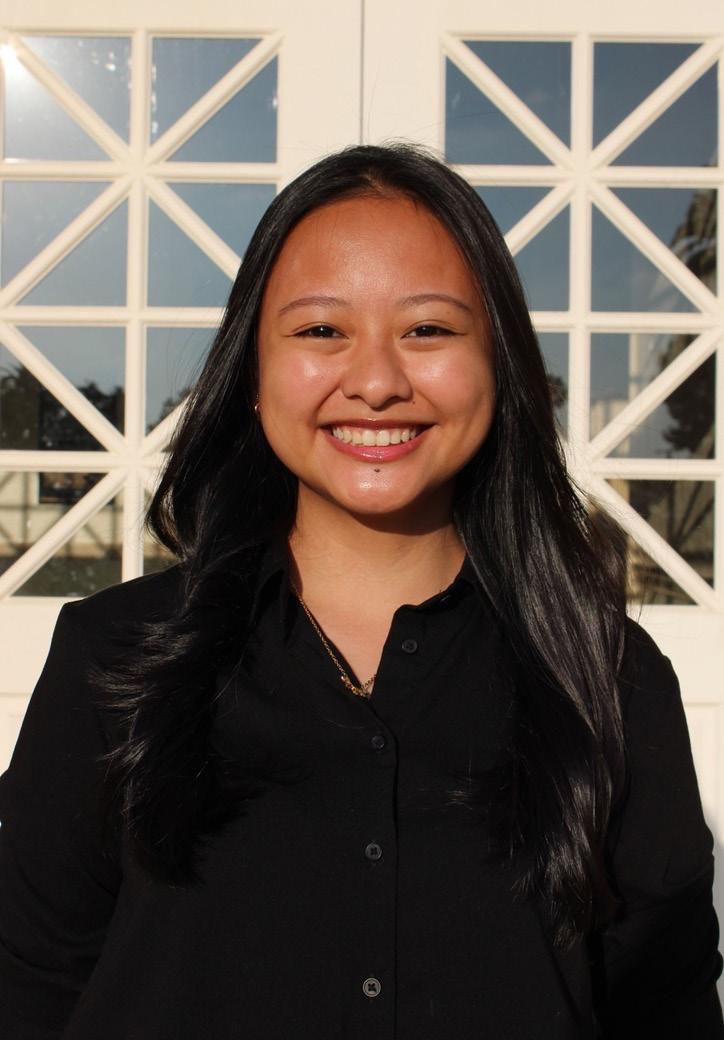
By Ellie Bickelhaupt
Grace Gontarek, a junior dancer and a business double major, was familiar with the stories told during orientation week of alumni who had met their soulmate during their first year, fell in love and started a family.
unique place for relationships. With around 7,000 undergraduates, having a relationship with someone that none of your friends know or have been on a date with is a challenging task.
Zoe Braggs, a junior dance major, is one of those

However, her first college romance was a three-month journey where she neglected her class work and other responsibilities for love. The breakup was a wake-up call, stripping away the romantic illusions.
“I never thought I’d be one of those people who would throw everything away for a relationship, but here I was, trying to balance double majors, dance and social life with my first relationship,” Gontarek said. “I thought I could, but I couldn’t.”
College is an academic institution, but many students invest in more than just their grades. This time can be seen as an opportunity for discovery and exploration in all aspects of life.
A survey of 50 students around Chapman’s campus revealed a shared experience: over 75% had their first serious breakup during their freshman year.
As a small college, Chapman University can be a
students. After meeting her roommates sophomore year, over half of her roommates discovered they had all gone out with the same guy.
“It is so hard to find someone at Chapman, in your last two years of college, that has not been with someone you know,” Braggs said.
The heartbreak of a first breakup can be a significant challenge to overcome. Amidst a breakup, students may focus on other outlets to process or avoid their feelings, turning to the gym, friends or school.
Ayaz Keyana, a sophomore broadcast journalism and documentary major, shares how she dealt with her breakup.
“I fully blocked him on everything— ignorance is bliss,” Keyana said. “I cried for a day, but then I went to the gym a lot more, got busier and eventually forgot about it. Also, this wasn’t a super serious breakup,
but we were together briefly.”
Keyana emphasized the importance of focusing on oneself through a breakup.
“The best thing you can do for yourself is hype yourself up and understand that you’re better without them and what’s meant to happen will happen and come to you,” Keyana said.
Keira Gestel, a junior dance major, went through an all-too-common freshman-year relationship. Afterward, she turned to a multitude of outlets to distract herself from the heartbreak.
“I tried to keep myself busy while allowing myself to feel the feelings and talk them through by journaling or confiding in trusted sources, but know that everything happens for a reason, and you’re one step closer to finding what’s meant for you,” Gestel said.
In addition to simply finding a healthy relationship, how do “cuffed” students manage time with a significant other along with all the other commitments they have to balance?
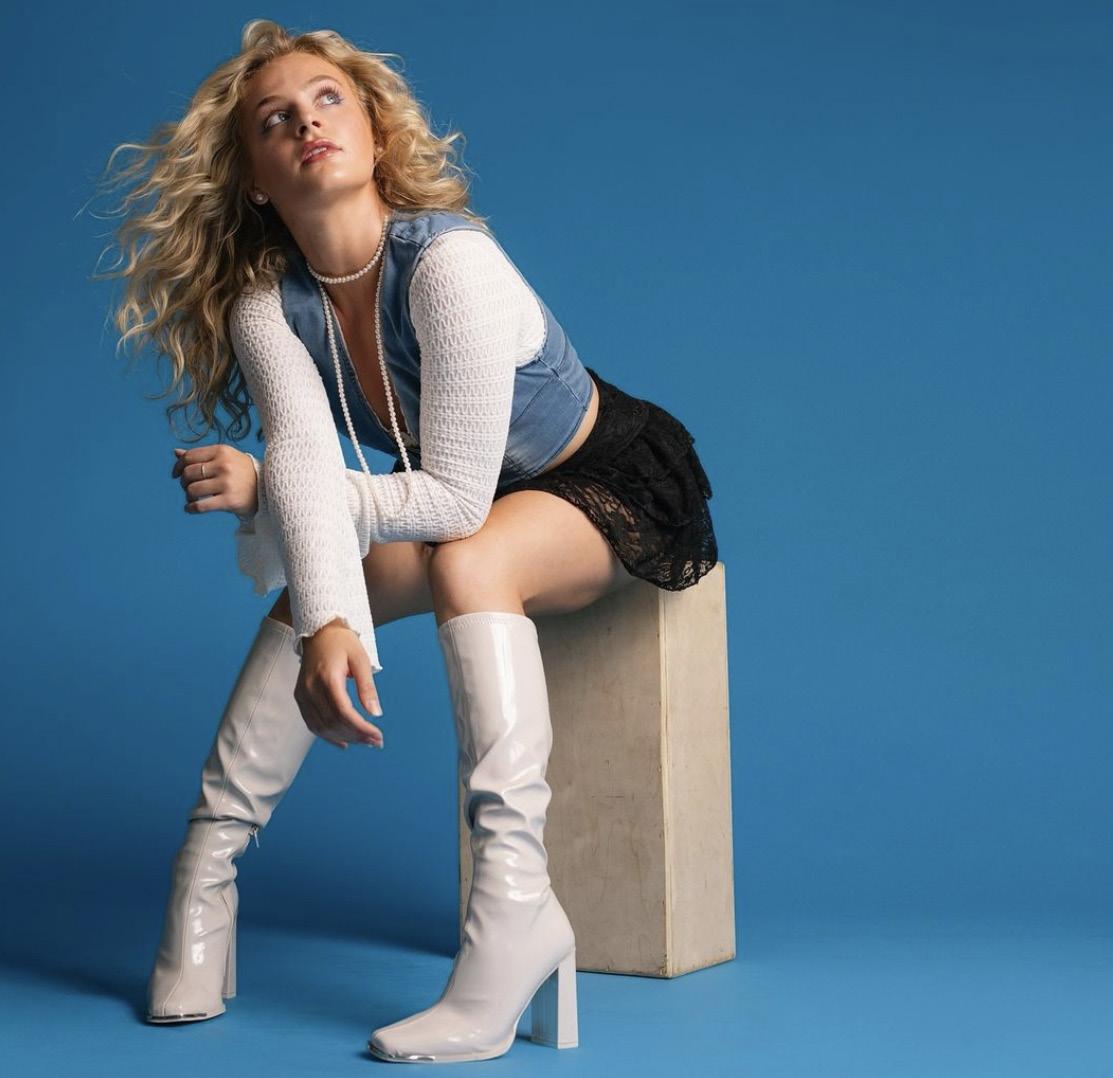
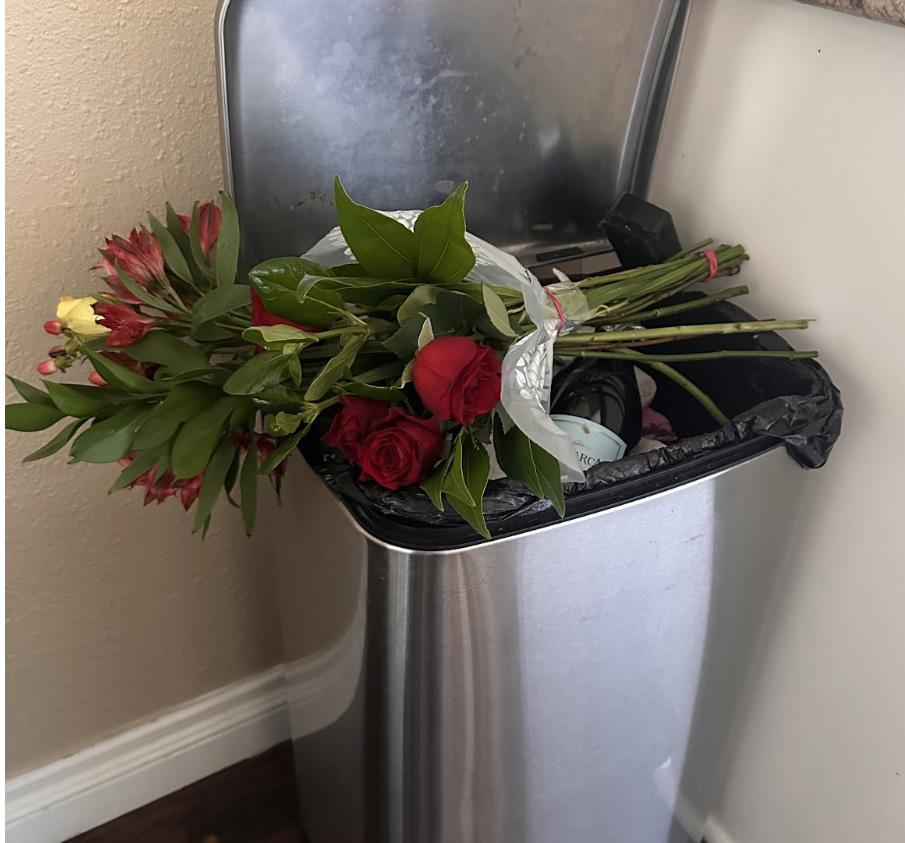
Madeline Southern, a junior peace studies and political science major, gave incoming freshmen this advice:
“The sun will come out tomorrow. Yes, it is nice to be in a relationship, but when all is said and done, your friends are the ones who will be there for you after a breakup ends. Focus on developing those friendships first.”
Breakups, whether the relationship lasted a year or a week, can be a painful part of the college experience. However, with the proper support and outlets, a breakup can catalyze personal growth. Some students have found that their breakups have brought them one step closer to discovering what they truly want for themselves, instilling a sense of hope and optimism for the future.
Grace Gontarek is a perfect example of the sun coming back out. She took what she learned from her failed relationship and has put it forward to grow herself and her other connections.
“I learned so much from that relationship and am so grateful,” Gontarek said. “I learned aspects of myself that I had never realized and what I now want in a relationship. It gets better. It really does.”
How is Chapman’s career advising program providing resources for students to succeed and thrive in the working world?
By Ashlyn Woo
“Where do you see yourself in 10 years?”
Despite how often students are asked this, it’s a question that seems to stump a lot of them. And even if they think they know the answer now, it’s not uncommon for interests to change over time.
From seniors stressing about job applications and meeting recruiters to juniors applying to internships, Chapman offers many resources that equip students with the tools they need to advance in their careers.
Those resources can benefit someone like senior accounting major Tuan La.
“I apply, talk to recruiters, and get rejected. I’m already stressed out from school work and all that, but it also stresses me out when I find a job I like and get rejected from it,” he said.
La has been attending Accounting Society events and uses LinkedIn, Handshake, ZipRecruiter, and other jobs sites to apply for opportunities.
“I utilized the Accounting Society events to gain access to many firms and gave myself the opportunity to not only network with them but also advertise myself for an internship. As you can tell, it has not worked well,” La said.
Senior business and economics major Brian Chu also feels the pressure when it comes to finding a job post grad.
“I tried career advising but it felt like the advisors
were telling me the same things as what my professors told me in class, which is to connect with people on linkedin and reach out to them,” he said.
One of the ways students can connect with job recruiters is through the semesterly Career Fair.
Director of Career Professional Development Andrea Straccia and her team work hard to make sure that the recruiters that show up represent a variety of career fields that students could work for.
Aside from the big campus wide events, Chapman also has a team of career advisors for each college to provide more information to students looking for niche fields of work.
Heidi Girolamo used to be the career advisor for Crean College before switching roles to become Chapman’s CalOptima Liaison Director.
“We try to have some personalized, targeted workshops like graduate application boot camps,” Girolamo said. ”We have events for career exploration where students can figure out what they can do with their health science or psychology major.
Students within the different colleges require different guidance for careers so advisors often get creatives with the resources they offer.
“What I like to do is to not promote the traditional career paths but instead, see how someone with a psychology degree can use that in sales, fashion, or the entertainment industry,” Girolamo said.
Wall of company names that Chapman University works with to provide students with job opportunities. Photo courtesy of

Senior health science major Tammy Bui is on track to attend physician assistant school post grad which involves several requirements like having 1,000 clinical hours before applying.
“It’s stressful, especially since it’s hard to find part-time jobs to accommodate my schedule,” Bui said. “It was hard to find jobs when I was a freshman because some places require one to two years of experience, which I didn’t initially have.”
Unlike other science related career fields, Fowler students are expected to be able to complete technical interviews, which involve coding on the spot.
Samuel Lee is a manager of career services for Fowler students, and former recruiter, which gives him insight when providing students with feedback for the hiring process.
“Technical interviews are almost like the SATs, it’s a standardized test and you don’t know what is going to be on the materials,” Lee said. “So what it really is, is trying to understand how much of the technical expertise you have in the most proficient skill set that you believe you have.”
Business students have different experiences when it comes to their career journey.
According to Elan Divon, Director of Career Development at Argyros College of Business and Economics, networking is the most pivotal aspect of job hunting.
“I think what’s really going to help students get ahead isn’t the resume that checks all the right boxes, but it’s relationships. Having people vouch for you will get you ahead of the line when it comes to resumes,” he said.
Within Wilkinson College and CoPA (College of Performing Arts), students are able to receive more handson and personalized career advising with their career advisors.
CoPA Career Advisor and Chapman alumni Connor Bogenreif said that career preparation for students within CoPA differs from students within Argyros. CoPA works with Disney to provide various career development resources for performing arts students.
Bogenreif tries to be accessible to CoPA students and creates a personalized career path for students. He will also
“ It’s stressful, especially part-time jobs to accommodate
Tammy
”
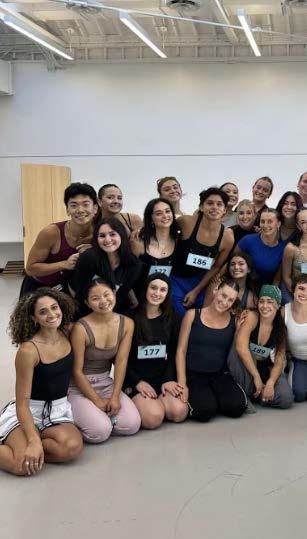
“ especially since it’s hard to find accommodate my schedule
Tammy Bui
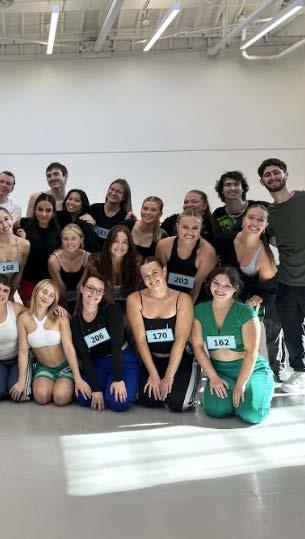
send specific job opportunities that fit what students are looking for.
Senior dance and business administration major Vivian Unkart meets with Bogenrief regularly to discuss potential opportunities.
“Connor is always available to meet whenever I am panicking about what I am going to do with my life, I message him and he gets on an interview with me,” she said.
Senior dance and business administration major Elle Tosh is looking forward to her spring semester classical BFA class. This class is open to all senior dance majors and is a way for them to get connected.
“They bring in a lot of agencies which gives us opportunities to get jobs, bookings, and auditions post grad,” Tosh said. “So Chapman does supply us with the opportunities to audition and get bookings for those agencies which then help us get jobs post grad.”
One of the events CoPA held for students was a Disney mock audition. This allowed students to practice audition skills while receiving feedback.
“For performing arts students, it’s really about being wellversed with both sides, knowing how to interview and audition,” Bogenreif said.
Aside from various workshops, Career Advisor for Wilkinson College Erin Berthon takes students on career excursions where students get to see the operations of the companies.
“I try to do something for every major, whether it’s like an event, career excursion, or a talk,” she said. “I try to think outside the box when it comes to planning career events for students.”
Berthon meets with a lot of seniors this time of year, listening to them stress about post grad opportunities or just life in general.
“Don’t feel like you have to graduate and know exactly what you want to do. If you really don’t know, then get a job that you’re really interested in and utilize the skills you’re good at. It’s a way in and it’s a way to build your confidence,” said Berthon.
By Lindsey Heinecken
Tojunior strategic and corporate communication major Vera Marshall, social media is a constant presence in her life. She feels Instagram tends to be filled with “picture perfect” moments.
“I find myself scrolling for hours on end, I can’t help it,” Marshall admits.
She is just one of the many students that feels the pressure of social media – pressure to match the aesthetics, the humor and the perfection seen on the screen.

Instagram, TikTok and Snapchat have become an essential part of college life. Social media gives students a platform for connection, creativity and self expression, but with all this comes comparison culture.
For students like Marshall, navigating these platforms means spending time trying to find a balance between authentic self expression and the pressure to maintain an idealized image.
Social media platforms tailor the content to the users likes and dislikes, adding into the addiction.
“My screen time is eight or nine hours daily,” said Maya Lin, a junior integrated educational studies major. “I don’t even feel like I spent that much time on my screen, but I get lost in Tikok and Instagram. It’s so tailored to my likes.”
Many students spend so much time online, people can find or lose their sense of self identity due to the presence of social media.
“I definitely do alter my identity based on how I view others on social media and how I want to be perceived by others, especially on social media,” Lin said.
As a college student the pressure to conform to the masses coupled up with the added pressure of social media, can cause a disconnection from reality.
“There is a disconnect between who I am online and who I feel confident being in real life,” said Lin.
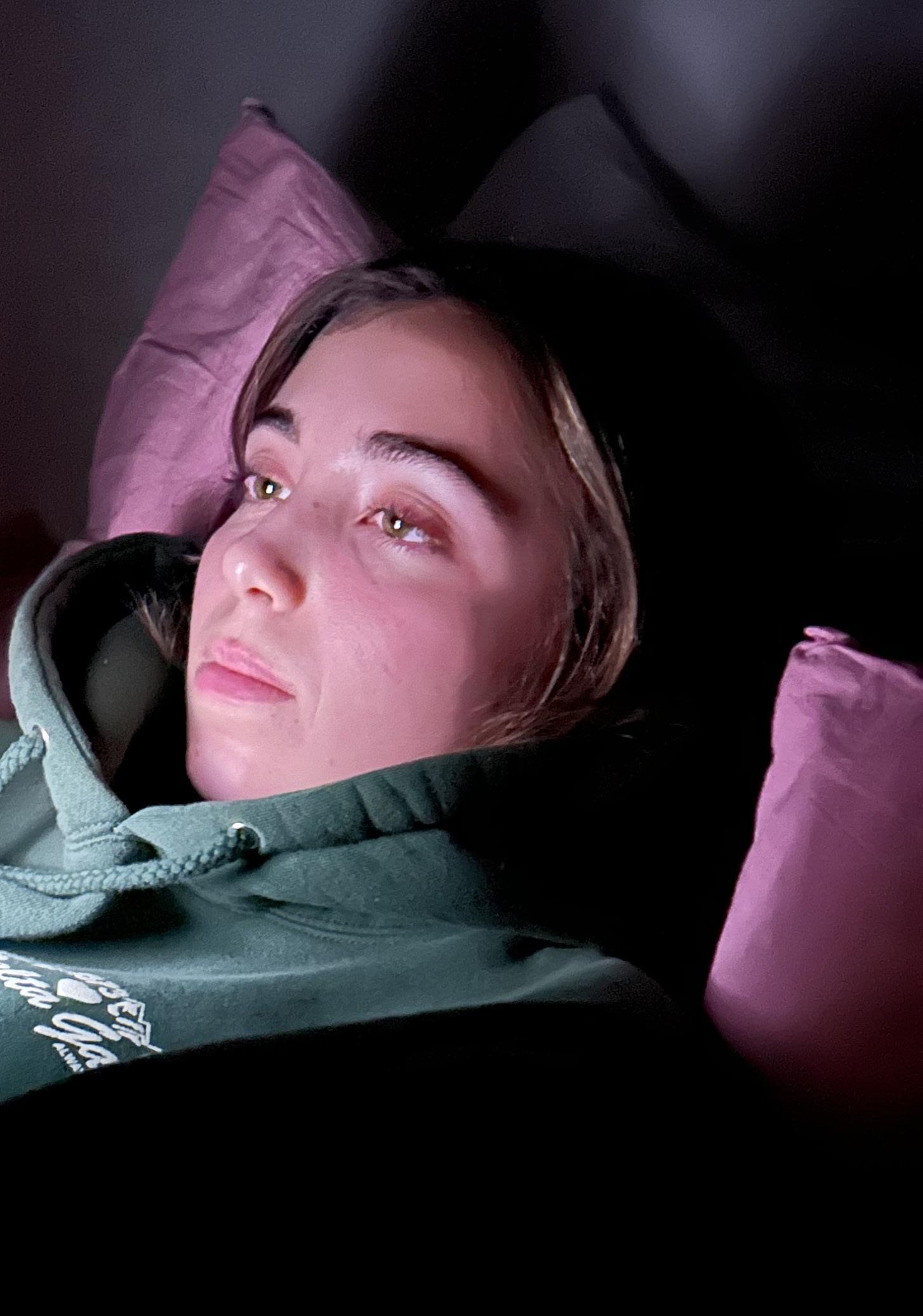
Dean of Students Jerry Price has seen this disconnection from reality manifested on campus,
“Our students have a very difficult time communicating with roommates, creating enormous tension and anxiety in those spaces,” he said. “On a scale out of 10, interactions that really should be a three feel like an eight.”
Price mentioned that students are set up for failure from high school, losing key social moments for growth due to their phones being a crutch.
Also according to Price, the instant gratification students feel from posting online can be addicting.
“The whole social media thing is neurologically a trap,” he said. “There’s no reason for the three dots you see when someone is texting you. The only reason they exist is to keep you watching your phone.”
Lin found herself caught in this trap as well, but instead of the three dots it was the instant gratification she got from “likes.”
“I find myself getting excited, and it makes me feel good when people comment on my posts,” she said.
“The whole social media thing is neurologically a trap”
Jerry Price
specifically in the way students communicate with each other.
The rush that comes from “likes” makes it all the more difficult to disconnect. There are many different ways to disconnect but it often takes an active step to do so. Junior business major Kalen Standifer said it requires motivation to step away from his phone.
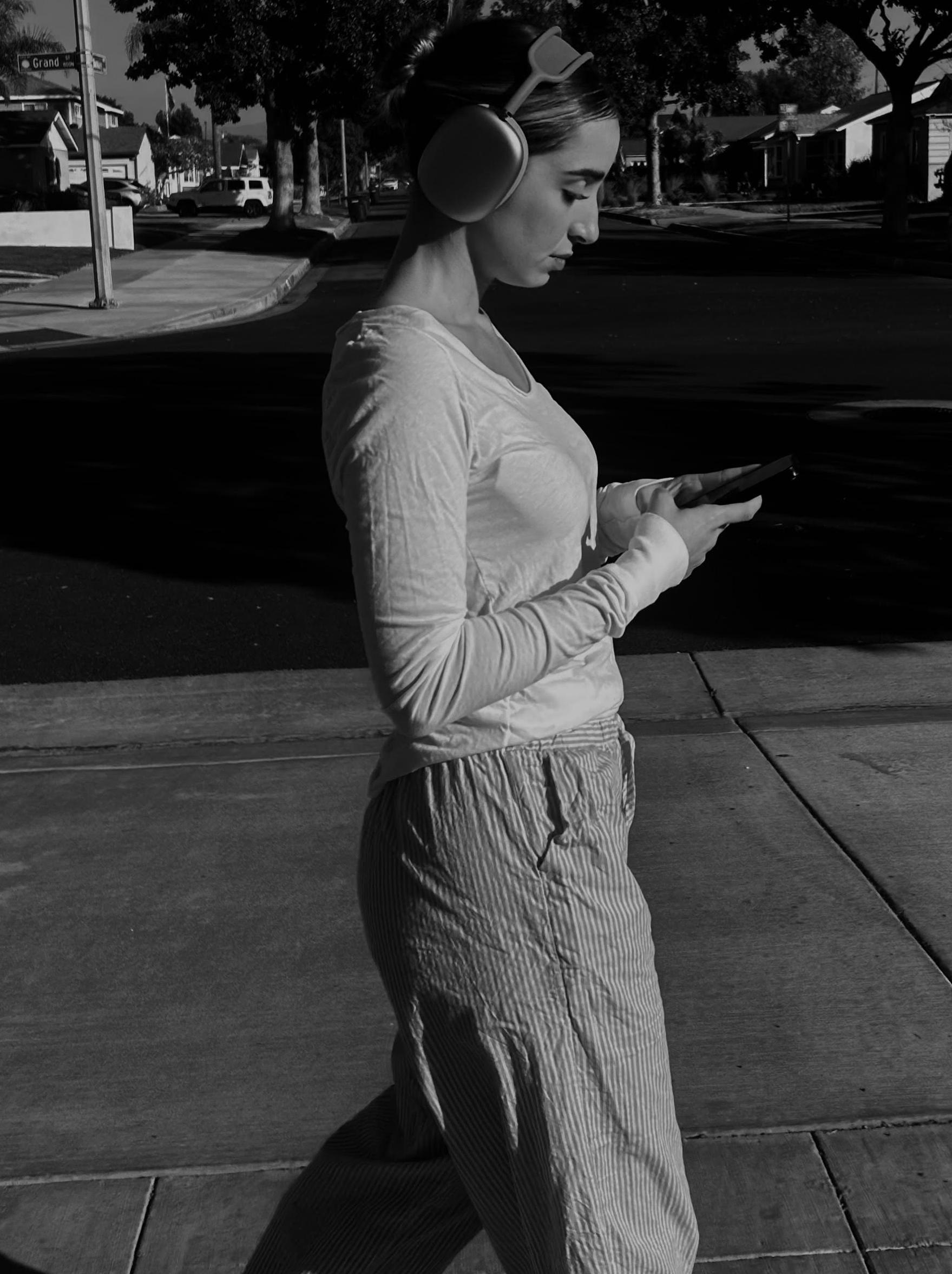
“I carve out time in my day to be disconnected, whether that be not bringing my phone with me to study, or even to class, my best success when disconnecting comes from deleting social media apps from my phone,” Statifod said.
Taking the active step to disconnect is often the hardest as it requires breaking a habit.
Junior public relations and advertising major Gina Roth knew she had to make a change, though, and has no regrets.
“I spent so much time doom scrolling, I wasted so much valuable time on [Tiktok]. I will never download it back, my life is so much more fulfilled now,” Roth said.
Doom scrolling is often used to describe when a user is scrolling, consuming media that amplifies negative emotions and just can’t stop.
Sophomore Sopfia Ruliffson, struggles with doom scrolling as well.
By connecting screen-free time to a tangible outcome like planting trees, the app creates a positive reinforcement loop that encourages her to stick to her goals.
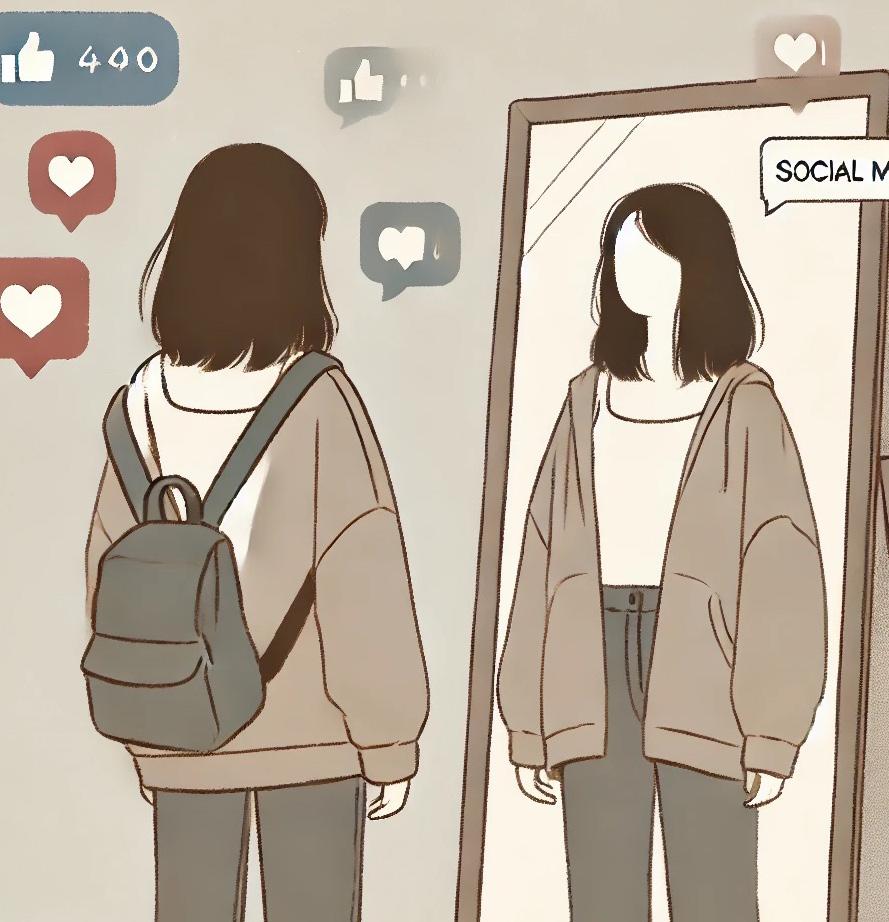
The goal of these apps is to notice small accomplishments over time, giving the user a stronger sense of accomplishment everytime they use it with the end goal of having a larger impact on productivity and overall mental wellbeing.
Roth said that in ten years her relationship with social media will ideally be more transactional.
“I spent so much time doom scrolling, I wasted so much valuable time on [Tiktok]. I will never download it back, my life is so much more fulfilled now”
-Gina Roth
“I get so locked in it makes it hard for me to concentrate on my work,” Ruliffson said.
Ruliffson uses an app called Flora to help curb her addiction and increase productivity.
“I set a time, for example 30 minutes and it locks away my screen,” Ruliffson said. “If I break the lock it kills a tree and if I complete the time it plants a tree. It’s silly but it motivates me to get off the screen.”
“I don’t use TikTok now and I hope to edge out my relationship with other media apps,” she said.
As far as what students can do to overcome social media addiction easier, Price believes he may have found a solution.
“People will realize when you have meaningful interpersonal connections, the draw of social media is less,” Price said.
